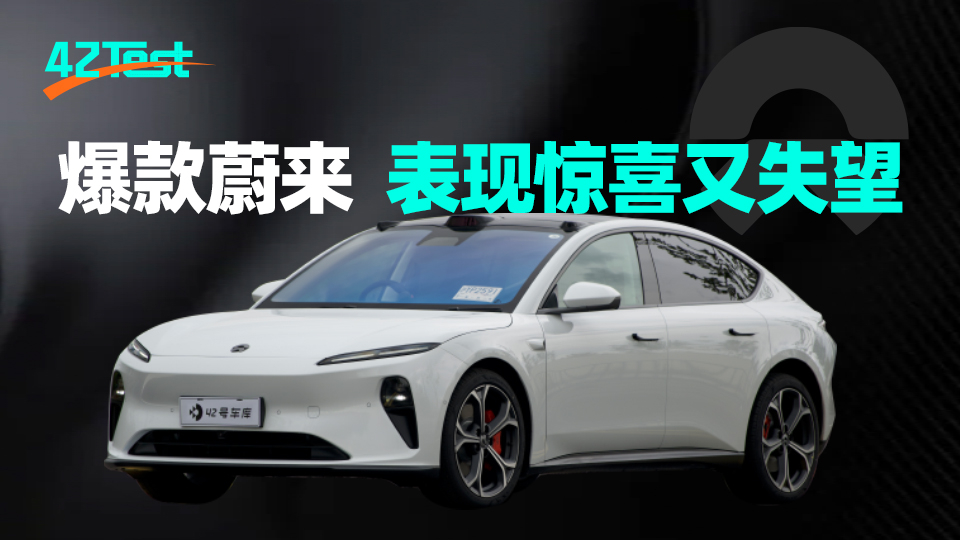Do you remember the NIO Day last year, when NIO officially launched the ET5, the second new car on the NT 2.0 platform?
That evening may have been the most high-profile evening since the establishment of NIO. WeChat groups, friends’ circles, and various platforms, whether or not they are concerned about the automotive industry, all reposted the news of the release of ET5.
ET5 is able to stand out for several reasons. In addition to the starting price of 258,000 yuan after BaaS, which makes it the cheapest model in NIO’s history, its configuration, which is not much different from the ET7 on paper, also makes it the most cost-effective among NIO models.
So, is this “god-like car” that once “dominated” friends’ circles really comparable to its big brother ET7 in all aspects? We will also use the 42Test standard to evaluate ET5’s real capabilities from the dimensions of city/highway endurance, charging speed, and performance.
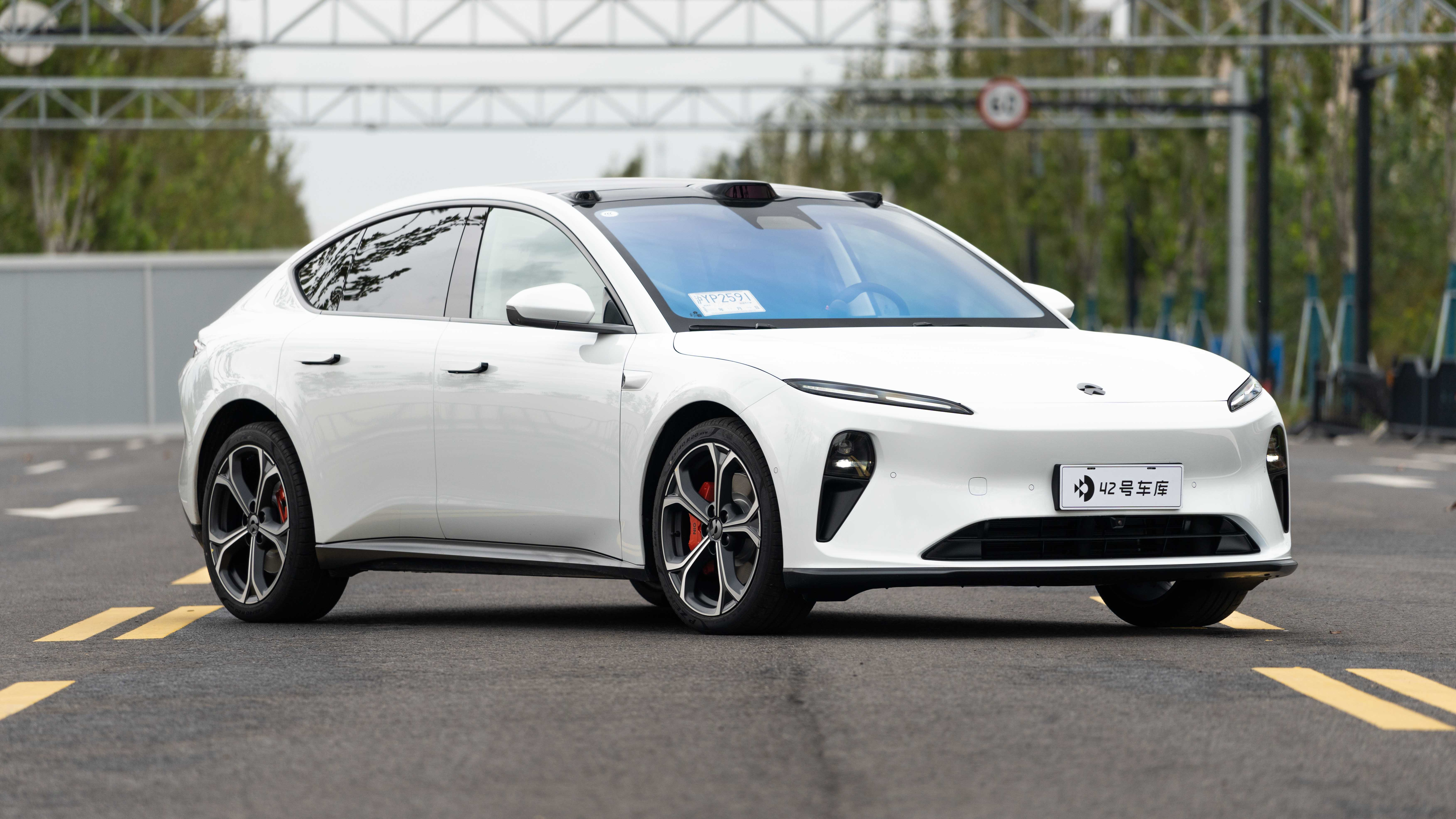
Endurance Test: Is the 75 kWh Battery Enough?
For this 42Test, the car model version is the NIO ET5 75 kWh battery version, equipped with a 20-inch five-spoke flower racing wheel rim, and the official CLTC comprehensive working condition endurance is 500 km.
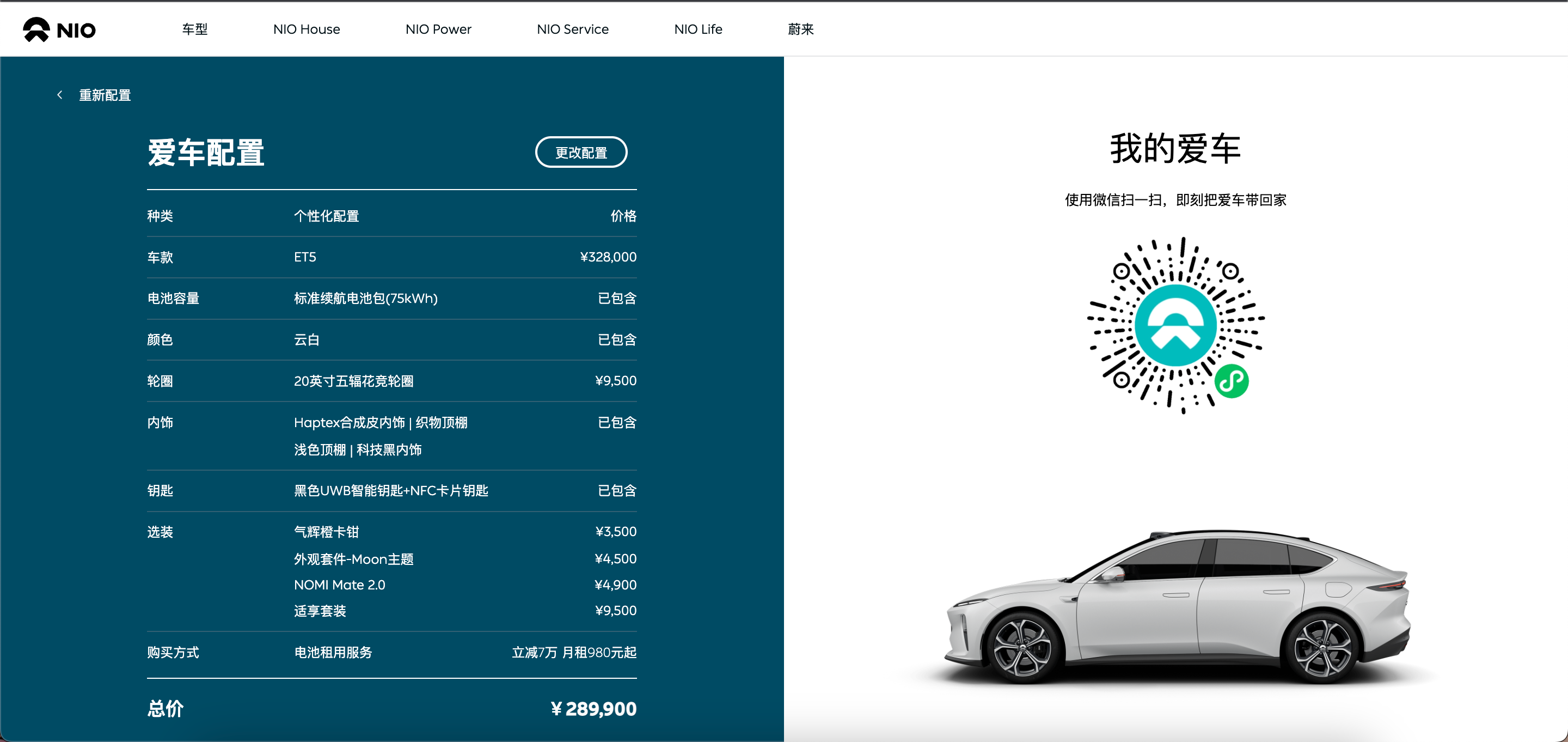
According to the 42Test standard, the endurance test will be divided into “highway working condition” and “city working condition”. The NIO ET5 battery pack under the battery swap system is still the familiar 75 kWh ternary lithium battery. According to our previous experience testing ET7, the energy consumption control of the NT 2.0 platform has made great progress compared to the 1.0 platform. Now let’s take a look at the actual performance of ET5.### High-Speed Endurance: Unexpected but Expected
According to the tests of other people in the past, the high-speed endurance of 75 kWh ET5 was unexpectedly less than 300 km. With a skeptical attitude, I set out on a high-speed endurance test journey.
The route for the high-speed endurance test was to set off from the company’s underground garage on Beizhai Road with a full charge, drive along the outer ring road onto the G60 Shanghai-Kunming Expressway, then drive all the way towards Jinhua, and finally turn back to Shanghai immediately after exiting Xaioshan East.
On the day of the test, October 26th, the temperature was 24 ℃. The vehicle’s air conditioning was set to the summer standard: 22 ℃, 2nd gear, and AC turned on. The tire pressure was 2.7 Bar both front and back, the comfortable (standard) driving mode was used, and the kinetic energy recovery was adjusted to the standard (maximum).
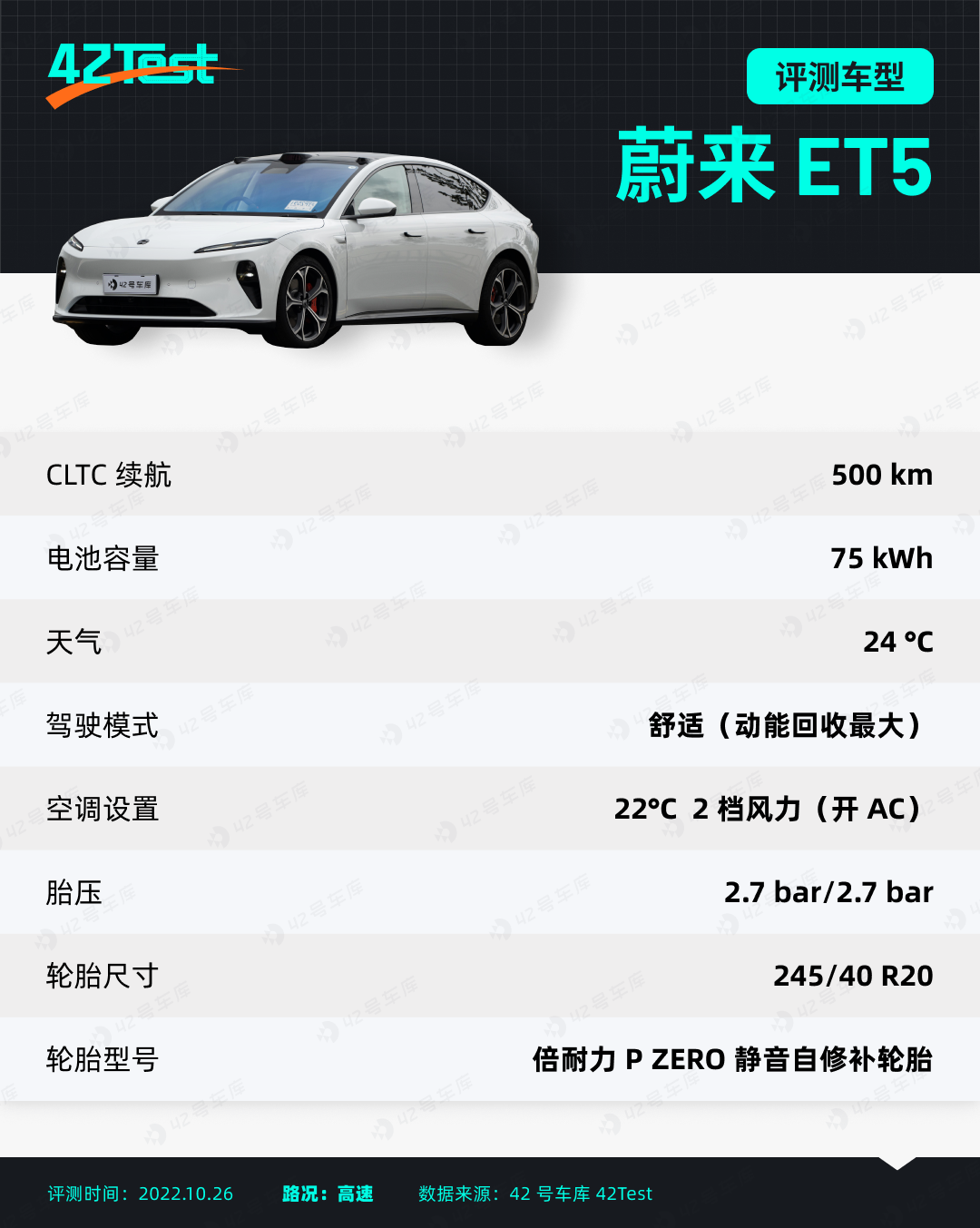
When fully charged, the ET5 displayed a range of 500 km, consistent with the official data. After driving 355 km on the highway, the displayed range was still 26 km. The overall highway condition was relatively smooth that day with only a few short-term congested road sections. The entire journey took 3 hours and 23 minutes, and the average speed was 105 km/h.
The ET5’s high-speed energy consumption is 19.6 kWh, and the ratio of displayed range to actual power consumption is 1:1.34. Based on this data, the theoretical full-charge range for the high-speed condition of the 75 kWh ET5 is 373 km.
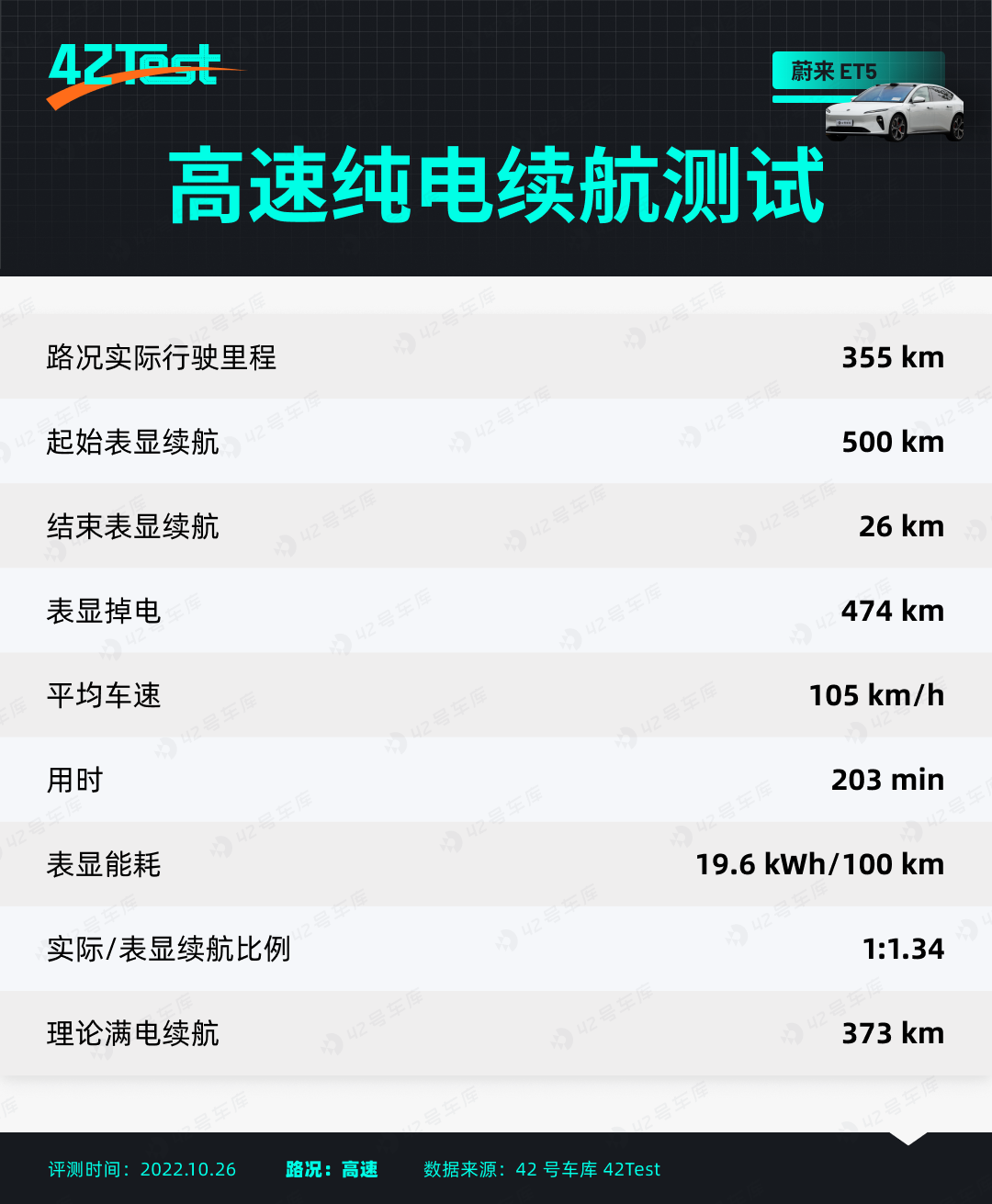
For a dual-motor sedan with a maximum power of 360 kW and acceleration of 4 seconds per hundred kilometers, with a 75 kWh battery, this performance is above average.Horizontal comparison shows that the energy consumption of a previously tested NIO ET7 100 kWh version under high-speed conditions was 22.8 kWh with a theoretical full-charge range of 439 km. If the ET5 is also a 100 kWh version, the actual high-speed range of the two vehicles should be very similar.
City Range: Surprisingly More Energy Consuming than High-Speed?
If you think the high-speed range of the ET5 is acceptable, then the actual range under city conditions may not be optimistic.
According to the testing standards of 42Test, the city range test consists of two parts: first, a 50 km ground road segment that passes through Dingxi Road, Century Avenue, Xuhui Binjiang, Wukang Building and other major traffic routes; second, a lap around the outer ring expressway, which is always filled with heavy trucks, for a total of 100 km.
On the testing day of October 28th, with the temperature at 19 ℃ , the vehicle settings were identical to those of the high-speed range test. The vehicle air conditioning was set to 22 ℃, 2nd gear and AC on. The tire pressure was 2.7 Bar front and rear, and the comfortable (standard) driving mode was used with the kinetic energy recovery adjusted to standard (maximum).
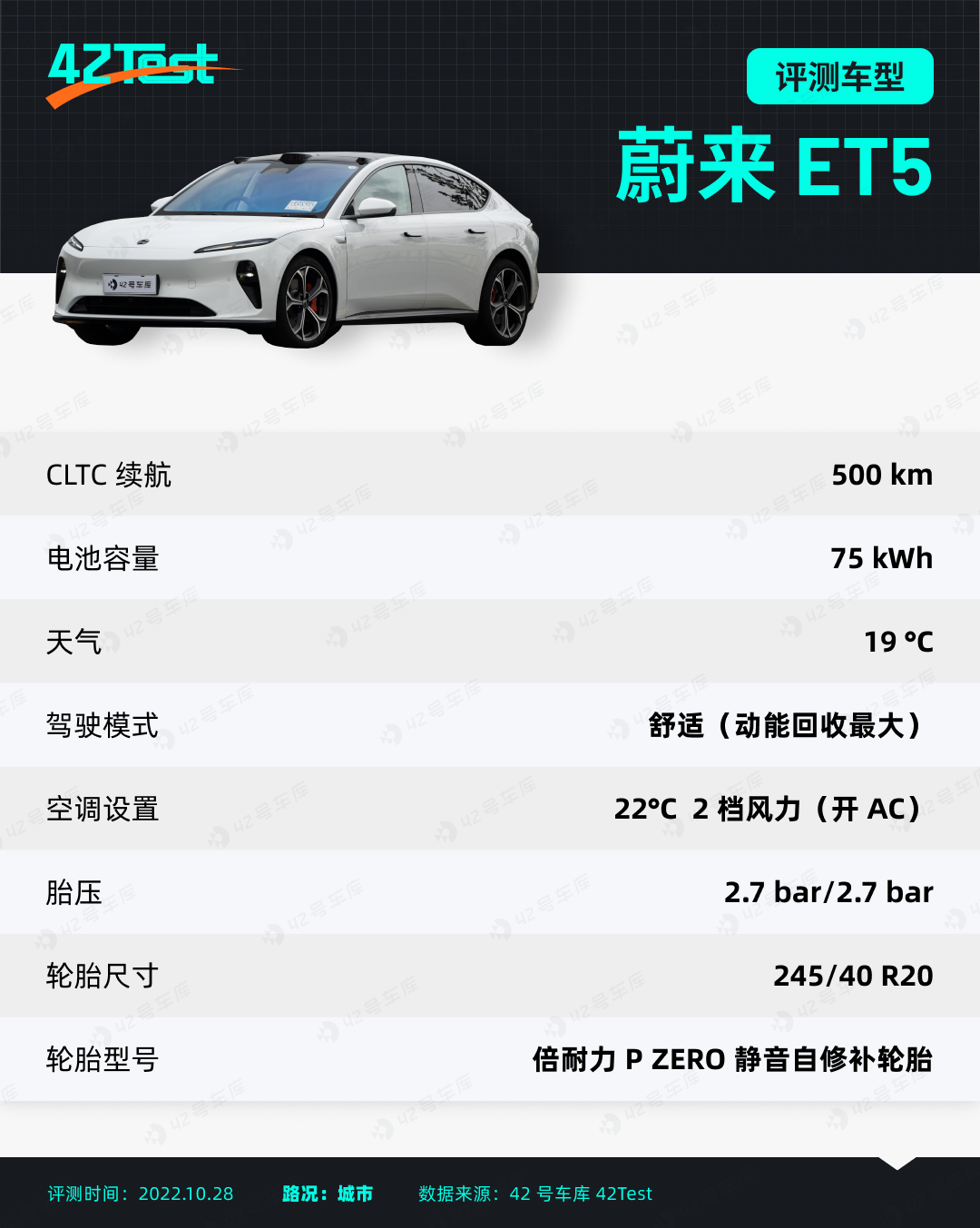
In the city range test section, we actually drove 150 km with a total time of 5 hours and 49 minutes. Due to the heavy truck flow and the large number of traffic lights in the first half of the urban road, the average speed of the entire test process was only 25.8 km/h.
The displayed range of the NIO ET5 dropped by 230 km, and its energy consumption under the outer ring expressway was 17.7 kWh/100 km. However, the average energy consumption when driving on ground roads in the city often exceeded 20 kWh/100 km, and even reached as high as 26 kWh/100 km when the traffic was heaviest. The ratio of the displayed range and the actual power loss value was 1:1.53, with a theoretical full-charge range of 326 km.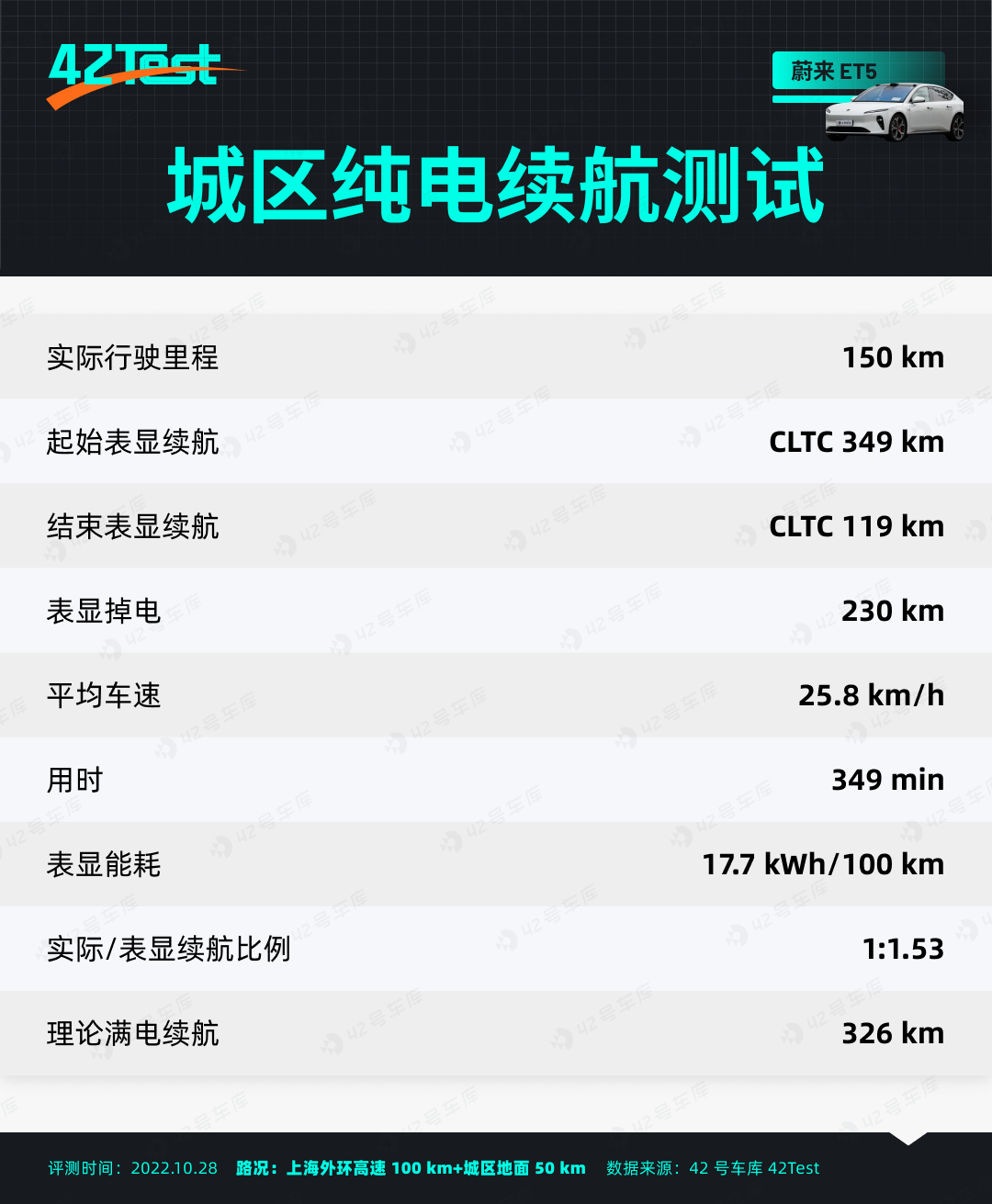
This result is really surprising. It turns out that the energy consumption of ET5 on congested urban roads is even higher than when cruising at 100 km/h on the highway. This means that if daily commuting is the main use, the 75 kWh version may not be able to last a week on one charge, and the 100 kWh battery is a better choice.
Charging Test: Speed is Acceptable, But Battery Swap is More Convenient
As we all know, NIO has promoted battery swap as a convenient alternative to refueling, but sometimes NIO car owners still have to rely on charging for energy replenishment. To test the charging efficiency of the 75 kWh ET5, we went to the NIO supercharging station with a maximum charging power of 180 kW for a charging test.
The test started at 4:25 pm, which happened to be the peak charging time, and we had to wait for a while to get a charging space. Although there may be power reduction due to power diversion, it actually simulates the real situation that people may encounter during daily charging.

As can be seen, the peak power of NIO ET5 can be maintained at around 100 kW when the SOC is below 60%, but the power will gradually decrease after 60%, and the power is only 32 kW at 90%.Due to the smaller battery size, the time to charge from 5% to 80% in 41 minutes is not bad, and even though the power decreases from 80% to 95%, 18 minutes is still acceptable. The total time to charge from 5% to 95% is also kept within one hour. However, the charging power decreases significantly from 95% to 100%, and it takes as long as 15 minutes to fully charge. It is not recommended to fully charge unless necessary.
Here, we have also tested the charging data of the NIO ES7 100 kWh version at the same charging station for comparison.

As can be seen, although the peak power of the ES7 is lower, thanks to the larger battery, it maintains a higher power for a longer time, and the charging time for different stages is not much different from that of the 75 kWh ET5. The time for the last 5% stage even surpasses it.
Overall, the charging performance of NIO ET5 is up to the normal level of the 400 V platform, and it will not take too long to charge. However, it cannot be compared with the models on the 800 V platform. Therefore, the best choice for this car may still be to swap the battery at the battery swap station.
It only takes 5 minutes to fully recover, and its energy replenishment efficiency is much better than that of the 800 V fast charging experience. Currently, the number of NIO battery swap stations is increasing year by year. In addition to swapping batteries in urban areas, many highway service areas have also installed battery swap stations. We believe that many people who buy NIO are also attracted by the battery swap experience.
At this year’s NIO Day, NIO will release its third-generation battery swap station. Can NIO improve the convenience of battery swapping to another level? We look forward to NIO bringing us new surprises this year and welcome everyone to watch the NIO Day conference on our official website together.
Performance and Driving: NIO for Drivers
Driving ExperienceThe feeling of driving ET7 for two days has left me with a deep impression. Although it is a large car with a length of 5.1 meters, it gives people a sense of lightness when driving it. ET5 takes it one step further.
Let’s briefly go through the mechanical parameters of ET5:
- Front 150 kW AC asynchronous motor, rear 210 kW permanent magnet synchronous motor;
- Maximum power of 360 kW, maximum torque of 700 N·m, and a hundred-kilometer acceleration of 4 seconds;
- Front and rear five-link suspension, HRS shock absorber technology
- NIO’s self-developed four-piston front caliper.
As you can see, compared with ET7, some parameters of ET5 have decreased. But thanks to its shorter three-dimensional dimensions and wheelbase, the flexibility of ET5 in actual driving process is significantly better than that of ET7.
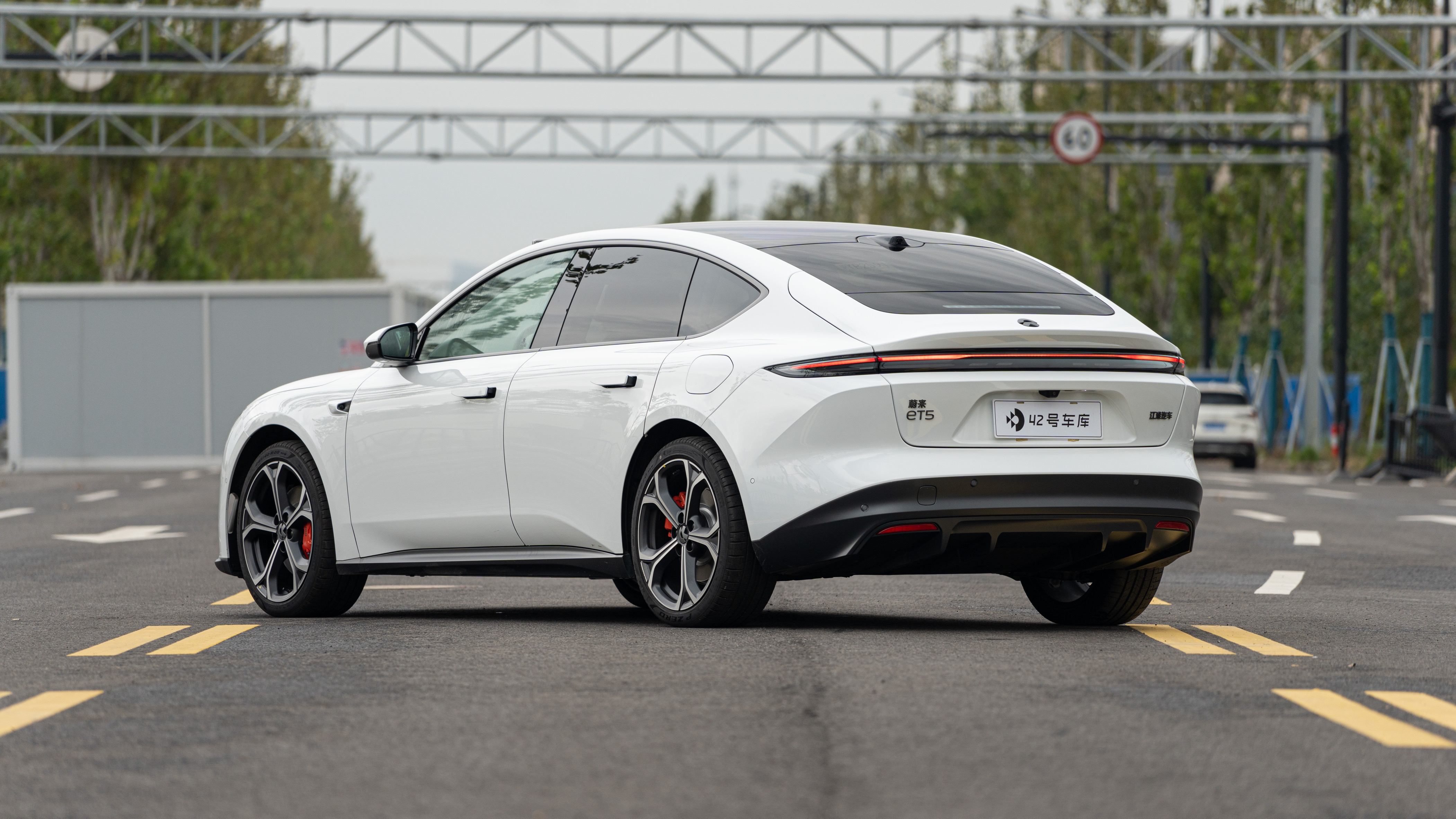
On ET5, you can also enjoy the NIO’s free driving mode adjustment. In addition to the conventional four modes, you can freely adjust the acceleration performance, kinetic energy recovery intensity, and steering feel in the custom mode. According to my personal driving habits, I prefer to adjust the hundred-kilometer acceleration to 5.9 seconds, the kinetic energy recovery to standard (maximum), and the steering feel to standard.
Due to the majority of driving time being used for endurance testing, we can only drive in comfortable mode according to our standard. In this mode, the hundred-kilometer acceleration is limited to 7.9 seconds and cannot be adjusted. But the kinetic energy recovery intensity can still be adjusted.
In actual feel, a 7.9-second performance is completely sufficient for lane change and overtaking in the city, and it can even be said to be the most suitable gear for ordinary people’s driving.The feedback of the accelerator pedal under comfort mode is moderate, neither too hard nor too soft. However, the maximum energy regenerative intensity is between Model 3 and P7. After releasing the pedal, the car regenerates energy quickly, which may take some time to adapt to. Otherwise, passengers may experience dizziness.
As a sports sedan, the feedback of the brake pedal always gives a confident feeling, which is completely different from the lightly floating feedback of P7. During the three-day driving, I also encountered a few emergency braking situations. However, the car always gave me the feeling that it can “stop on a dime”. Don’t underestimate this NIO’s independently developed four-piston caliper.
The suspension tuning of ET5 is more outstanding than ET7. On some road sections, ET7 still feels loose in the chassis, but ET5 has never felt this way. The entire vehicle’s one-body feeling is very strong, and there is no sense of looseness no matter what road is driven through.
To describe the suspension tuning in one sentence, it is sports with comfort. The suspension of Model 3 is notoriously hard, while ET5, as a sports sedan, although with a hard tuning, is not that extreme.
When passing over sections of rough joints or bumps on the road, although the suspension will not isolate the road feeling like those comfort-tuned models, it can also quickly filter out vibrations. It will not require multiple shaking like P7 to filter out vibrations, and the “tough” feeling is always present.
However, this suspension also has a problem. When passing over a speed bump in an underground garage at low speed, it can be felt that although both the front and rear suspensions are five-link suspensions, the feedback of the front suspension passing through is significantly more “springy”, while the rear suspension only gives a “thump” feeling, similar to the suspension feedback of cars below 200,000 yuan. It lacks the sense of luxury when passing through the front suspension.When setting the steering feel to “Stable,” the feedback of the steering when turning will be closer to the “Comfort” turning on the Model 3. However, when you need to make a U-turn and turn the steering wheel to the limit, you will clearly hear a “clang” sound, which I think should not appear in a car at this price.
In summary, as a sport sedan, the ET5 has the best chassis and suspension tuning among NIO models, but it is not as extreme as the Model 3 and still wants to give drivers some comfort. This is the tuning style I prefer.
Acceleration and braking, still reverse pseudo-marketing?
As NIO’s official test data always uses the “half-load condition” and our 42Test performance test uses the “single-person condition”, theoretically we may get better data than the official results. Will the reverse pseudo-marketing still appear on the ET5 this time?
During testing, the remaining power of this 75 kWh battery-powered NIO ET5 was 81%, the temperature was 20°C, and the driving mode was “Sport+.” In a closed scenario, we conducted 10 consecutive 100 km acceleration tests and 10 consecutive 100 km braking tests, with the specific results shown below.
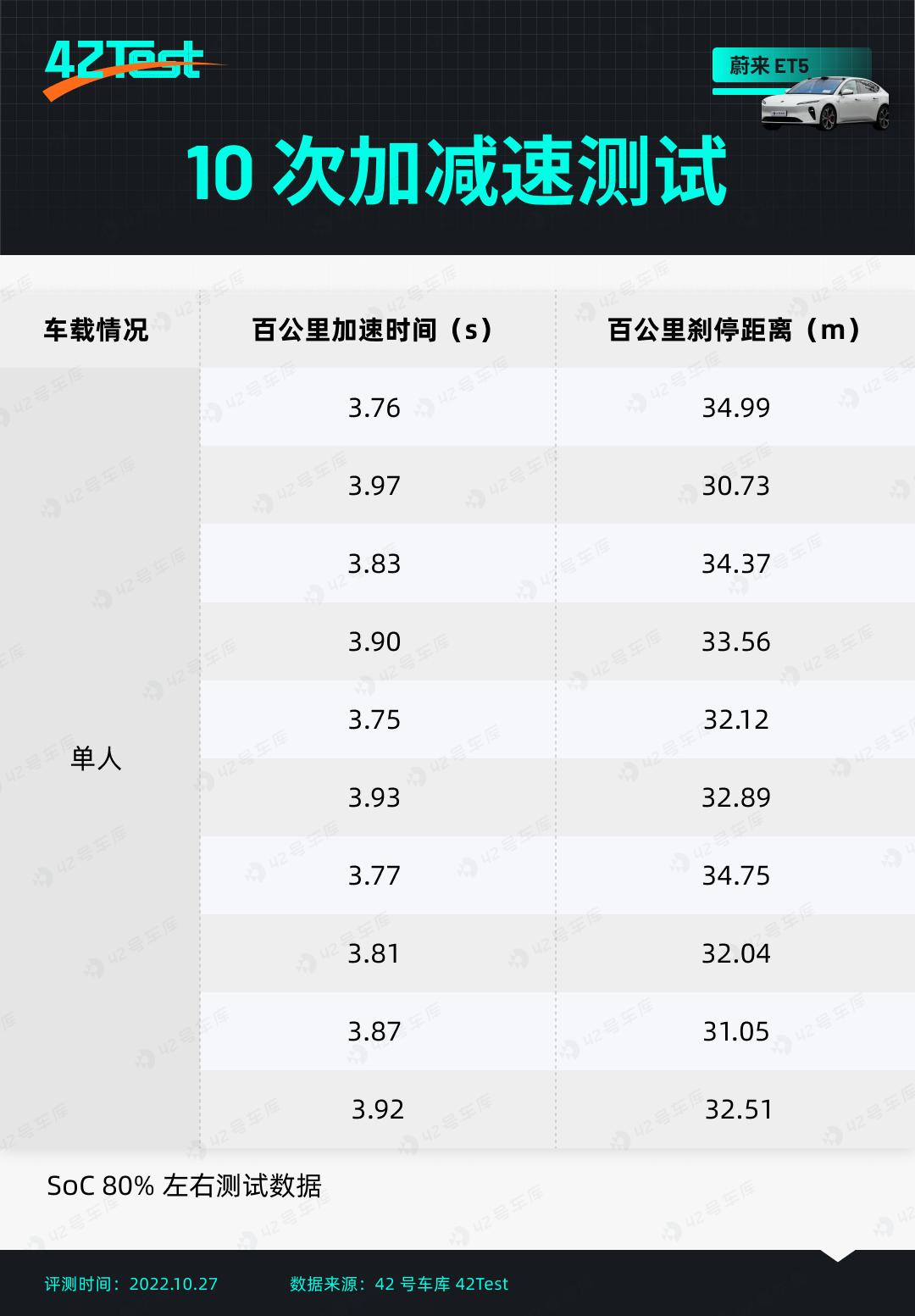
As we can see, the ET5’s 100 km test results did not exceed the official data, and all test results were below 4.0 seconds, with the fastest time even breaking 100 km in just 3.75 seconds, which is definitely at the level of a performance car.
When the ET5 is in full acceleration, although the front of the car, like other dual-motor models, will have a noticeable rise, I did not feel like I was being pushed against the back of the seat like in many “3-second club” models. The entire acceleration process is still relatively linear, which is also a manifestation of ET5’s combination of sport and comfort.
The stopping distance for every 100 kilometers is also impressive, with the shortest one even being 30.73 meters, which is the best among all car models we have tested in recent months. The confidence in braking feedback given by the open road driving was not groundless.
Our car is equipped with front and rear 245/40 R20 P ZERO tires from Pirelli, whose ground gripping performance on dry land is outstanding. Coupled with NIO’s self-developed front-four-piston brake caliper configuration, it is reasonable that the brake performance is excellent.
Moreover, the ET5’s ABS intervention timing is appropriate without excessive release of brake force, and the tires did not skid. The vehicle did not shake violently when it came to a stop.

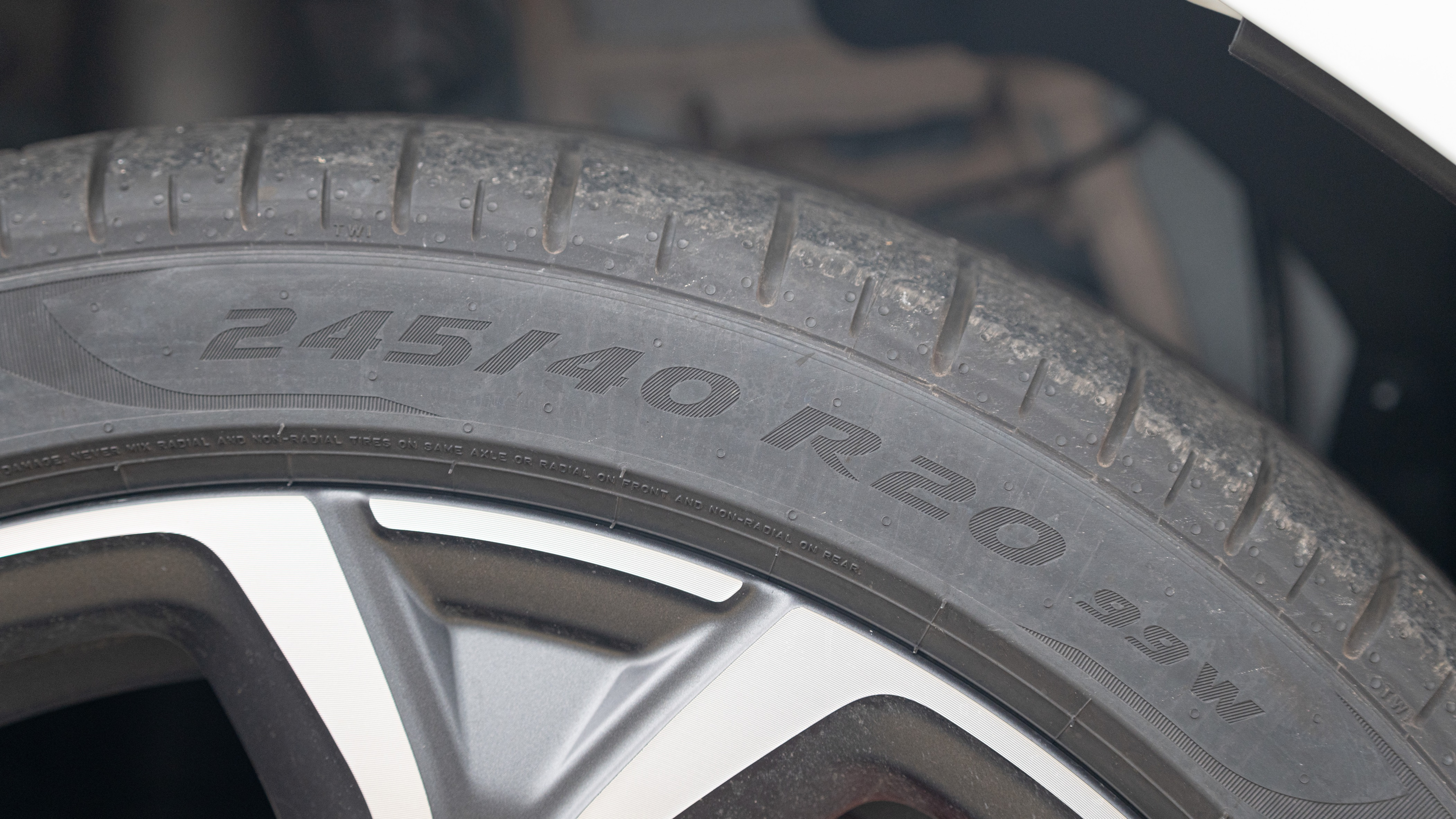
However, it should be emphasized that what we tested this time was the version with the 75 kWh battery. If it is equipped with a 100 kWh battery, the heavier weight of the car body may lead to a decline in both acceleration and braking performance.
Frameless doors + single-layer glass, has the NVH been done well?
Unlike the NIO ET7/ES7, which uses laminated double-layer glass at the front and rear, the ET5 uses single-layer glass all over the car. Therefore, theoretically, its NVH performance may be slightly worse than its two big brothers.During the noise test, we closed all windows, turned off the air conditioning, audio system, seat massager, and cleared any items in the car to ensure an accurate test result. We then drove at speeds of 60, 80, 100, and 120 km/h on a closed road and collected three samples of driver-side noise, obtaining an average value, the specific results are as follows.
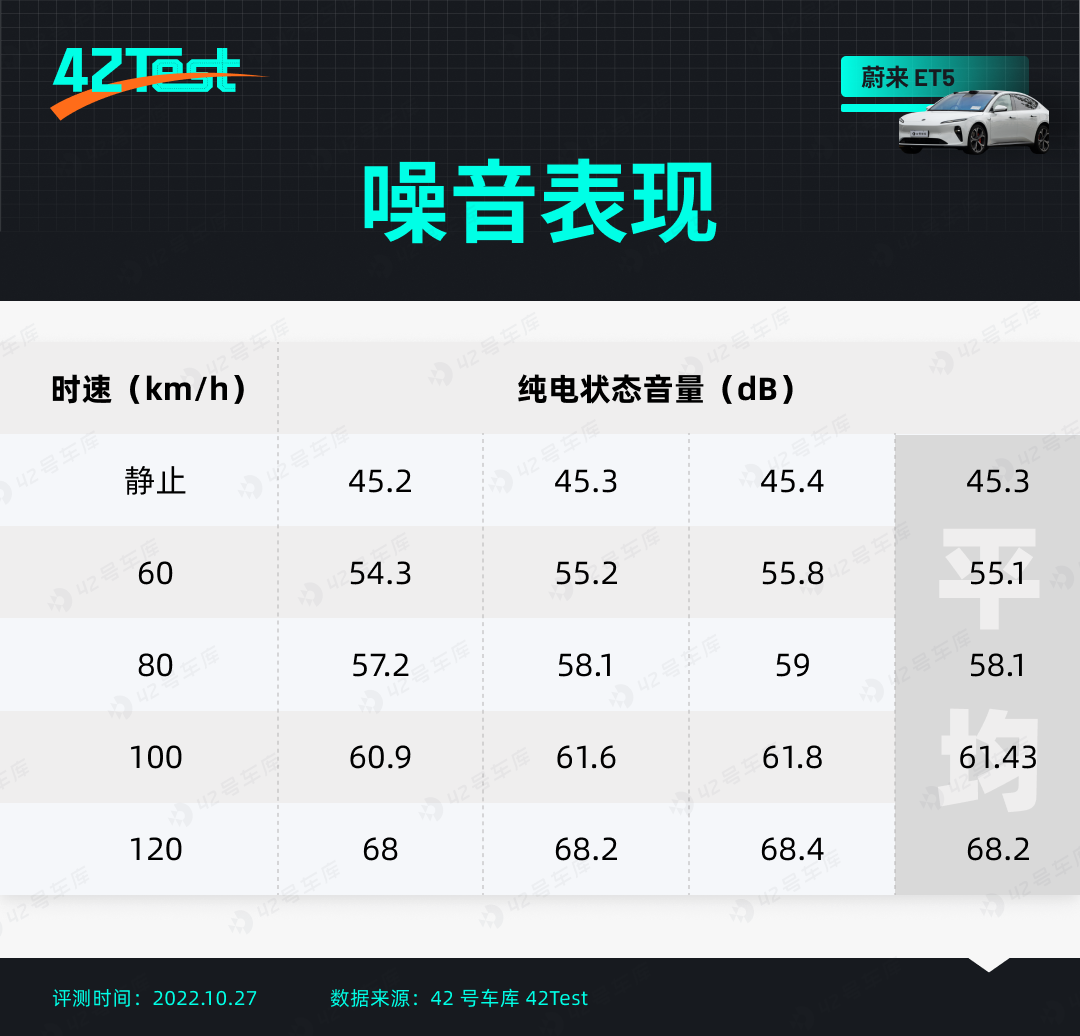
As you can see, although ET5 did not use double-layer laminated glass, the car maintained a good level of noise reduction up to 100 km/h.
However, when the speed exceeds 100 km/h, the problem of air leakage caused by the frameless doors is significantly magnified, resulting in significantly increased wind noise and noticeable increase in interior noise.
As we did not conduct detailed noise level tests on ET7, for reference, I have provided the noise data for ES7, which uses double-layer laminated glass. Overall, the performance is better than that of ET5, but as an SUV, the greater wind resistance caused by the difference in car models will also lead to a slight increase in interior noise.
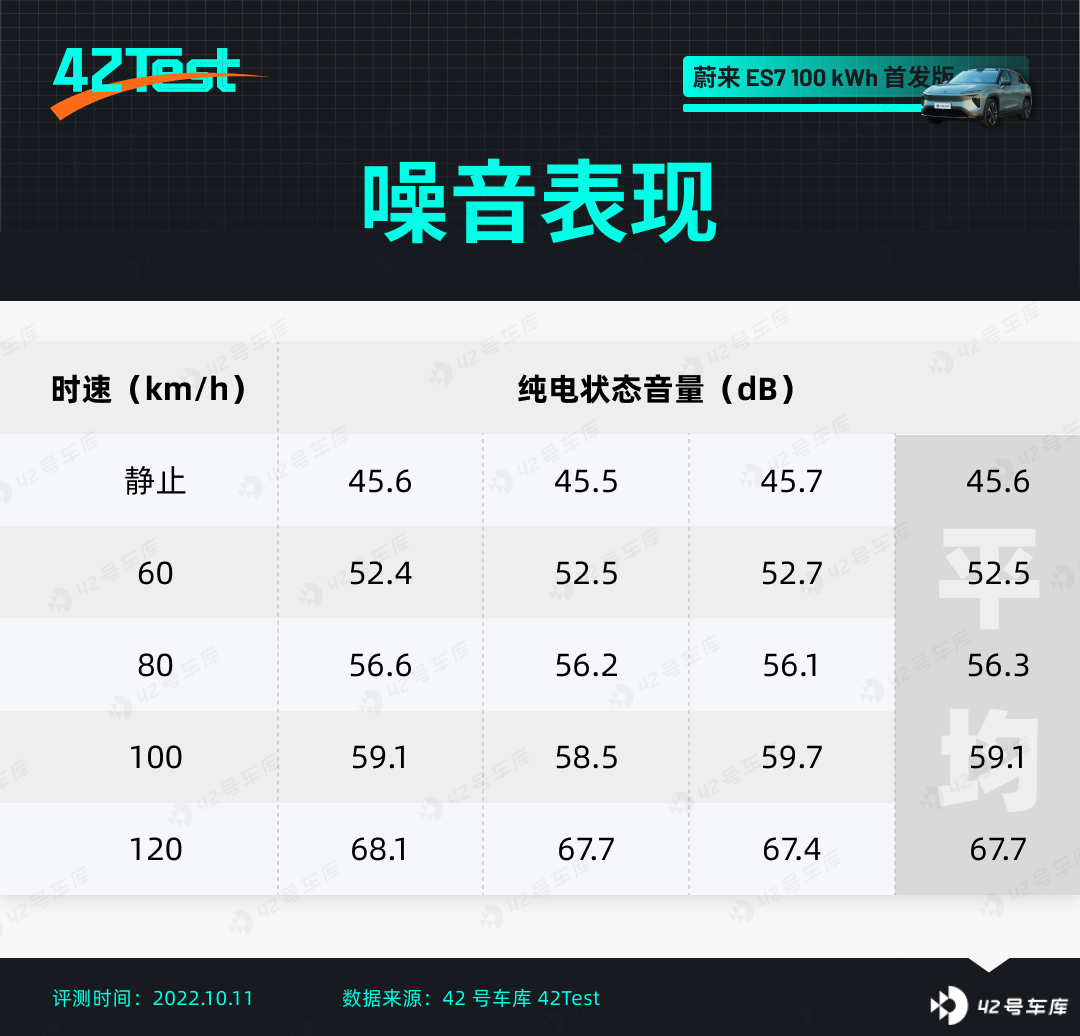
This level of noise will not have a significant impact on driving in the city compared to ES7. However, once you hit the highway, the interior noise of the ET5 will be noticeably higher than that of the ES7.
Higher noise levels undoubtedly affect the actual performance of the audio system. When waiting at a red light or driving at low speeds, the 1,000W, 7.1.4-channel audio system performance in the car completely satisfied me. But as soon as I drove on roads, such as highways with poor conditions and fast speeds, I found it difficult to enjoy the music in the audio system.
Exterior and Interior: The youngest NIO car.Regarding the appearance and interior of NIO ET5, we have previously made videos that those interested can check out.
- Appearance introduction: Unboxing NIO ET5 Static Evaluation: Decide Whether to Buy After Watching
- Interior introduction: NIO’s Strongest Interior to Date, ET5 Both Inside and Outside
Below we will mainly discuss the aspects of the appearance and interior of ET5 that everyone is concerned about, as well as the interesting points I find.
Appearance, Designed for Young People
In terms of size, ET5 is obviously smaller than ET7, with shorter length, width, height, and wheelbase. However, compared with cars in the same class, ET5 is still larger in terms of size.
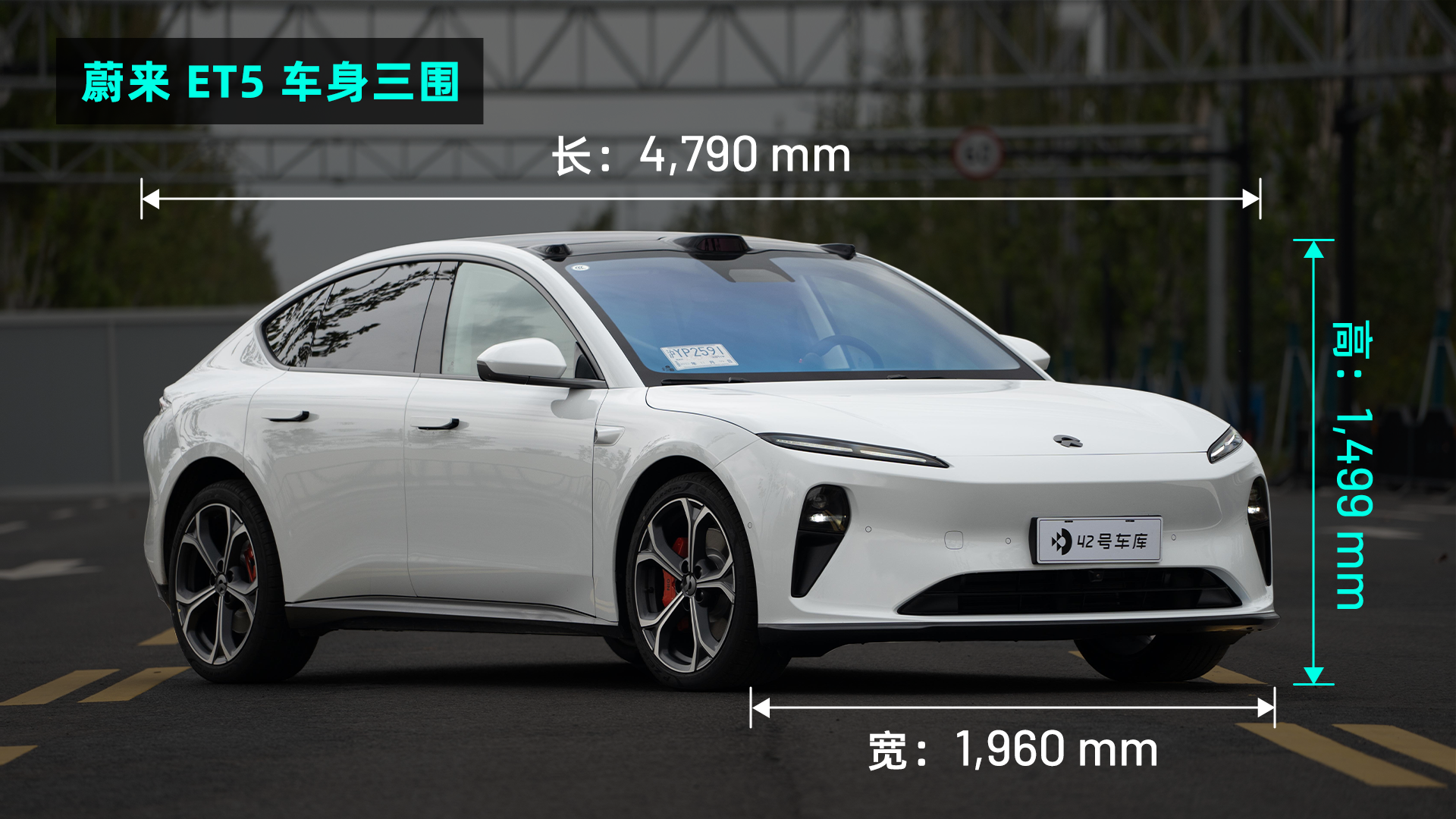
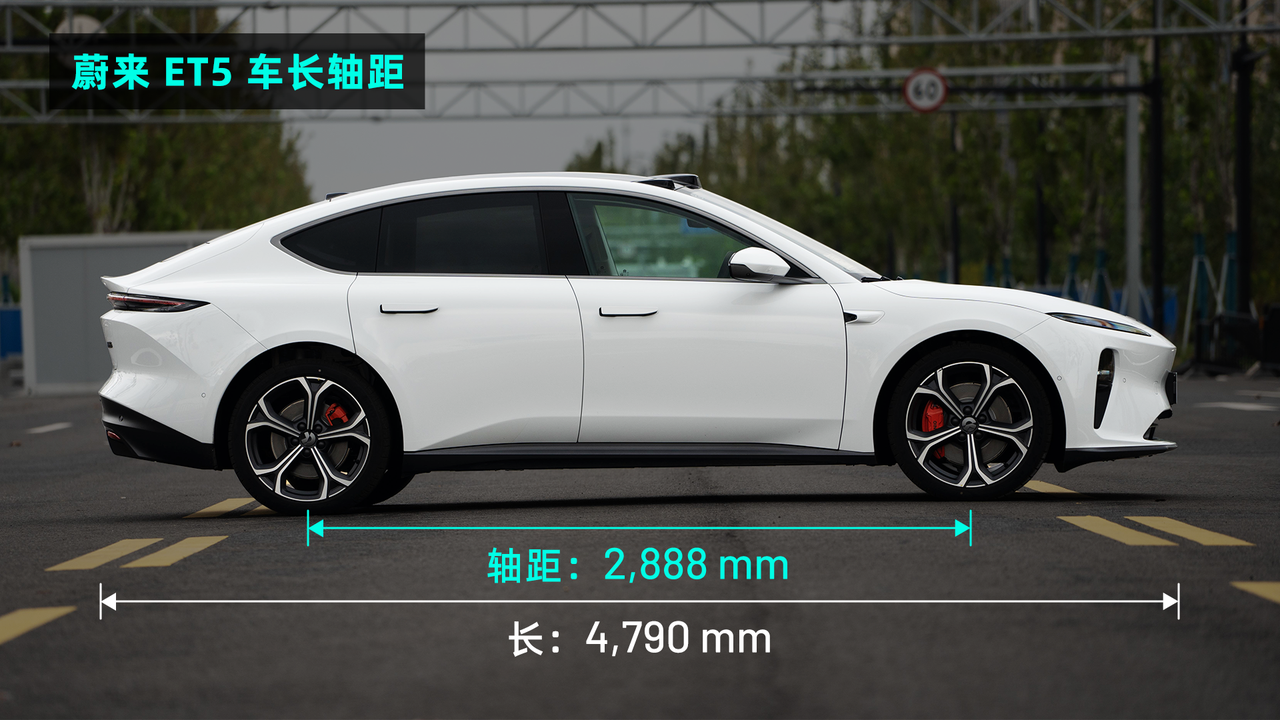
From the front end angle, there is not much difference between ET5 and ET7, and the most obvious difference is probably the downward extended headlights of ET5.
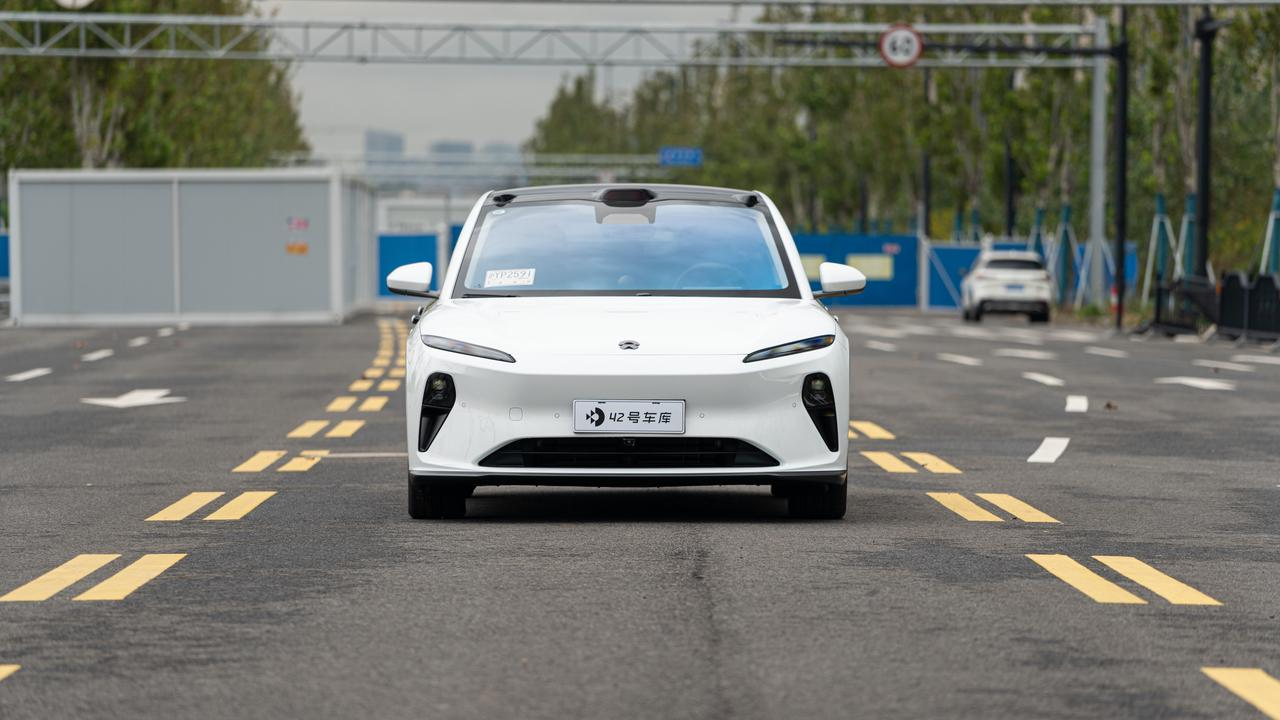
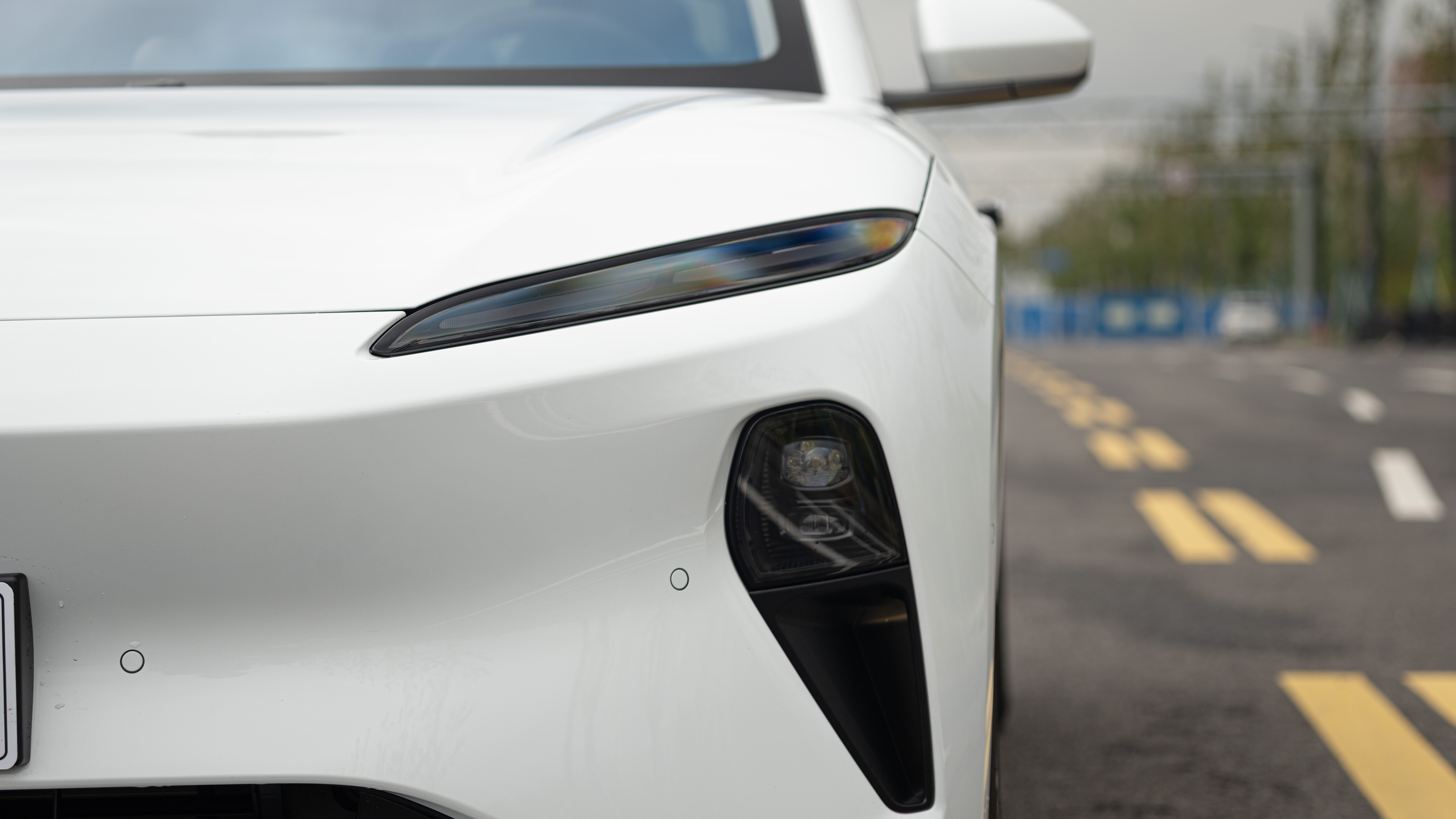
The reason for the longer lower part of the headlights is that ET5 has a through-flow guide opening here, which shows its sports car attributes.
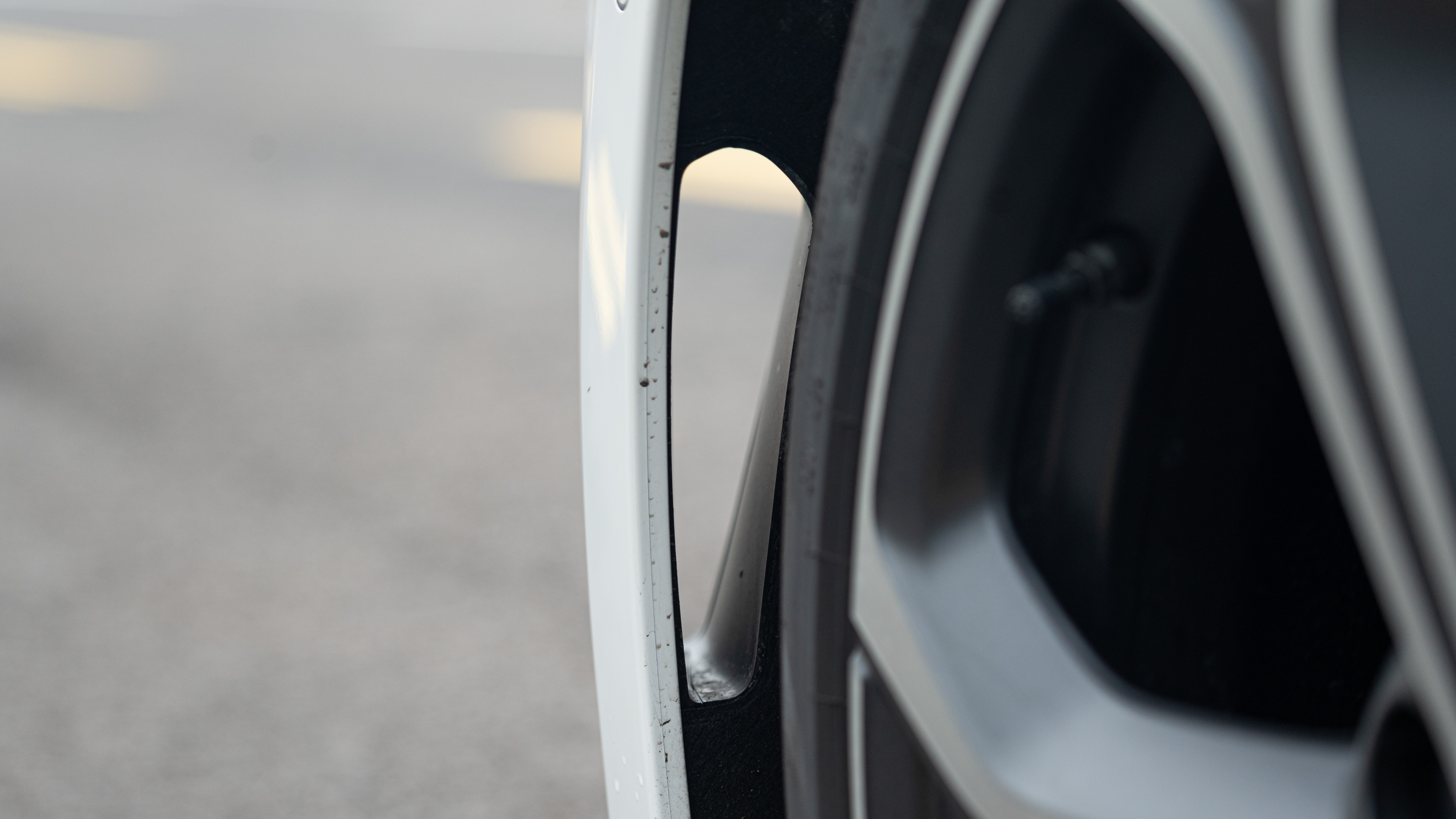
Our car is equipped with the Moon theme kit, which, compared to the silver of the Sun theme, has a more textured dark grey color.
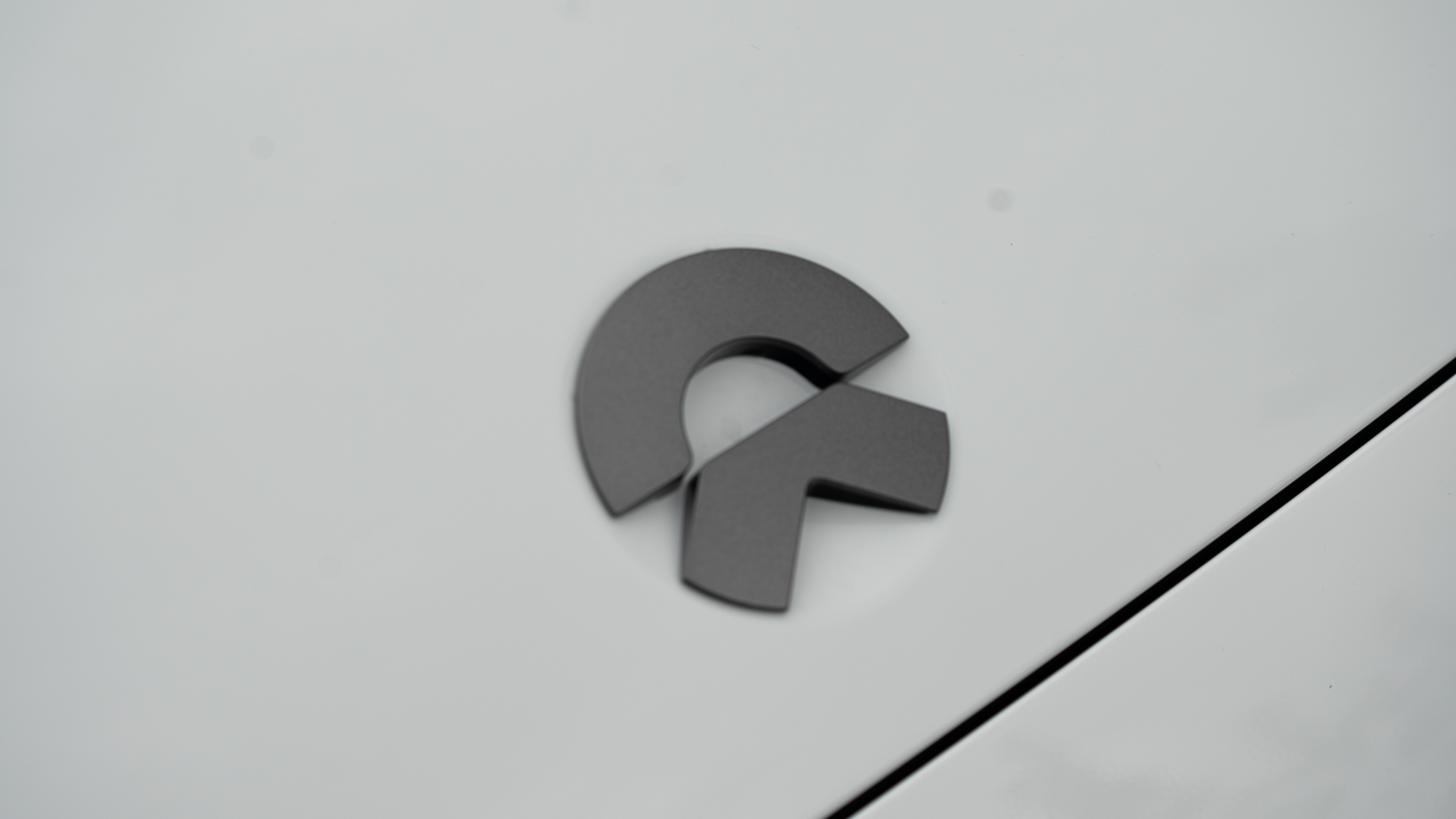
The roof is still the iconic Lighthouse Sensor of the NIO NT 2.0 platform. The center of the roof features the same 1,550 nm forward-facing sensing camera as the ET7/ES7, with two 8 million pixel cameras on the left and right.
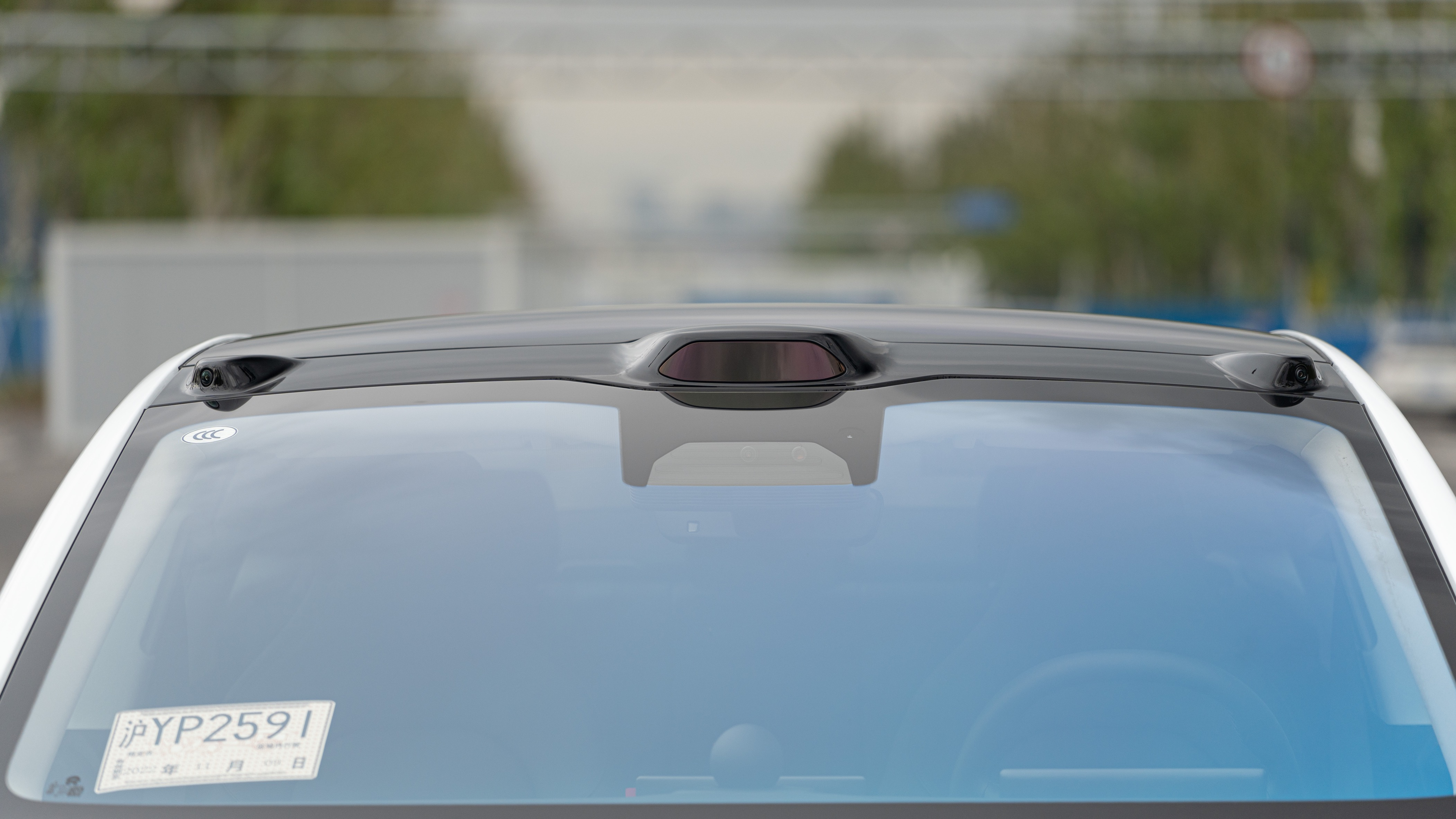
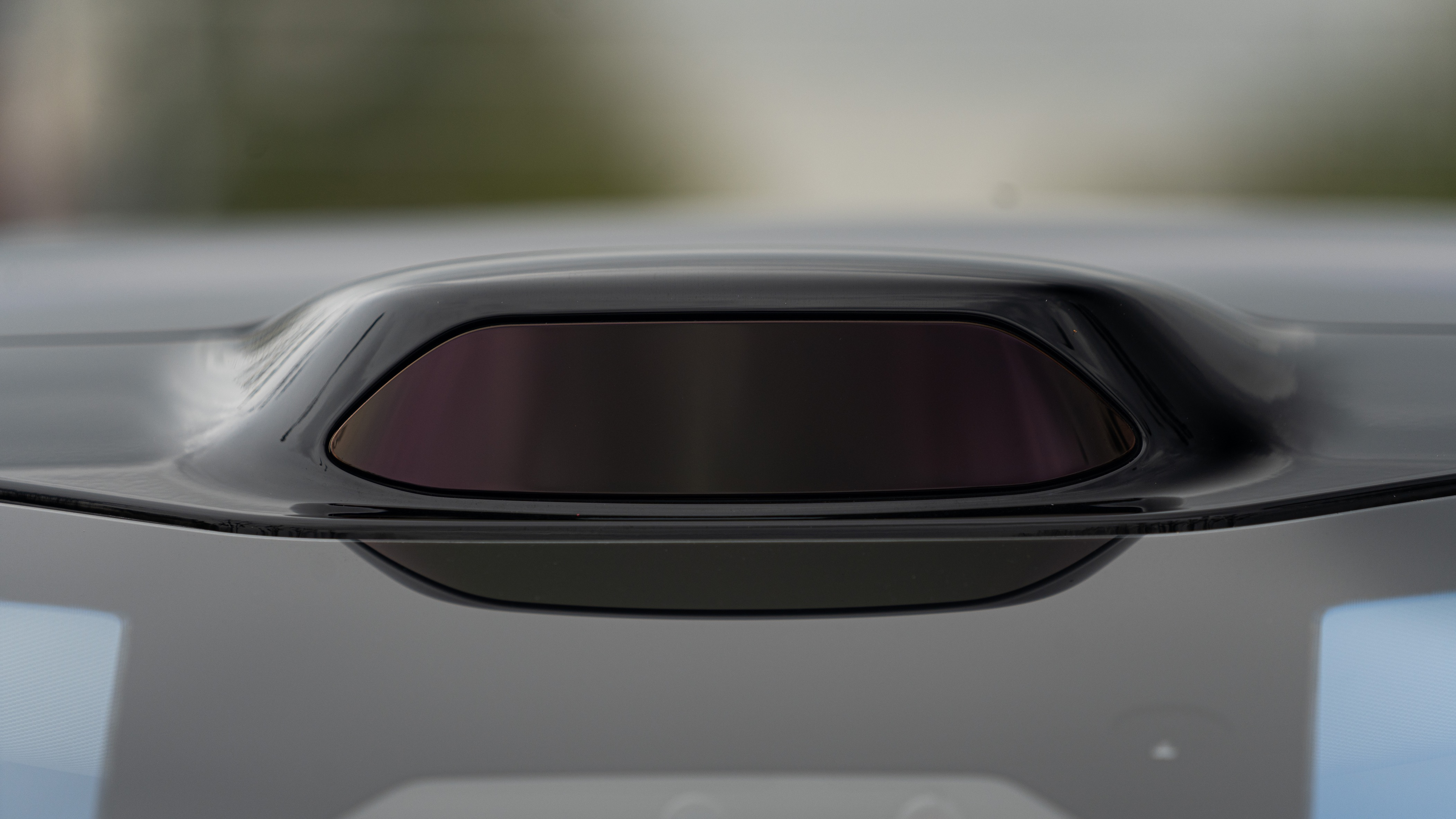
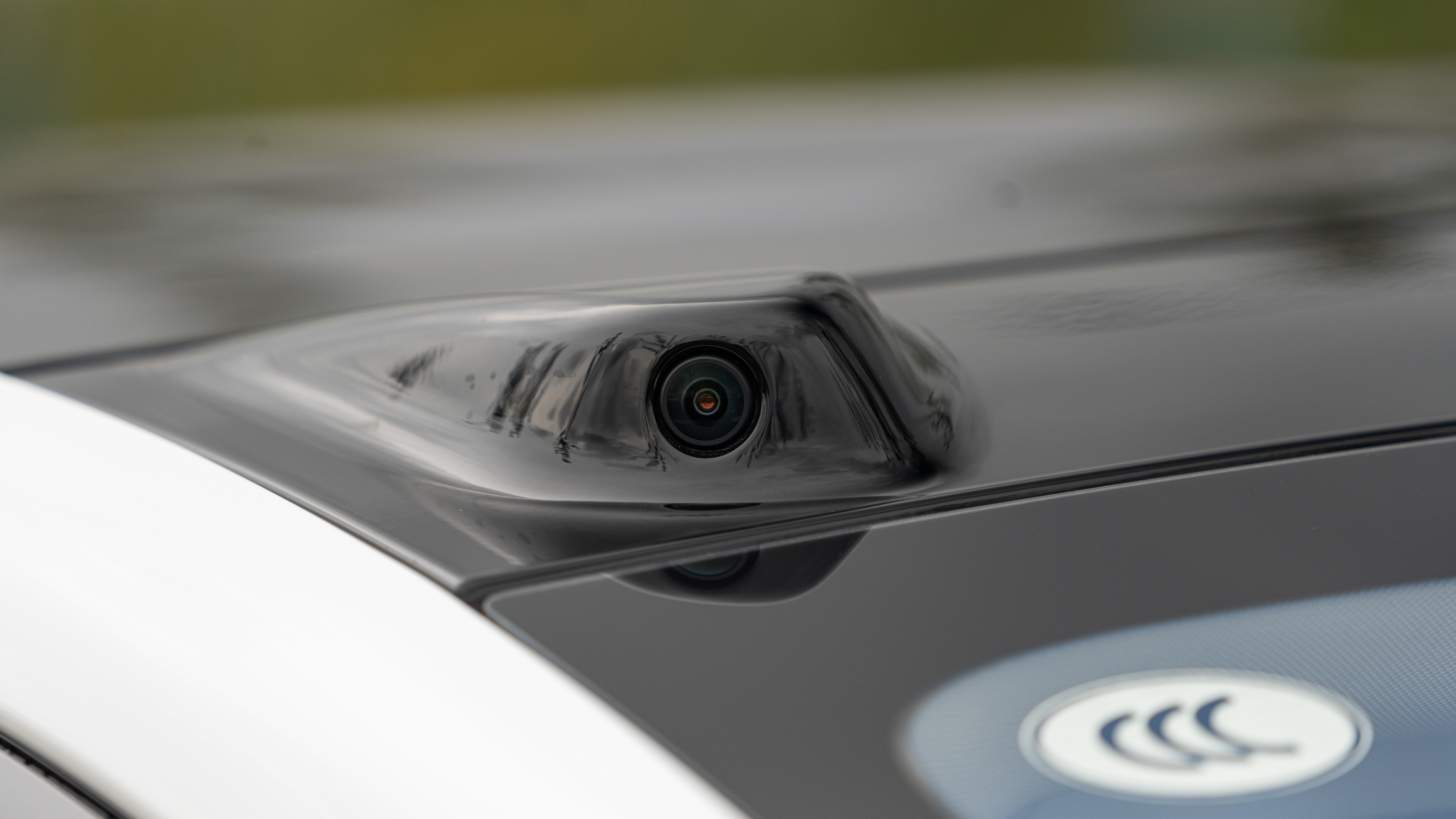
From the side, the difference between the ET5 and the ET7 is quite obvious. The tail of the ET5 is significantly shorter, with a faster slope down from the B-pillar and a more upturned ducktail that highlights the sports performance of this car.
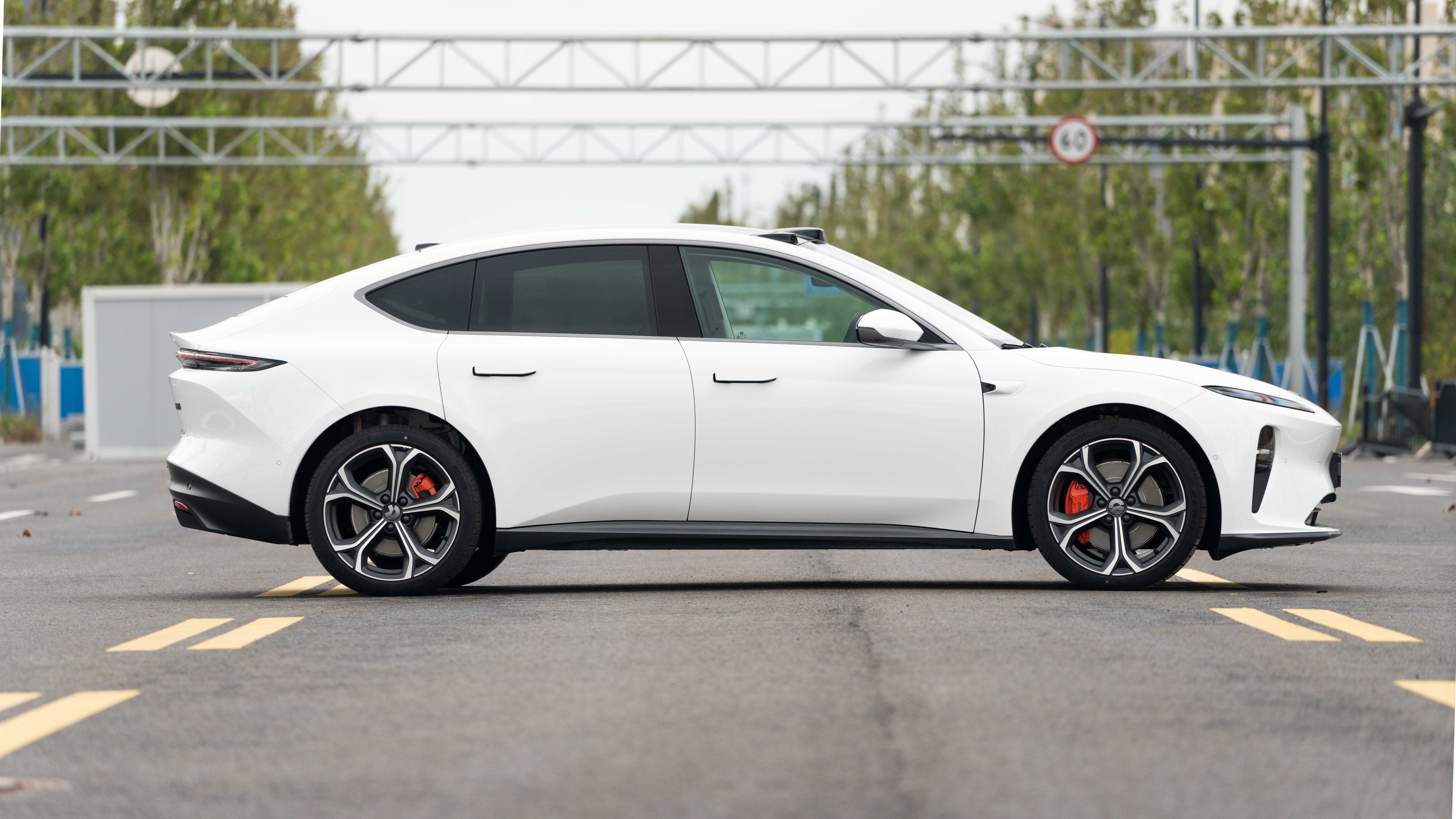
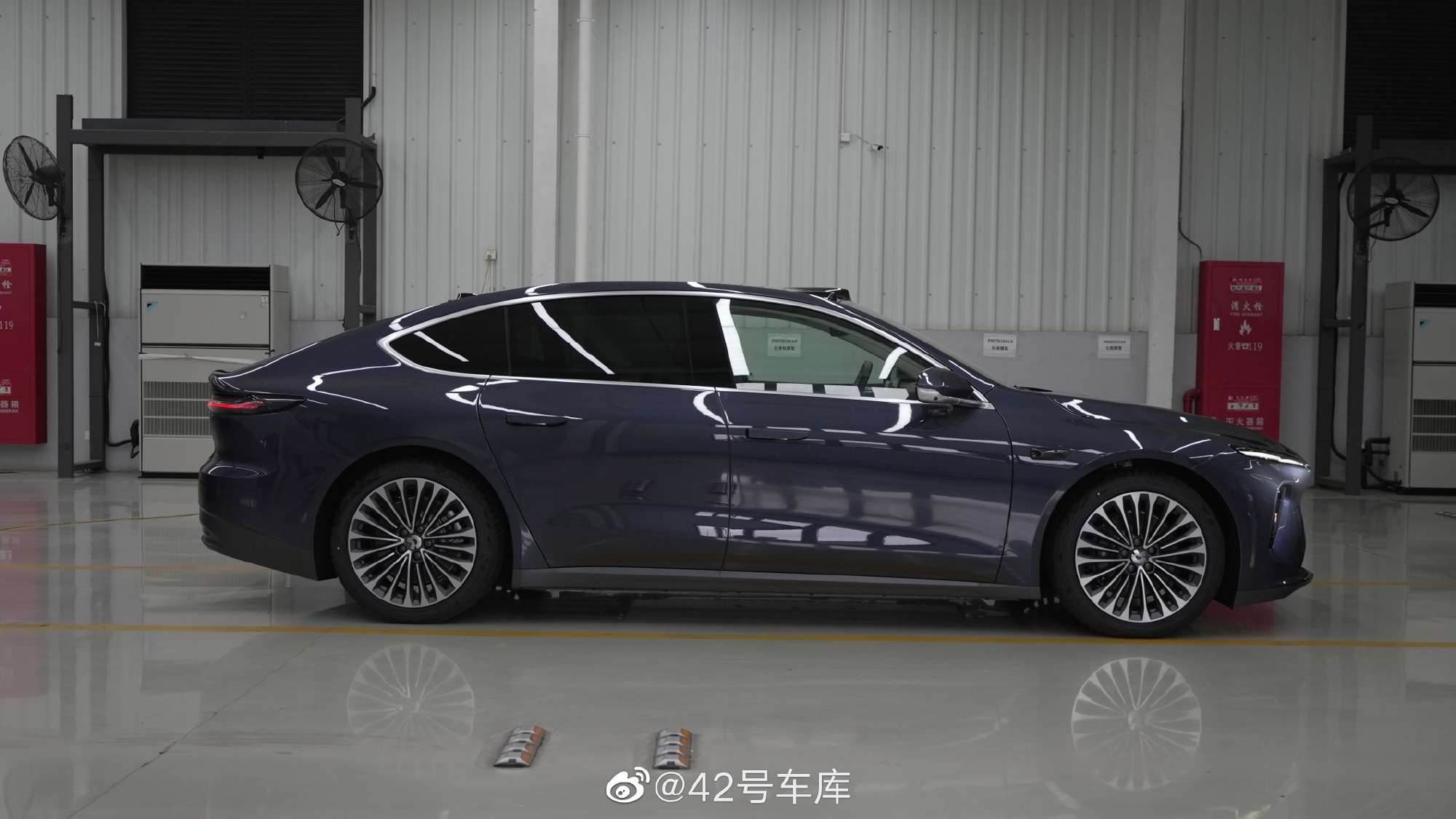
This car we tested was equipped with 20-inch five-spoke flower-shaped racing wheels and matched with optional orange calipers, making it sporty.
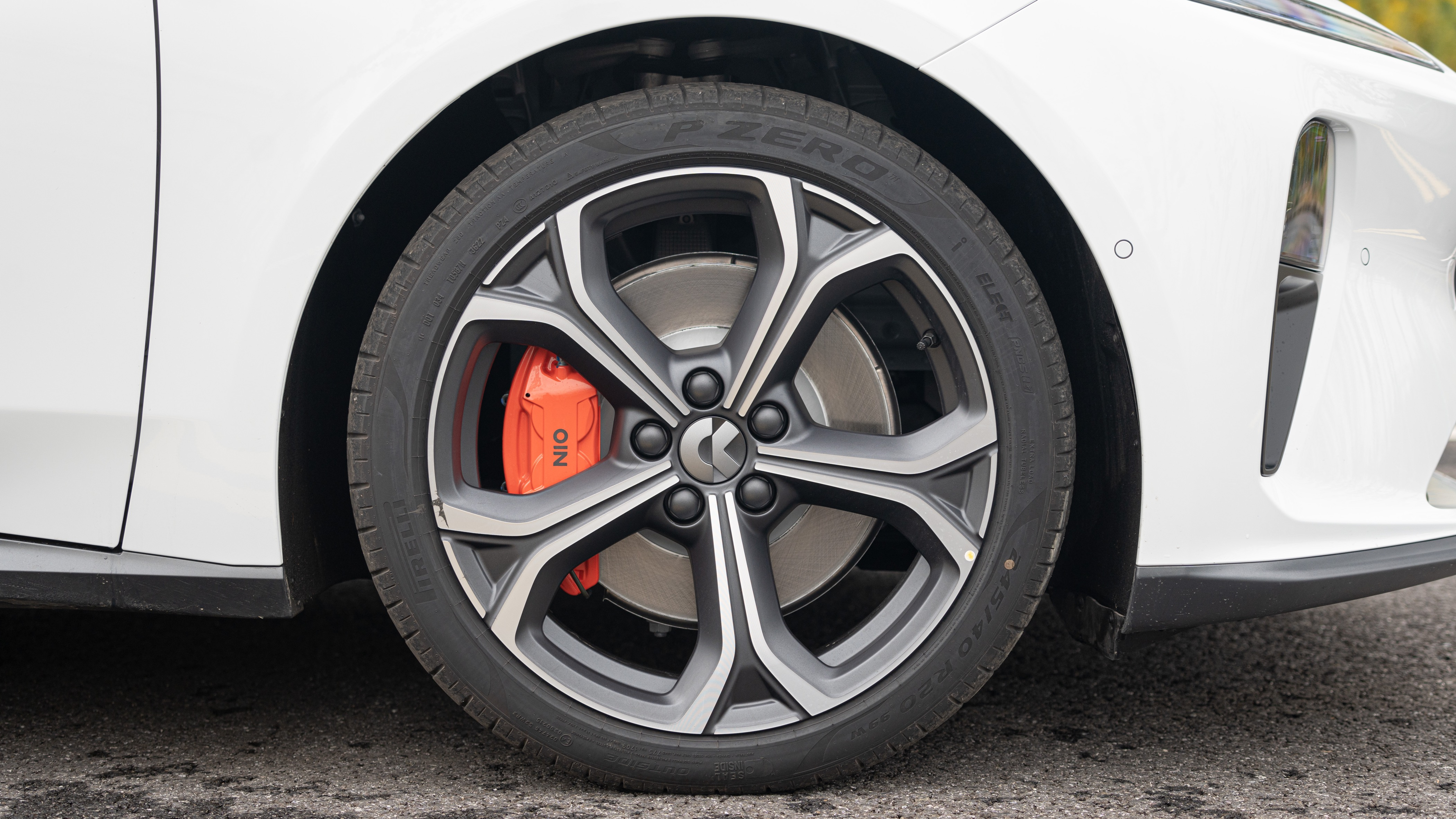
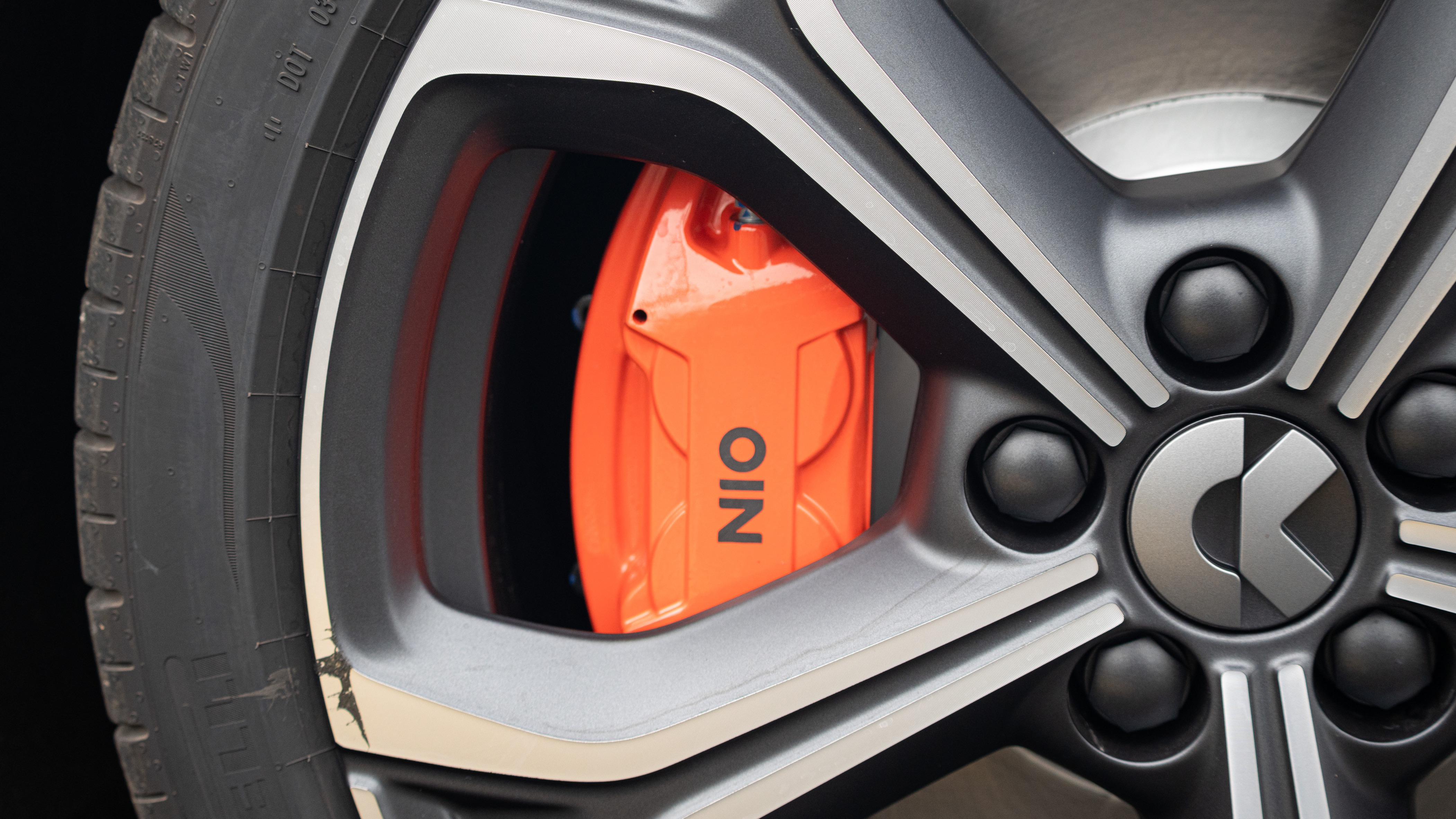
The rear wheels do not use the same four-piston calipers as the front ones, but as can be seen from the braking data just now, there is no significant impact on the braking performance.
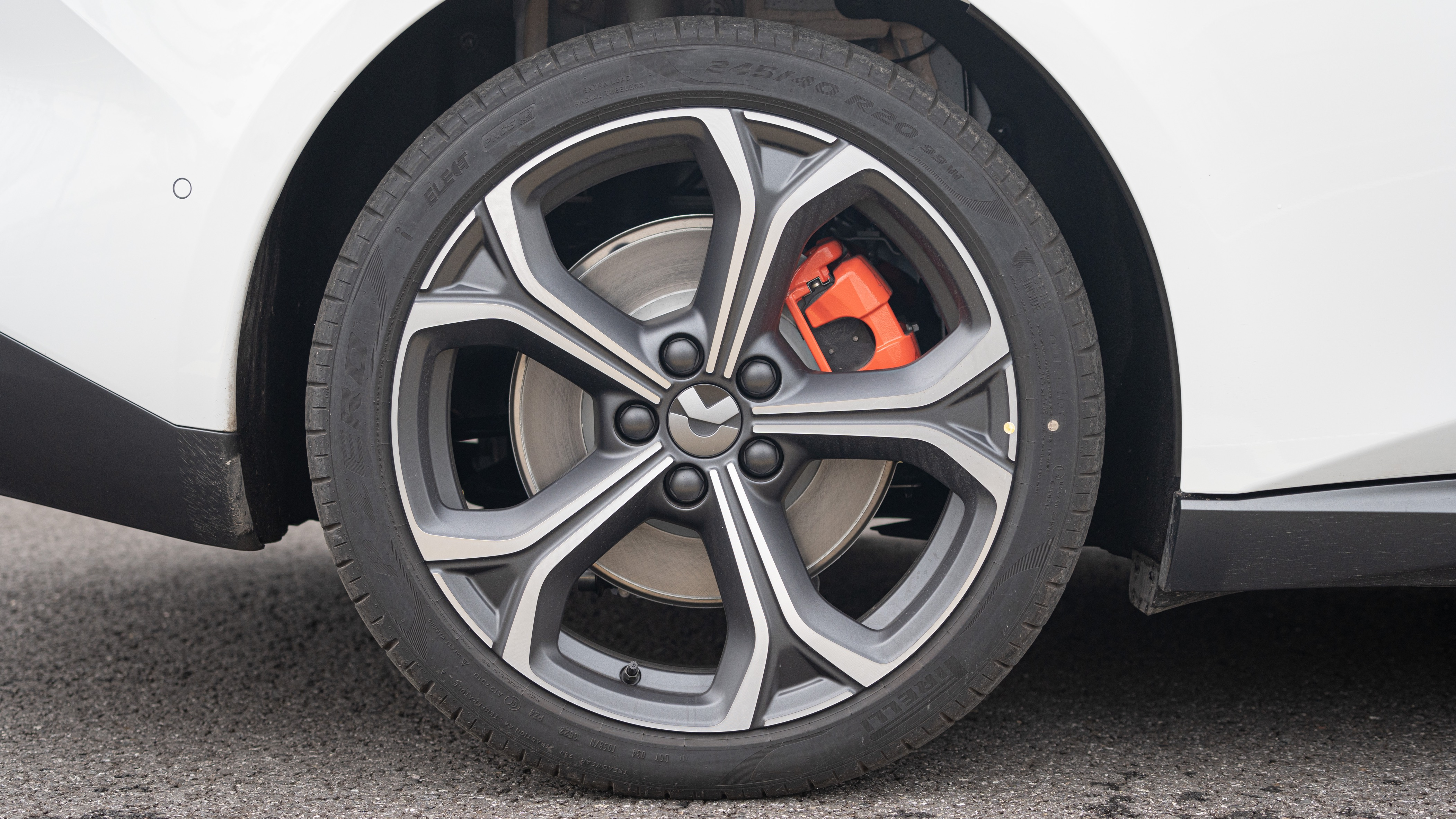
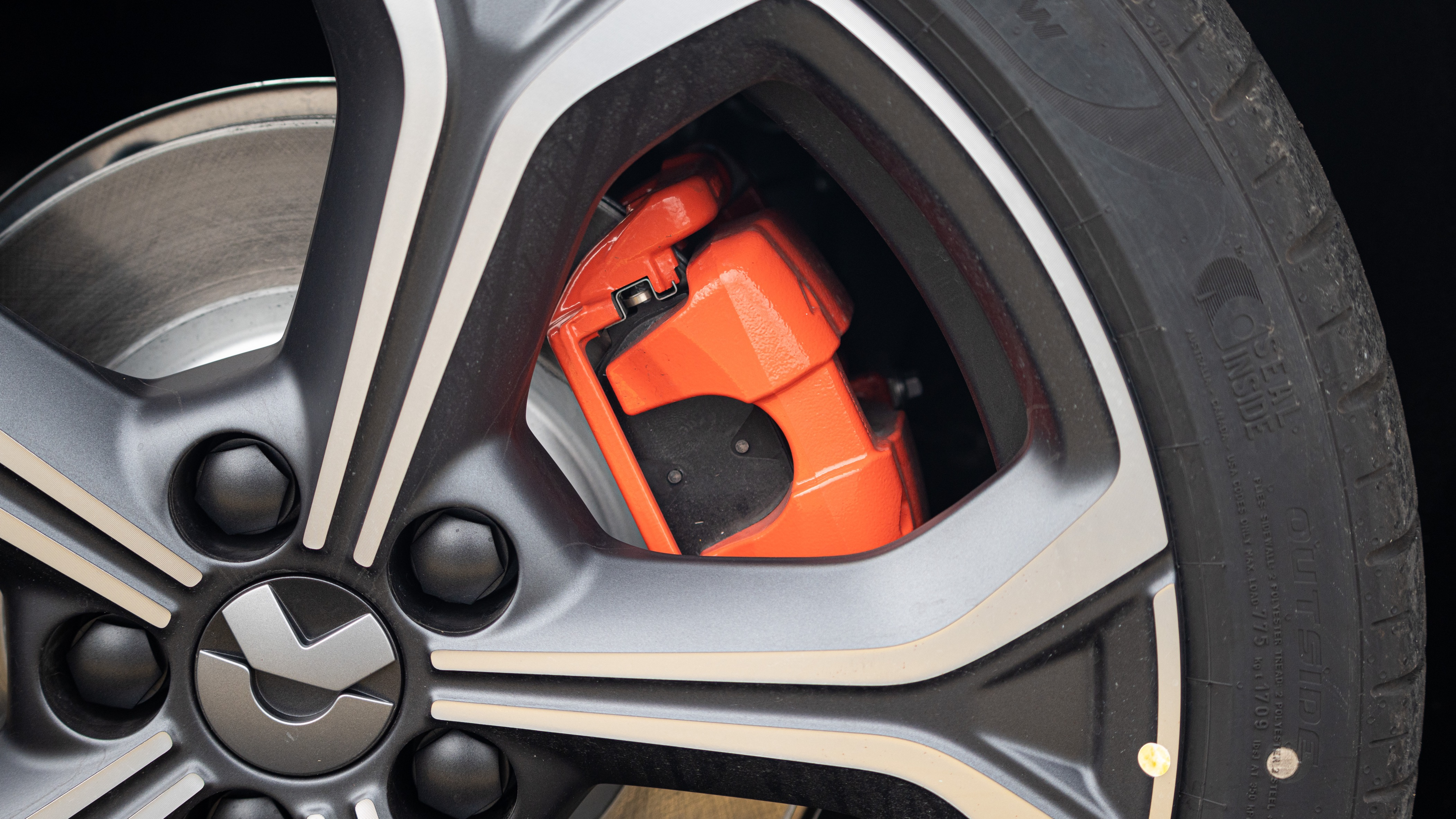
The door handle is still the same as that of the ET7, an entire retractable hidden door handle, and the electric suction door is not absent. Just put your hand into the door handle, and the door will automatically pop open without actually pulling the door. When closing the door, simply gently close the door, very elegant.

Going to the rear of the car, compared to the overall shape of the ET7, it looks younger. There is a camera for rear perception at the top, also with 8 million pixels.
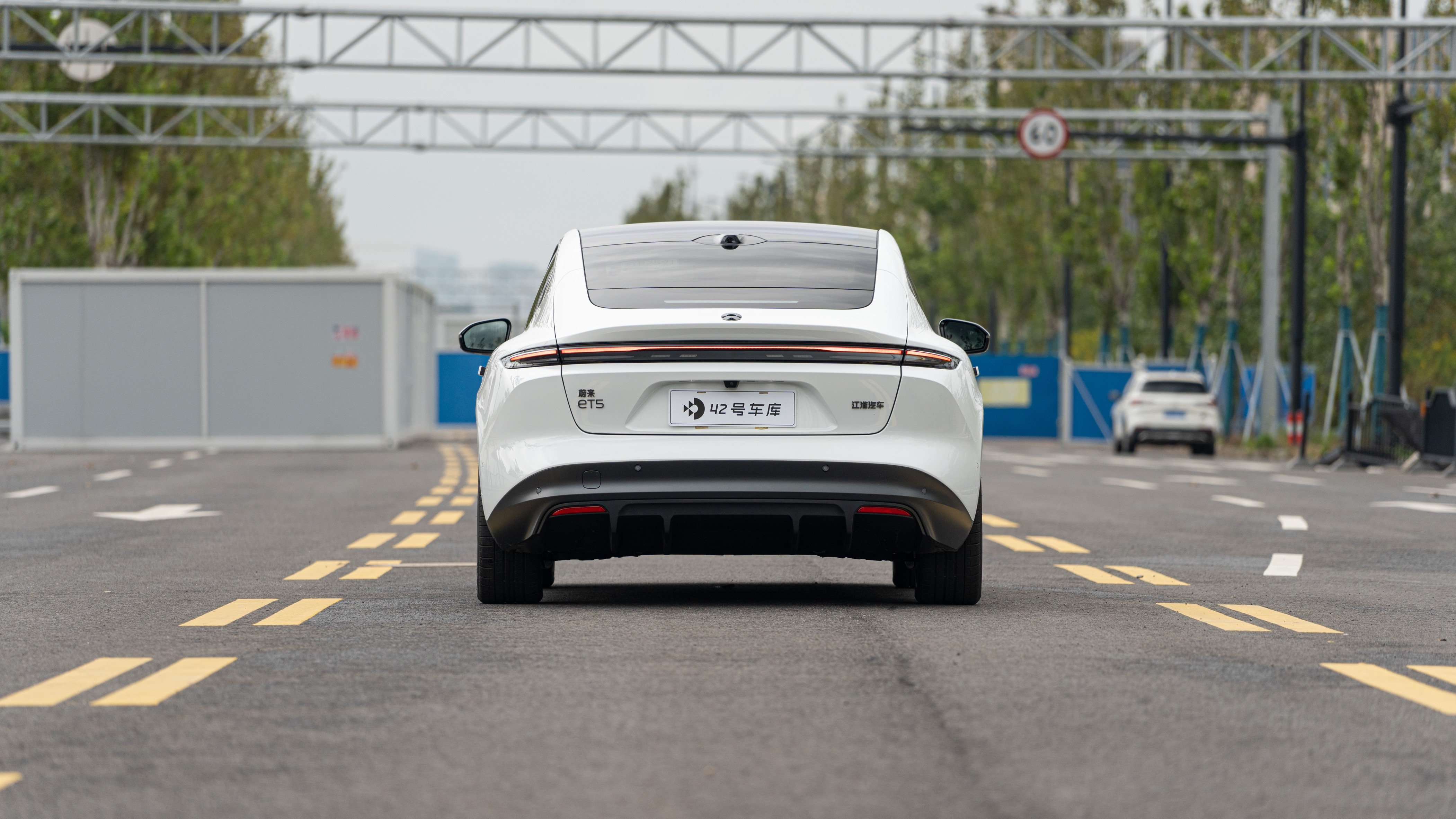
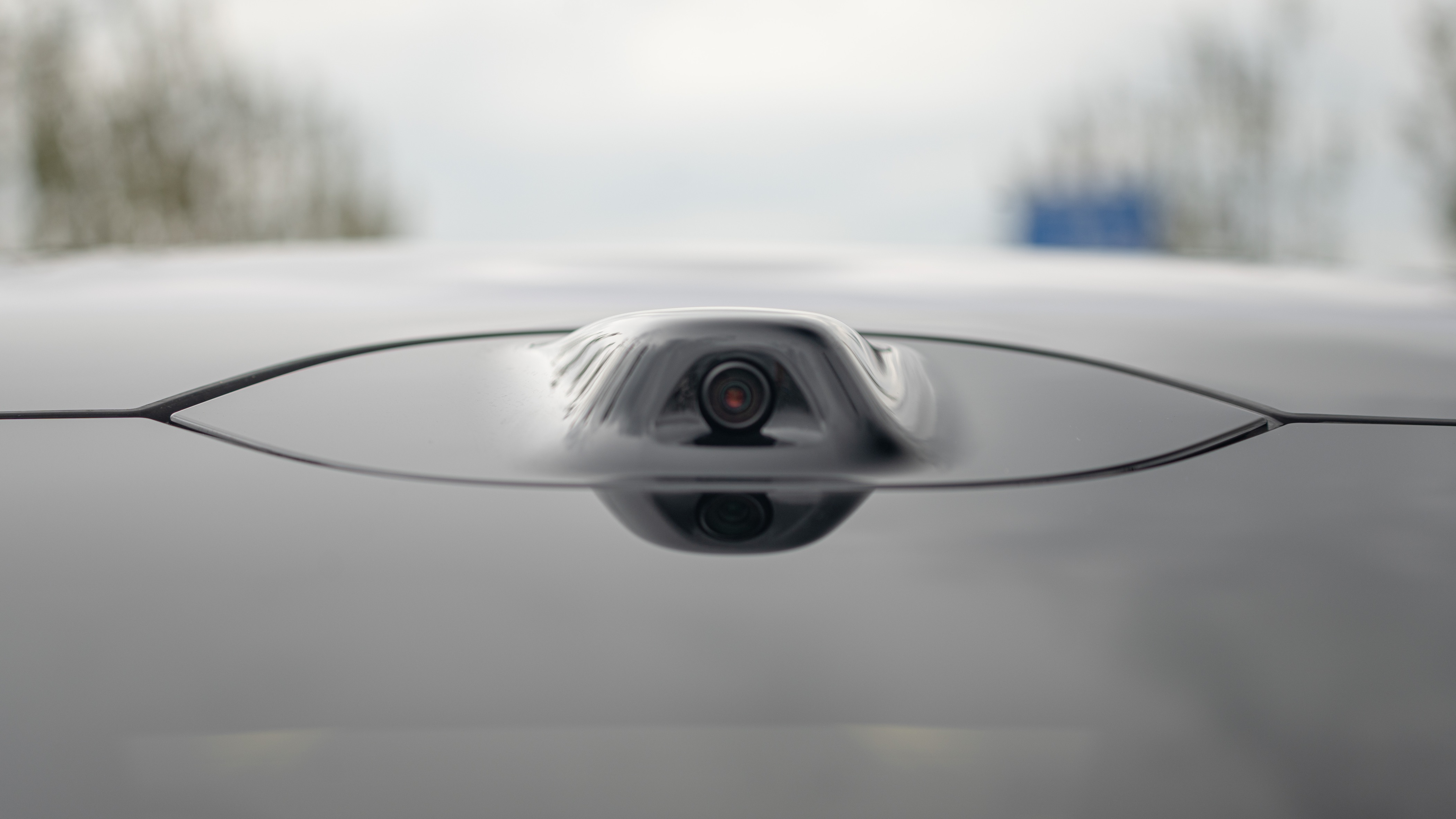
The diffuser at the bottom is also a design appearing for the first time on the NIO mass-produced models, adding +1 to the sporty attribute, while the rear fog lamp is also placed here.

The charging port is also placed at the left rear of the vehicle, just like the ET7. Press the cover of the charging port to open it. There is only one DC charging port, and it cannot be charged with regular AC slow charging.
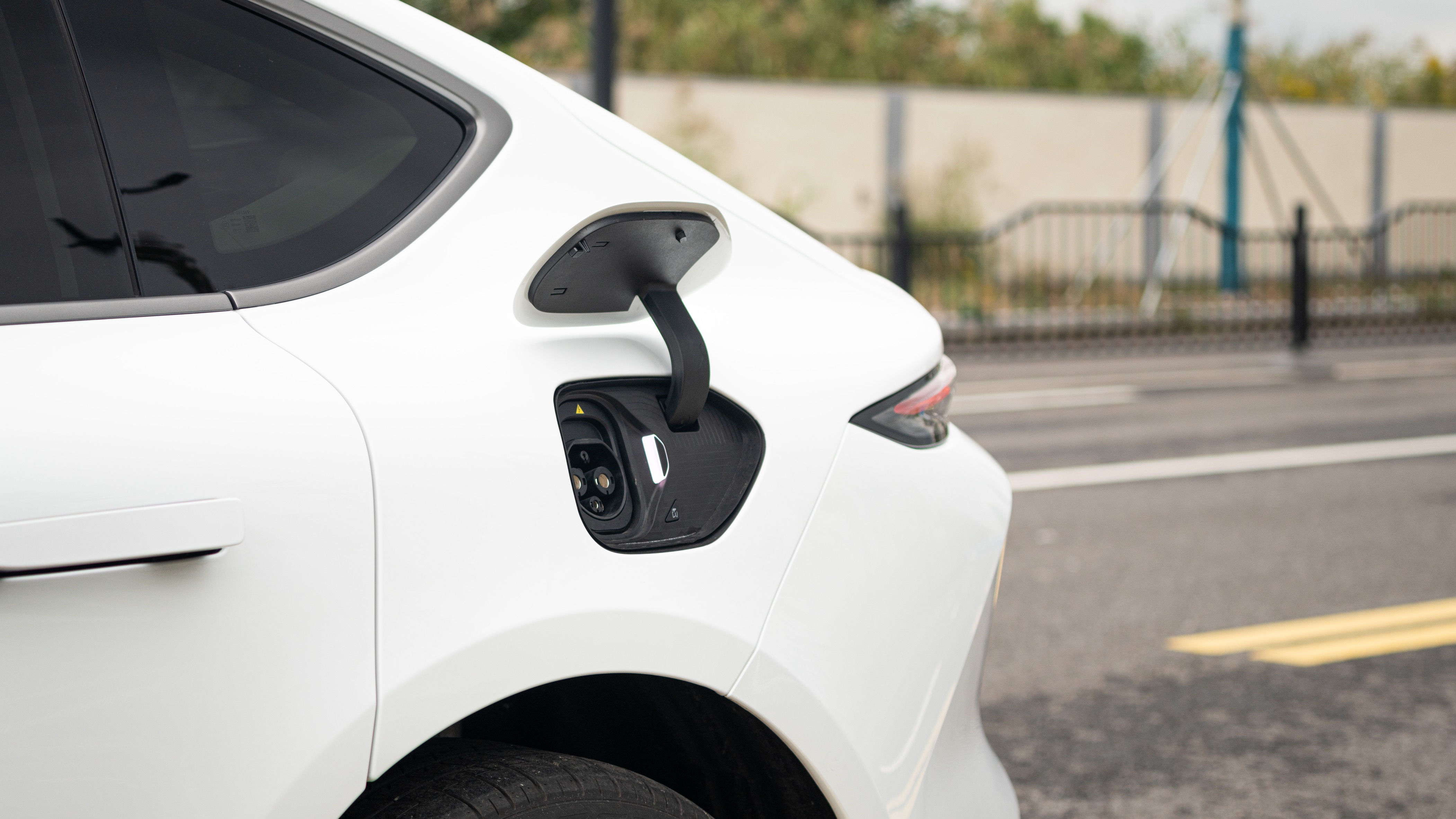
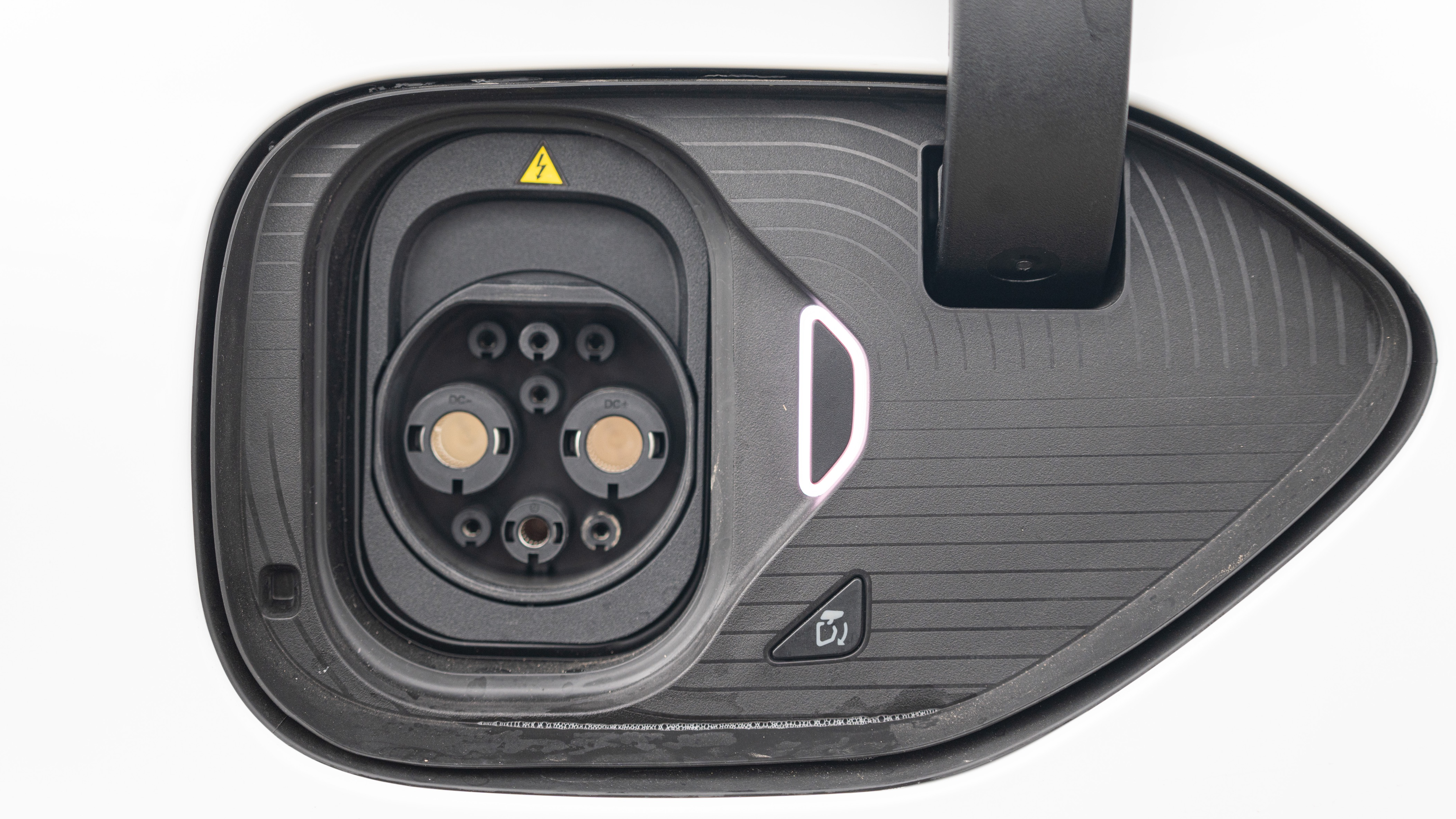
Finally, we would like to talk about the ground clearance of the vehicle that everyone is concerned about. We tested and found that the ground clearance of the front bumper is 19 cm, and the ground clearance of the left and right front and rear bumpers is 17 cm. However, the lowest ground clearance is probably still the battery pack, so it is better not to hit speed bumps.
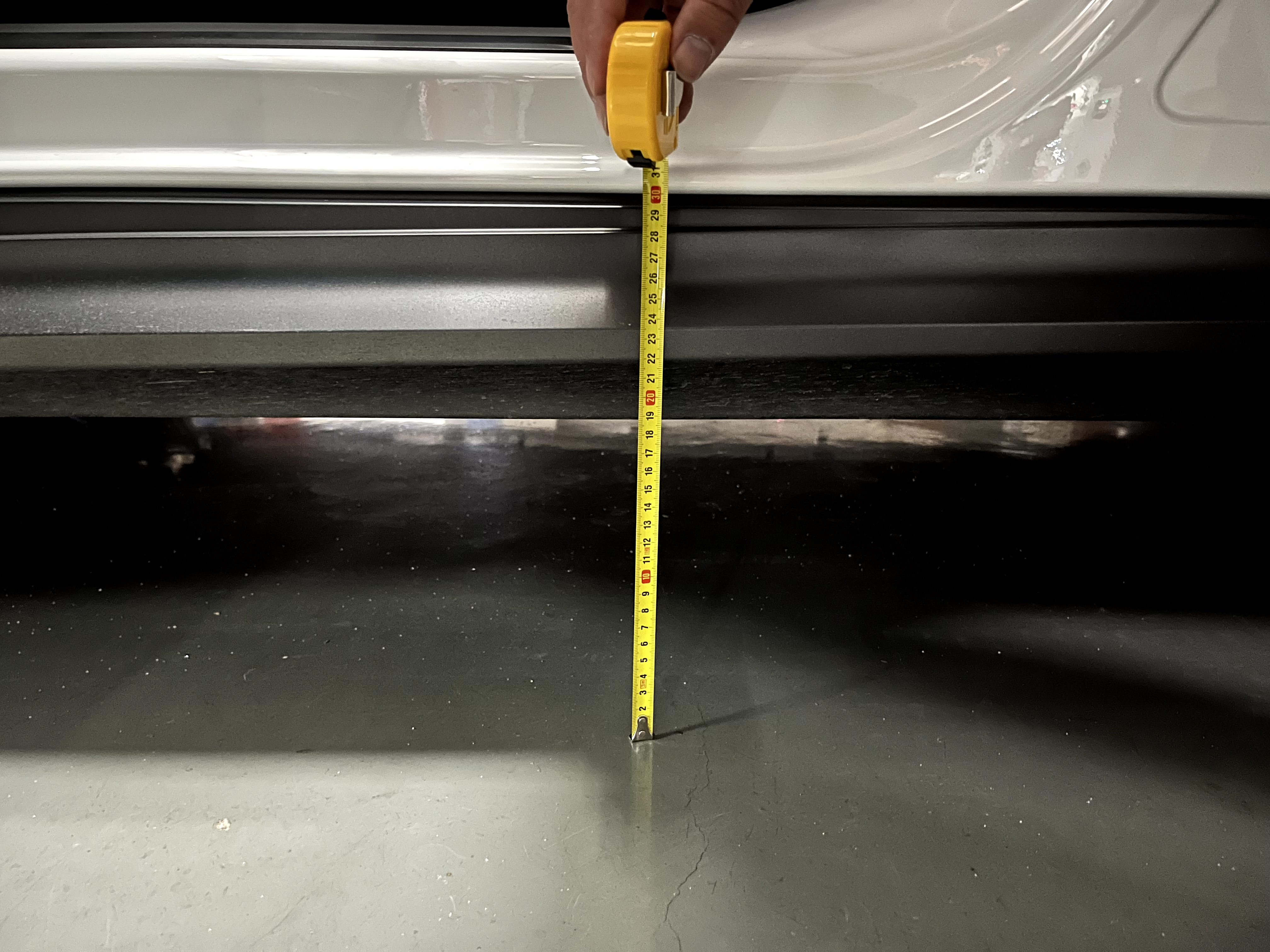
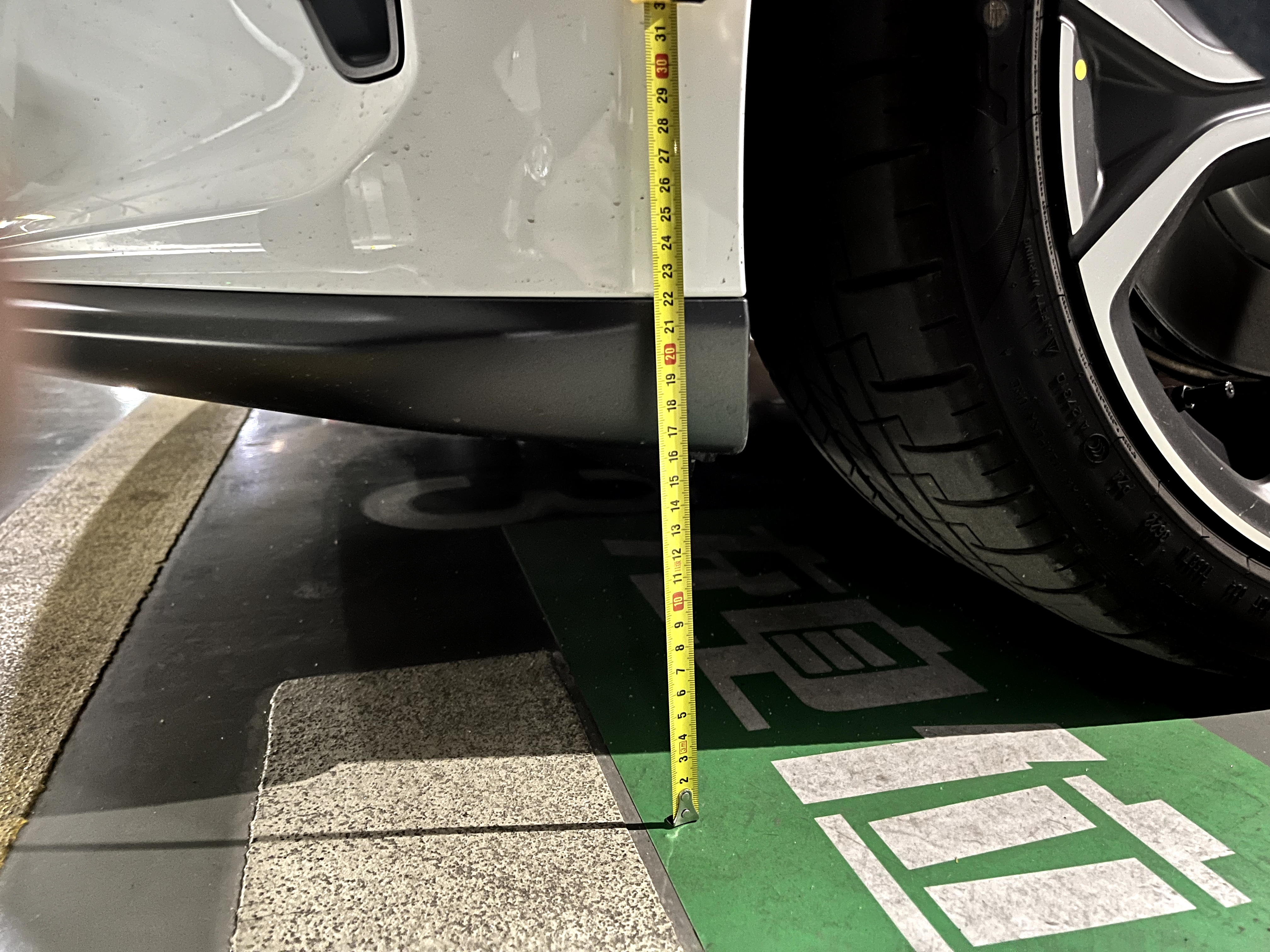
We also measured the distance from the front wheel to the front fender, which is about 6 cm, or a little more than a fist.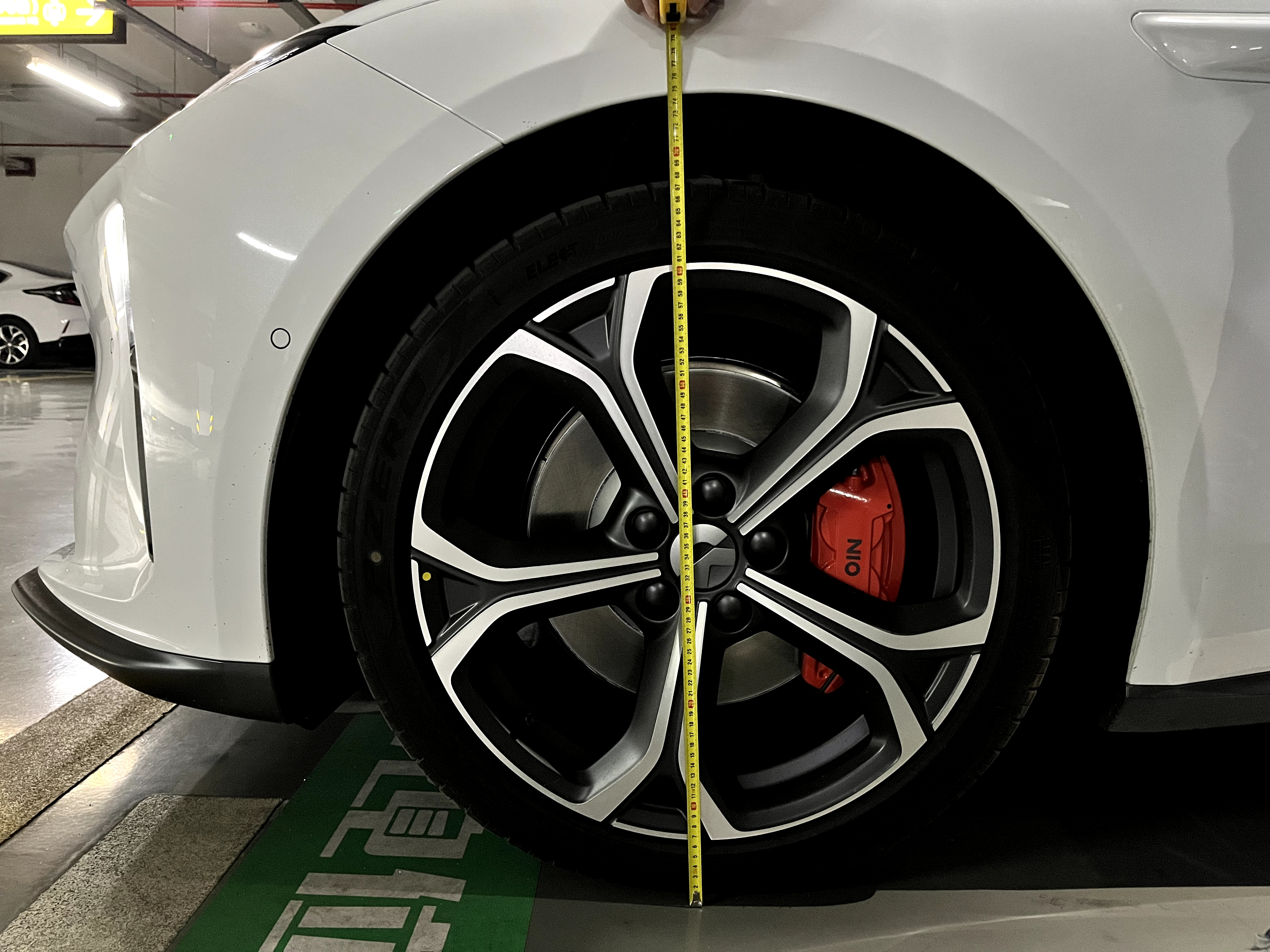
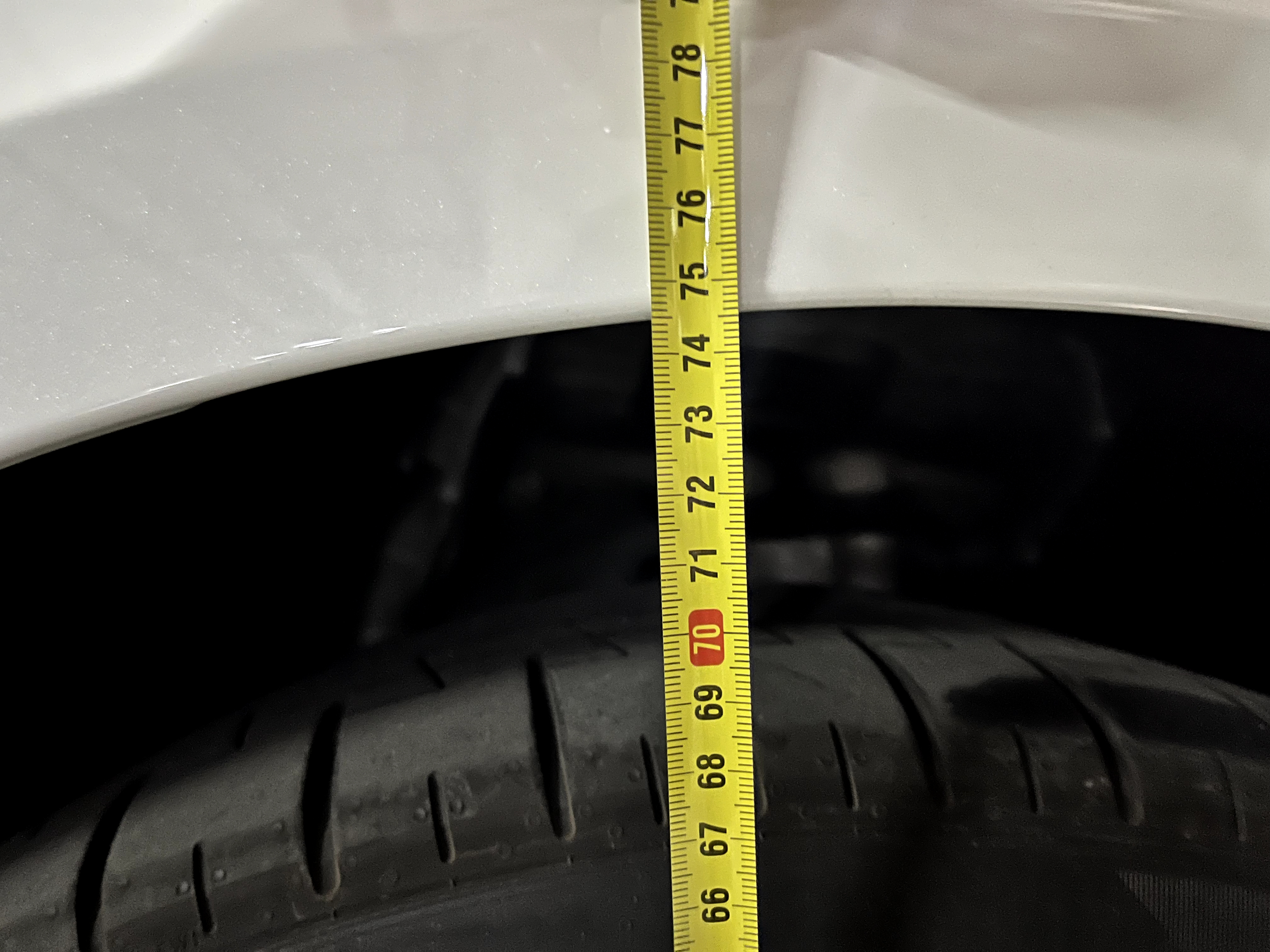
That’s all for the exterior. As for the interior and space, we believe that is what most people are concerned about. Let’s open the car door and take a look.
Interior: Vibrant but not Luxurious
For this ET5, we chose the combination of Technology Black and Light-colored fabric roof. Personally, I prefer the Golden Sand color scheme. The overall interior layout is almost identical to that of ET7/ES7, but the materials used are completely different. At first glance, there is no trace of luxury.
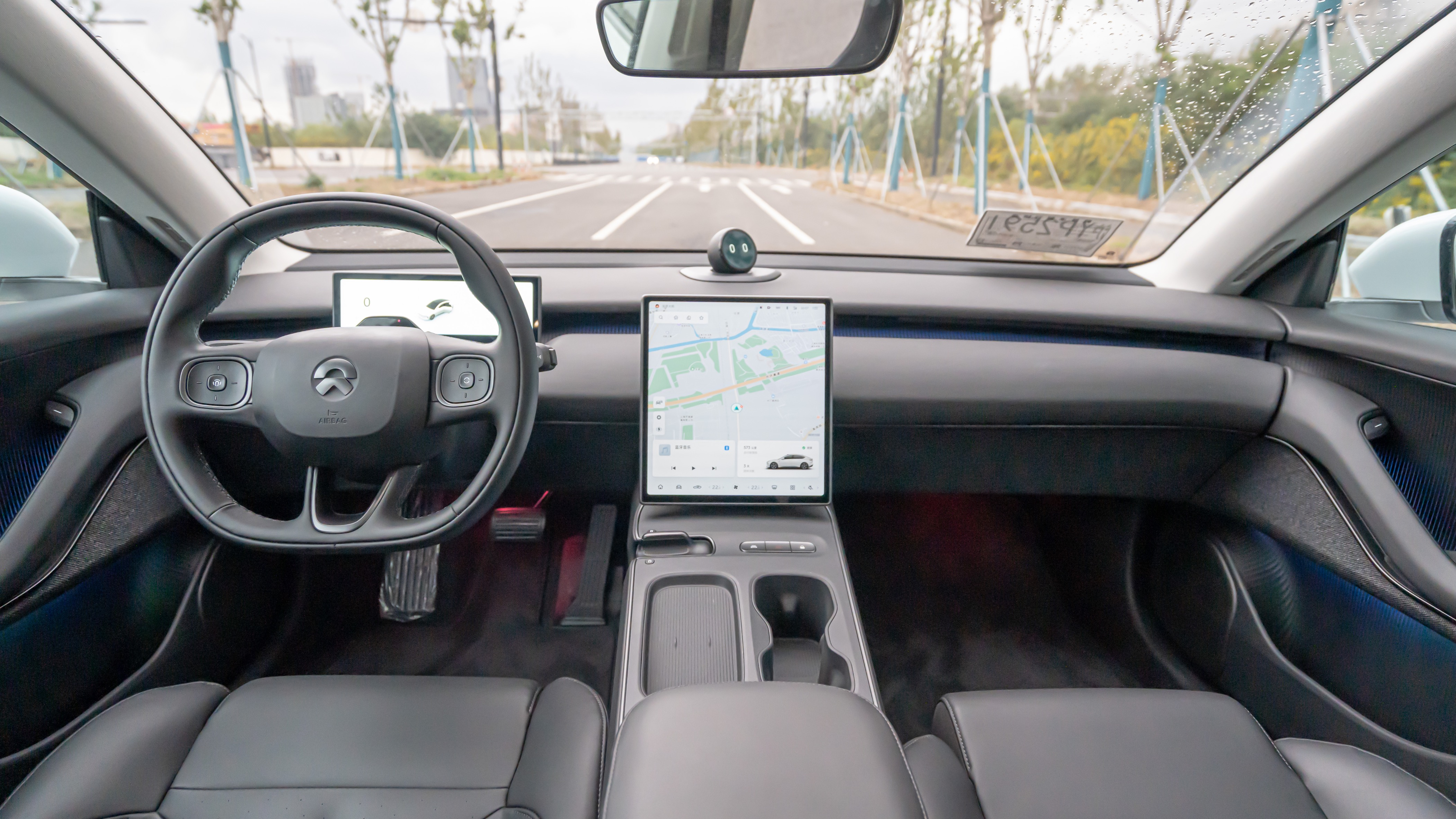
The steering wheel is largely similar to the Angry Birds’ Green Pig style, but this time it has been changed from the two-spoke steering wheel on the ET7 to a three-spoke one. The size, grip, and button layout are consistent with those of the vehicles on the NT 2.0 platform. On the left are the auxiliary driving control buttons, and on the right are the multimedia control buttons.
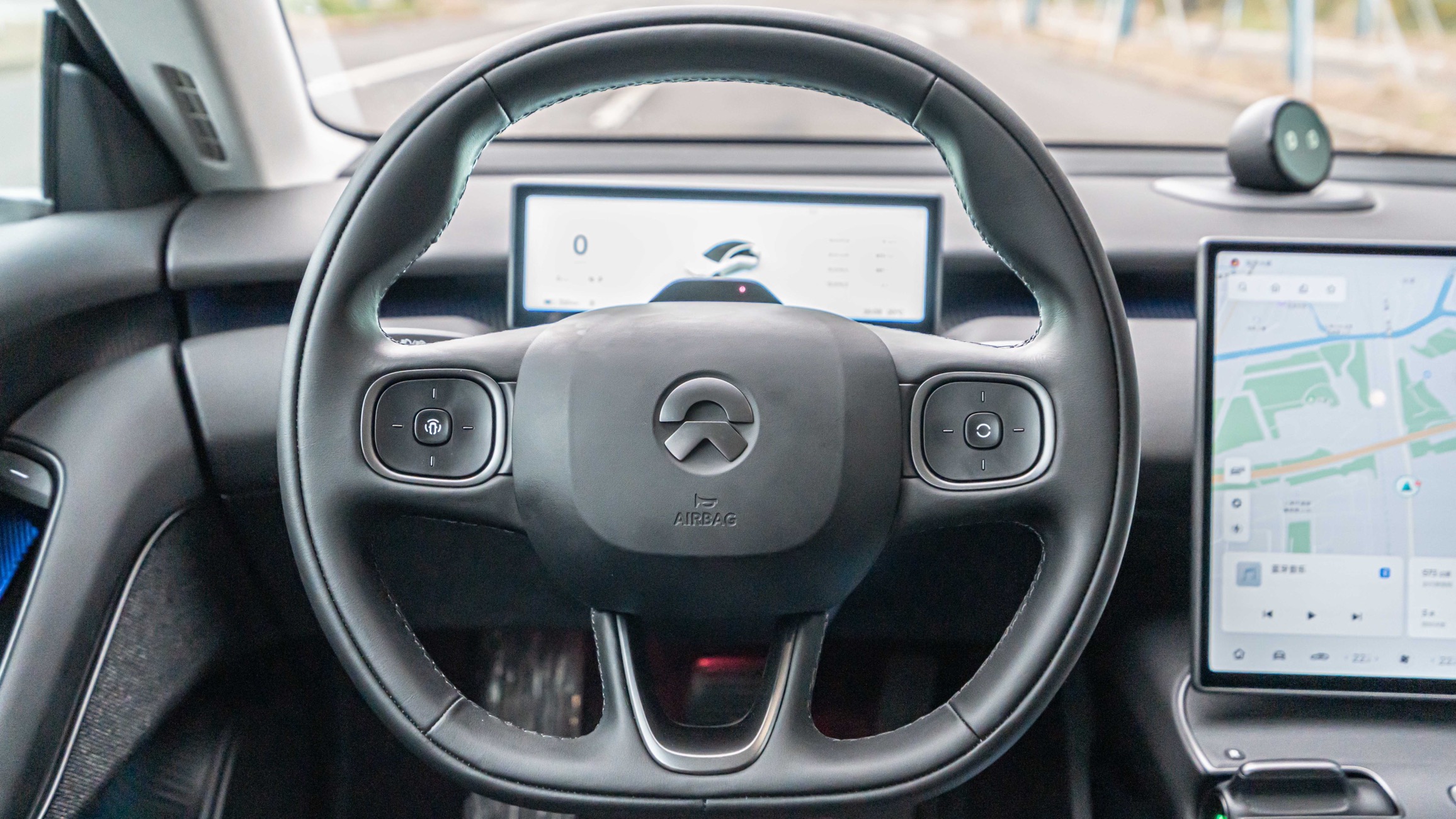
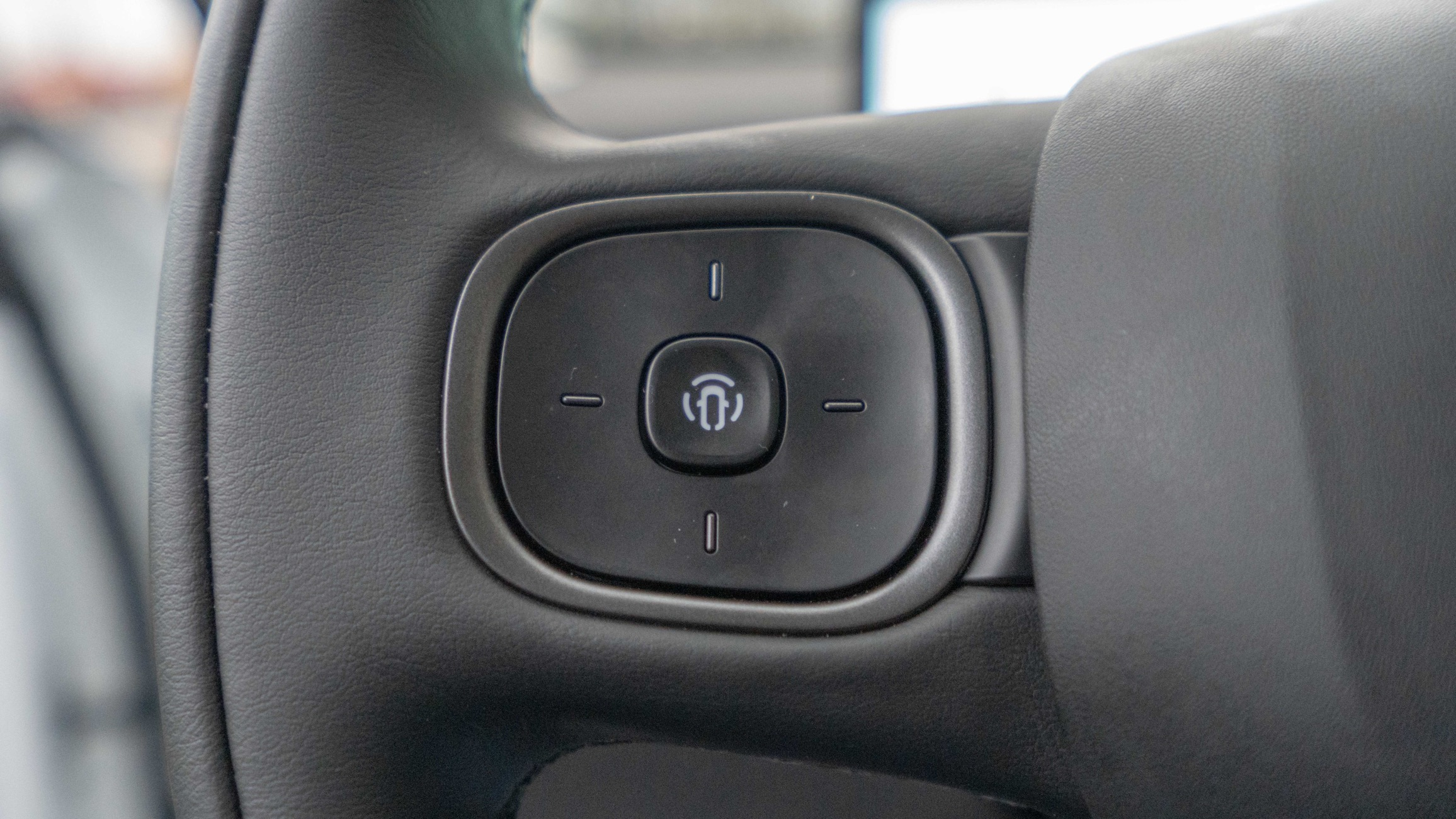
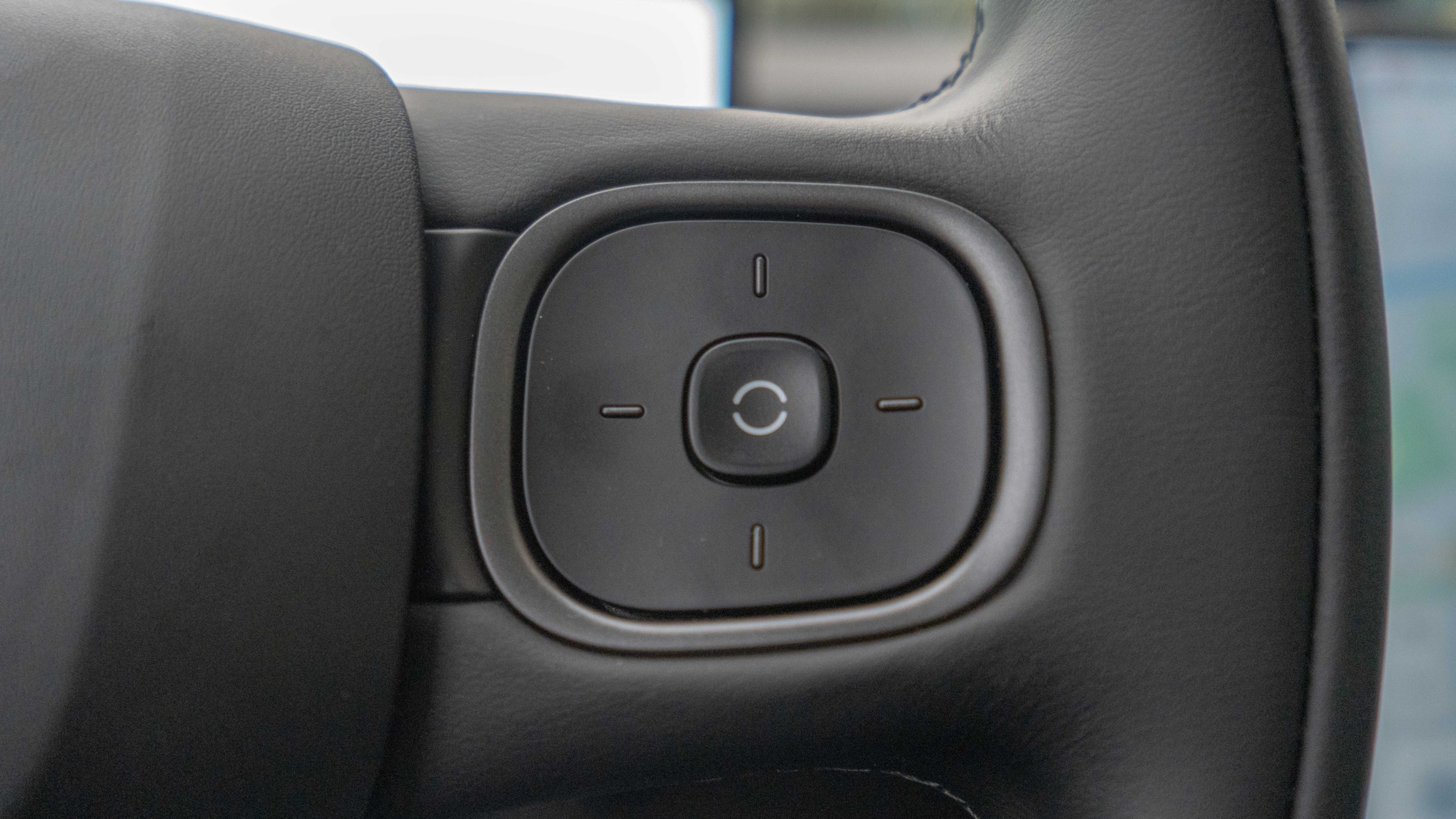
The left lever controls the lighting, while the right one is for the windshield wipers. Obviously, NIO did not adopt the current popular gear lever design for electric vehicles.
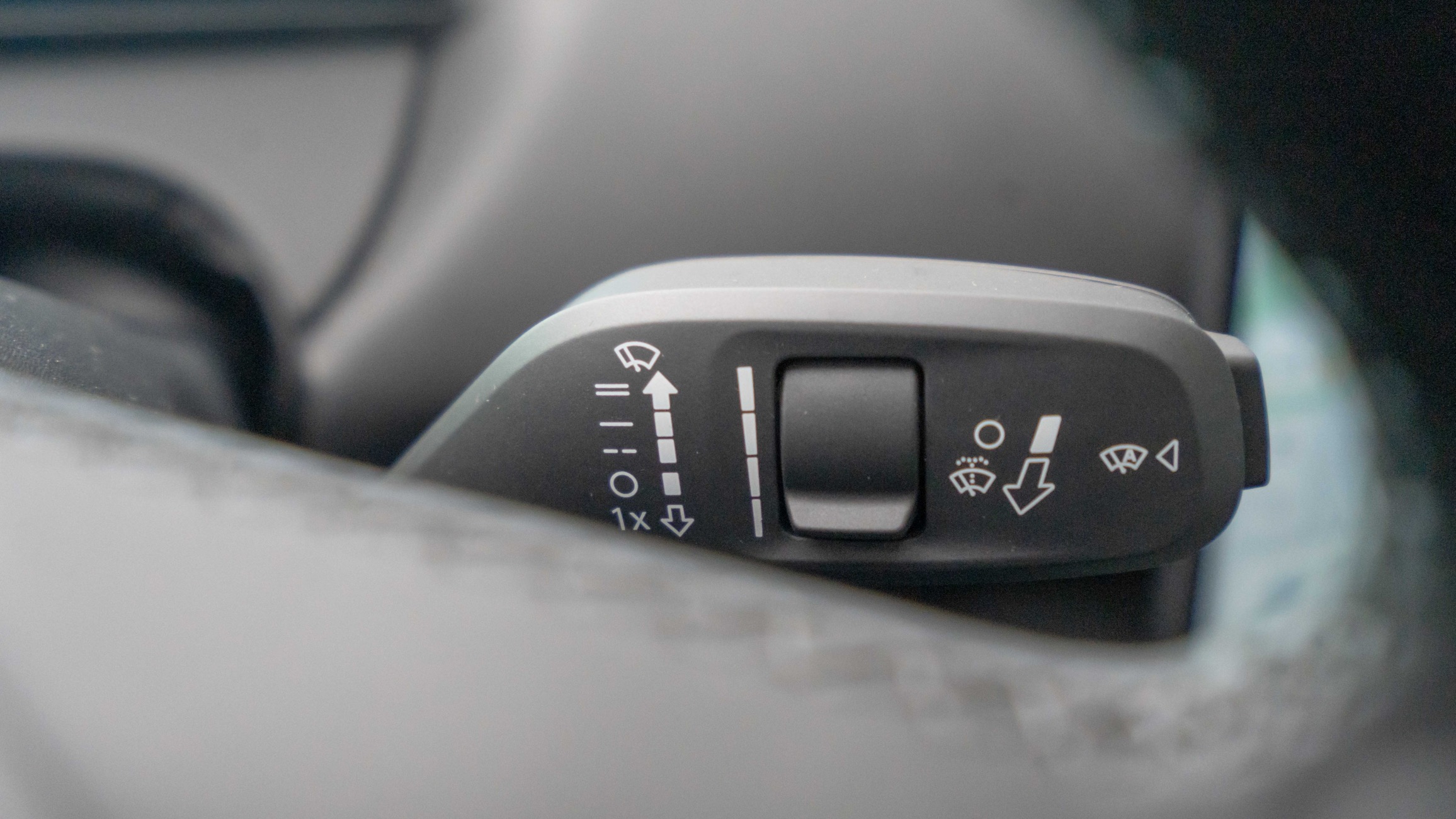
The size specifications of the instrument panel and central control screen are consistent with those of ET7/ES7. However, the difference is that ET5 changed the screen dimming mode, so there will be no black stripes like ET7/ES7 when shooting the screen.


I really don’t like this square central control screen, which is not suitable for navigation or entertainment video watching. Especially when watching movies, less than half of the screen is used.

The soul of NIO models — NOMI — is still in the middle of the central control console. Will you choose to purchase NOMI when buying ET5? Welcome to discuss in the comments section.
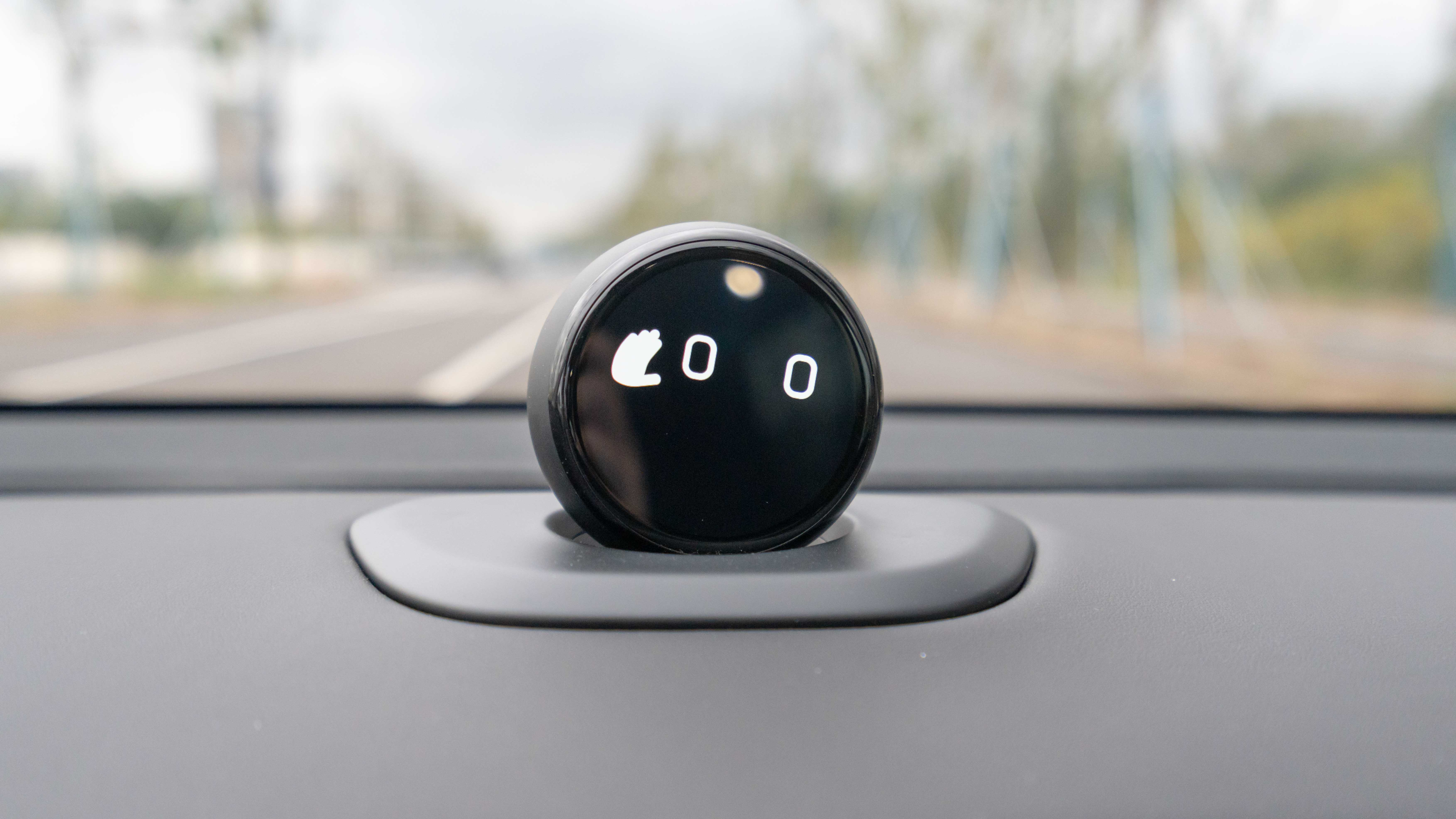
All the air outlets in the front row are hidden in the central control console and cannot be seen without careful observation.
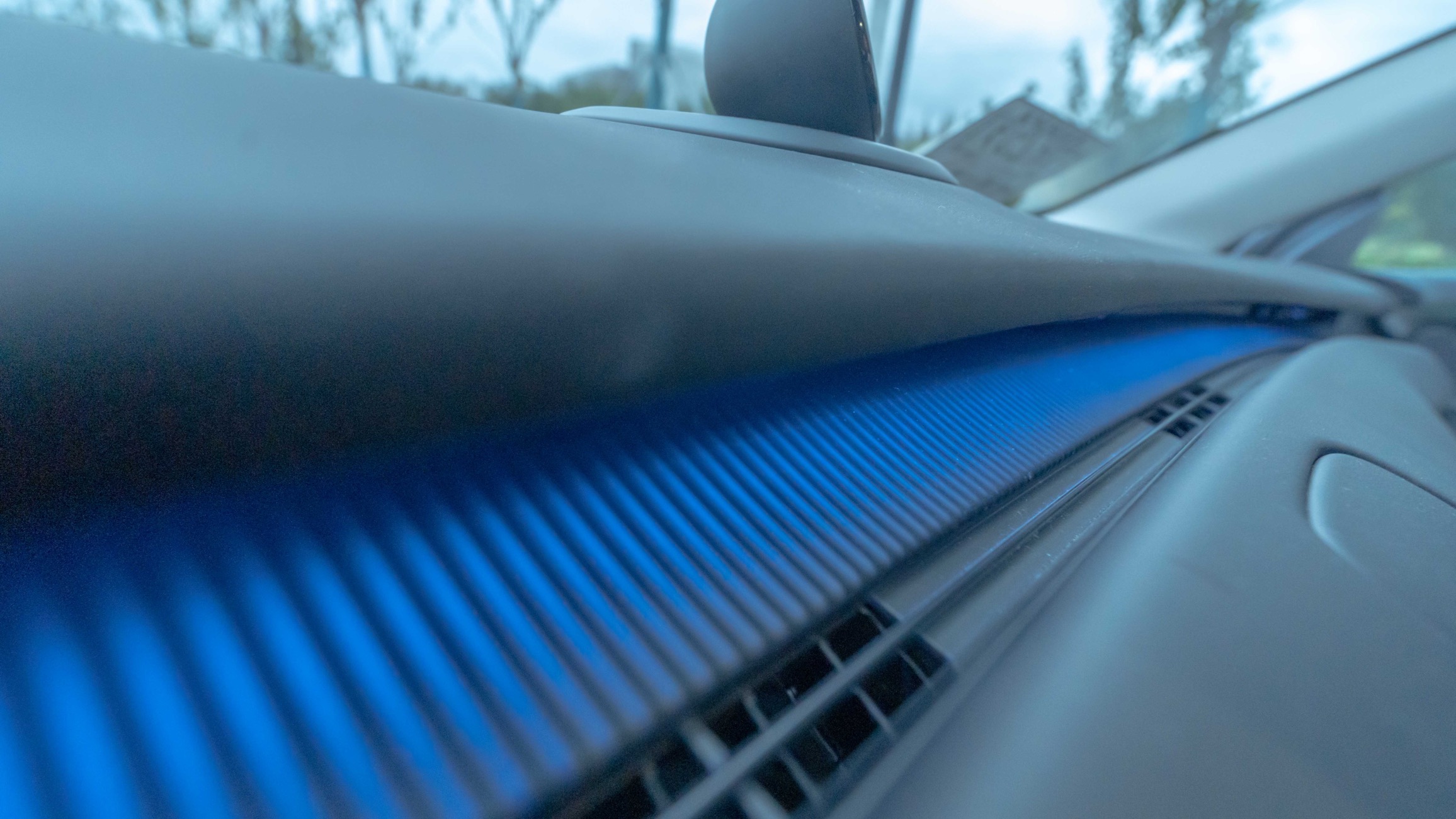 The car doors are designed without frames, which means they may have the common issue of wind-leaking, but it is hardly noticeable unless driving at speeds above 120 km/h. Additionally, due to the use of single-layer glass, the NVH effect is naturally inferior to that of the ET7/ES7.
The car doors are designed without frames, which means they may have the common issue of wind-leaking, but it is hardly noticeable unless driving at speeds above 120 km/h. Additionally, due to the use of single-layer glass, the NVH effect is naturally inferior to that of the ET7/ES7.
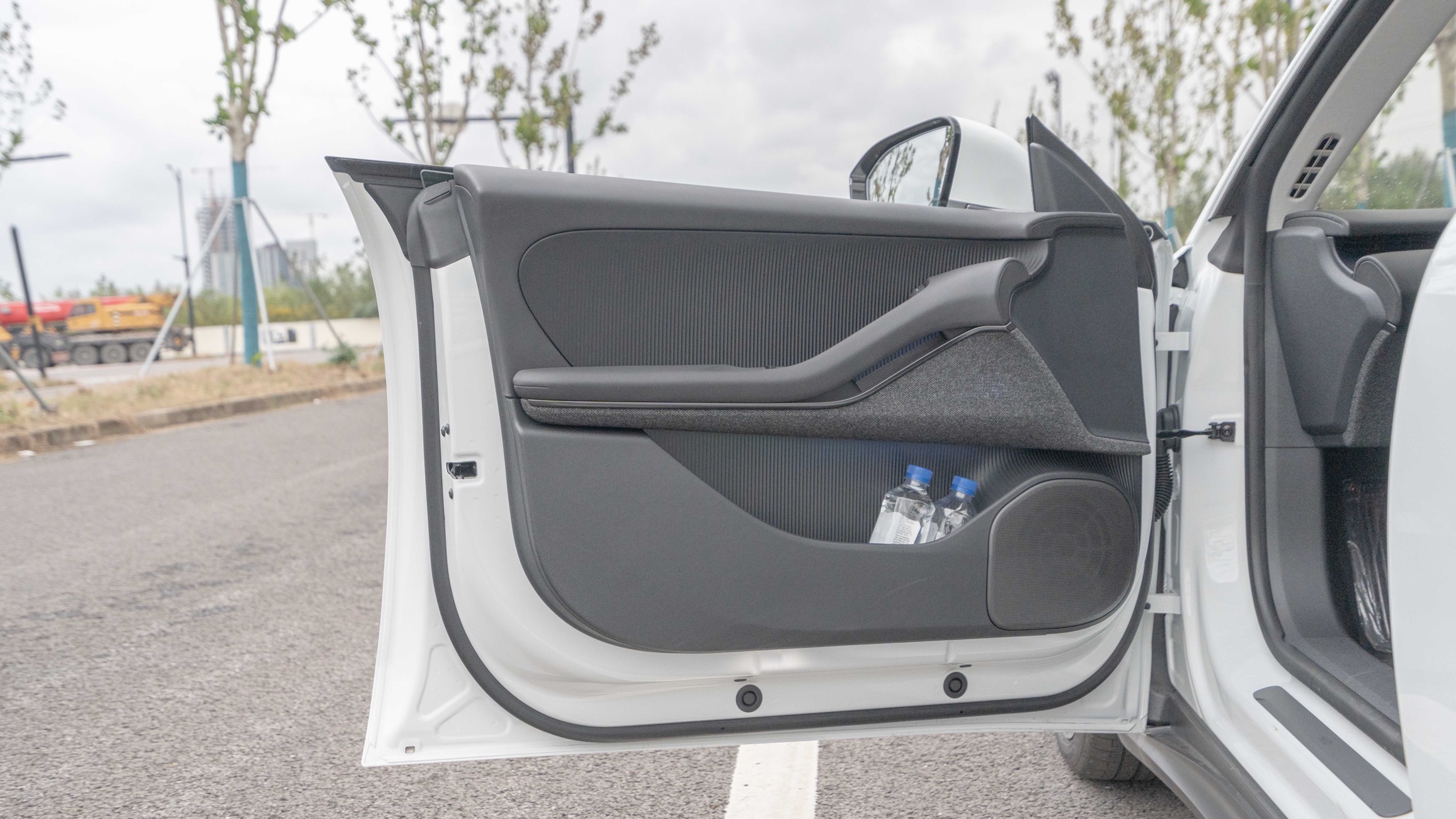
The control part of the car windows is the same as the other two models, except that the material has been changed from renewable rattan wood to Clean+ polymer material. The operation feel is still tight and there is no loose feeling.
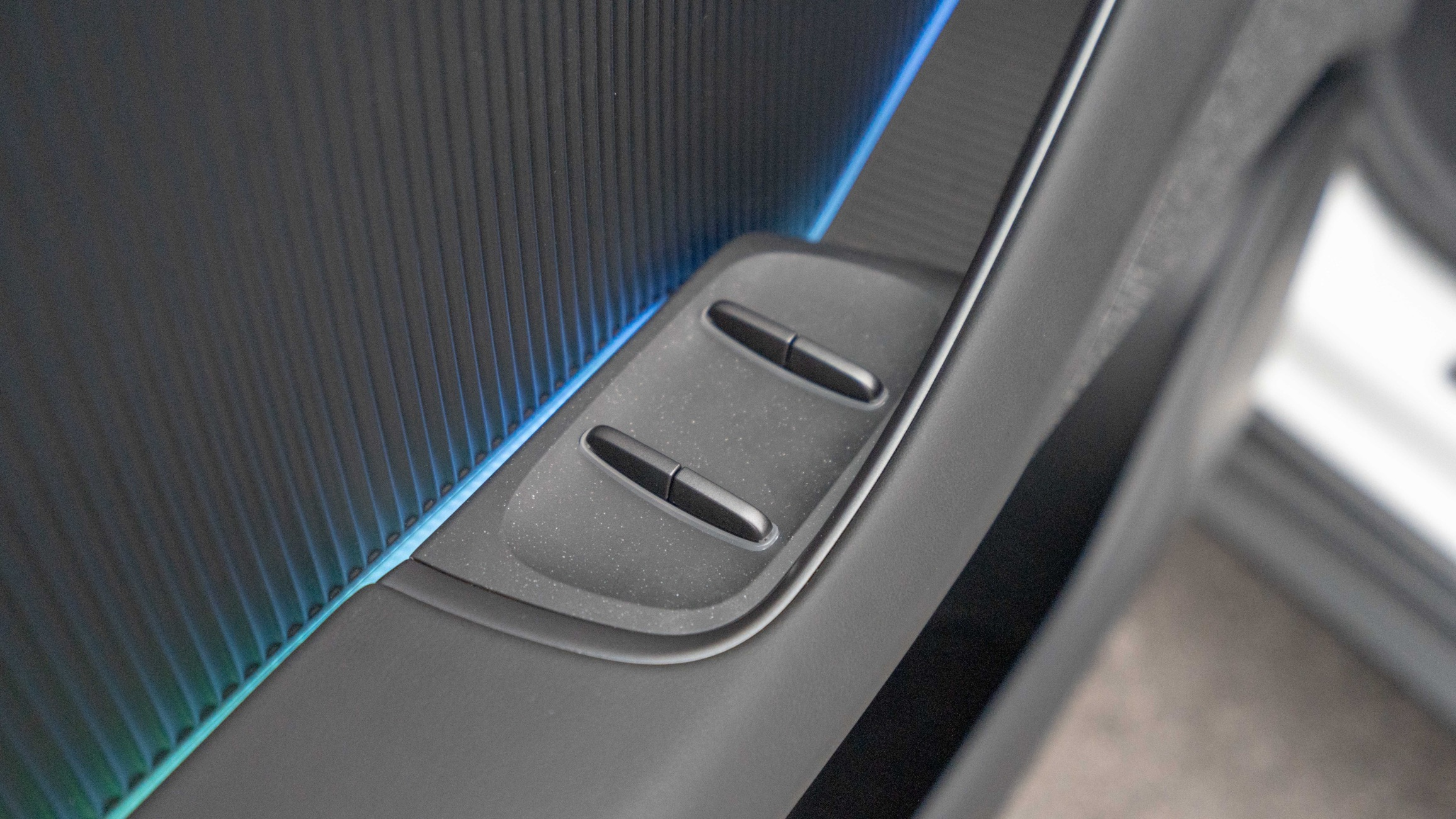
The door opening button is placed at the top of the armrest, similar to the design of Model 3. People who often drive or ride in a Tesla should be very accustomed to it. At the same time, all four doors are equipped with mechanical emergency switches.
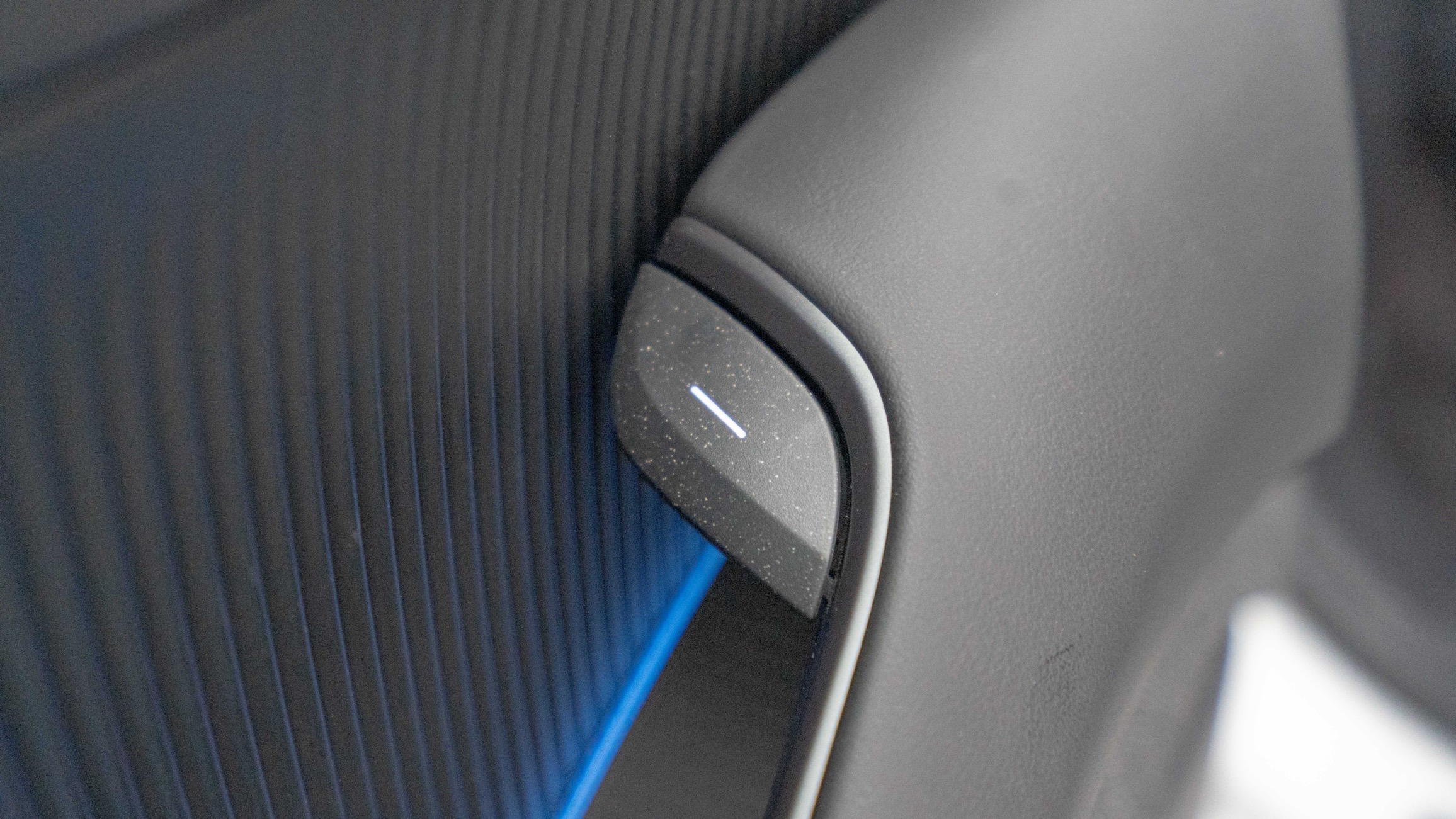
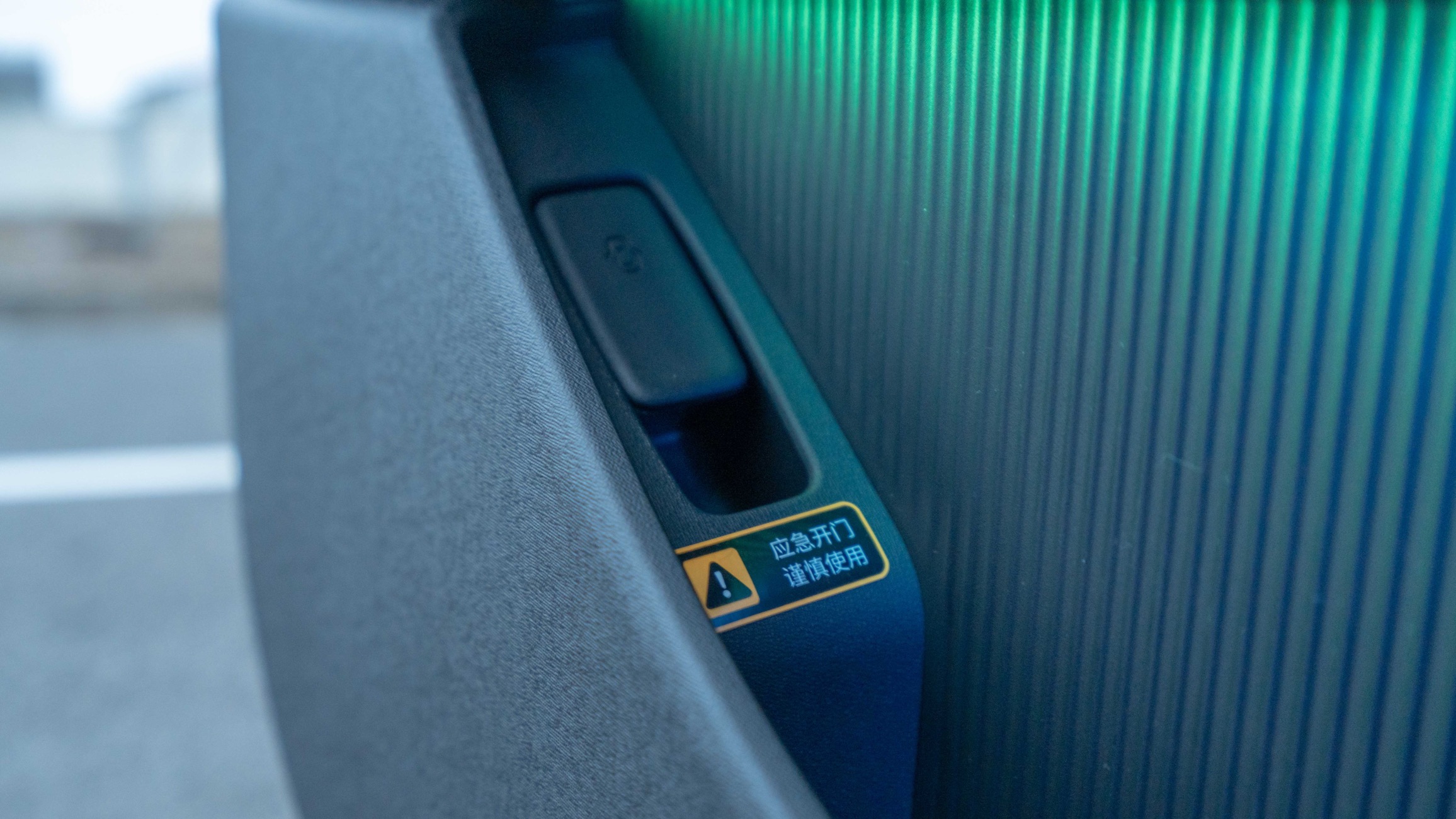
The storage space on the front door panel is large enough to hold 4-5 bottles of mineral water. The subwoofer is also located here, and when listening to music while parked with the volume turned up, you can feel the sound waves coming from the speaker.

 The part of the door panel with a grid pattern is made of rubber material, while the gray part near the armrest area is made of a wool-like fabric material.
The part of the door panel with a grid pattern is made of rubber material, while the gray part near the armrest area is made of a wool-like fabric material.

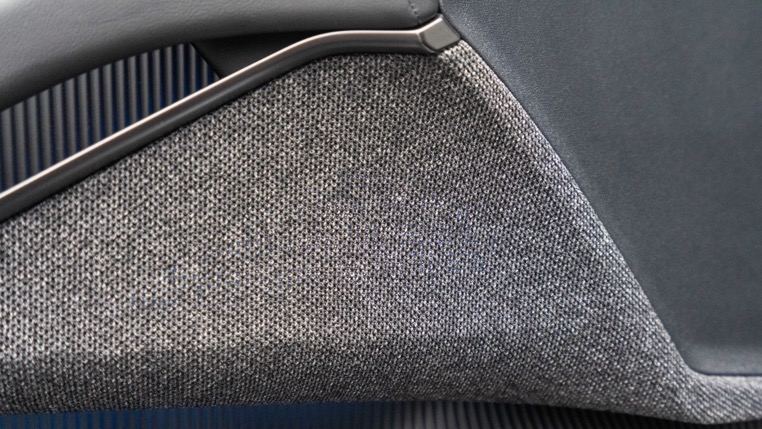
Large areas below the center console also use this fabric material.
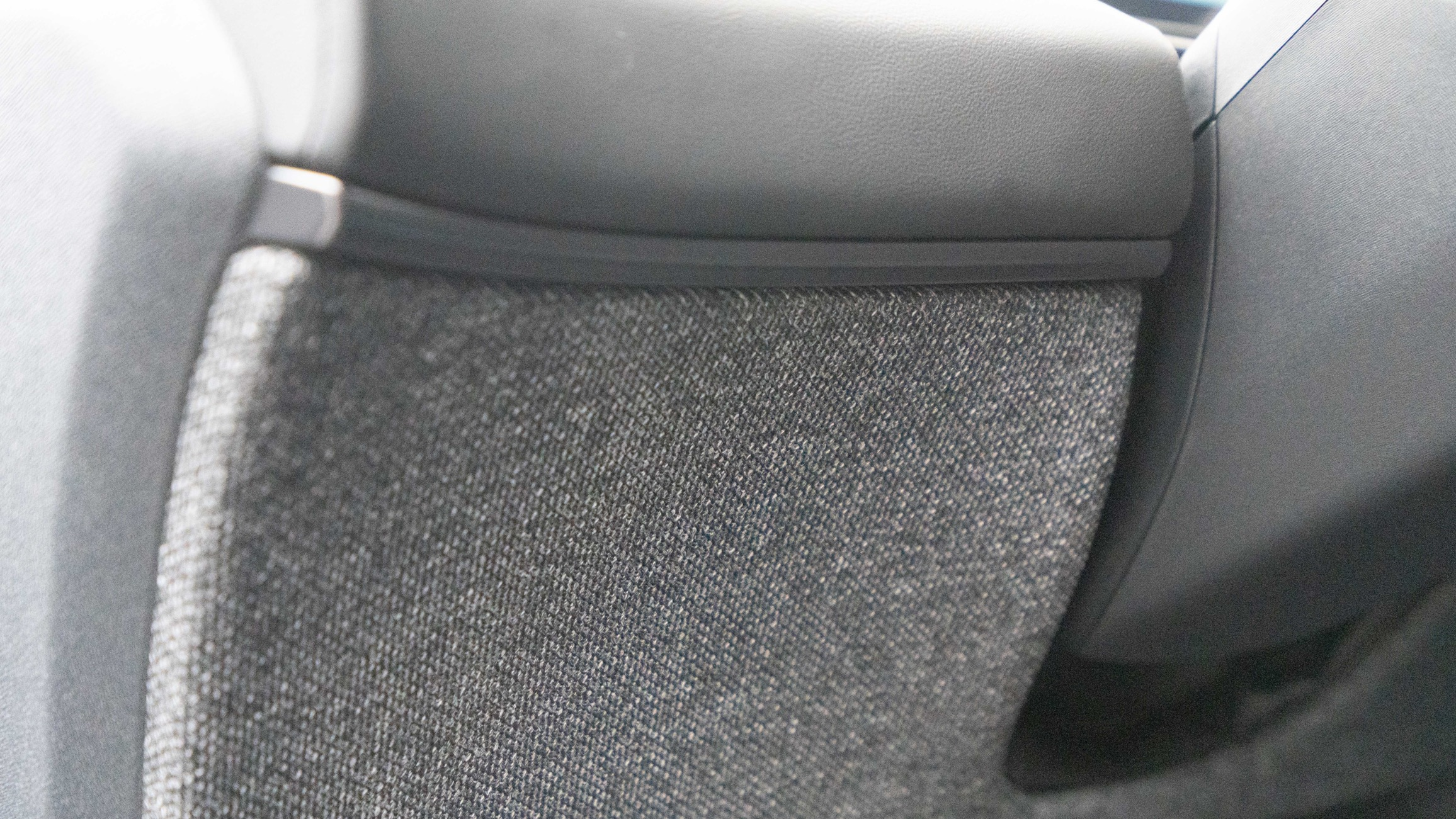
Returning to the central armrest, the layout is consistent with the two older models, but the material has been changed from the original renewable rattan to Clean+ composite material, which feels a bit rough to the touch.

In my personal opinion, although this material may not look as good as piano paint at first glance, over time, piano paint will accumulate dust and be prone to scratches, unlike this matte composite material.
The gear position is still designed in the way that NIO has always used. As a P7 owner, I have mistakenly turned on the windshield wipers several times when trying to shift gears upon getting into the car.

The three commonly used buttons have a tight feel and do not feel loose.
 The hollow storage space underneath is still reserved, although it’s not as capacious as an SUV, it’s enough to hold a lot of sundries. The car-mounted fast charging port is also placed in this position.
The hollow storage space underneath is still reserved, although it’s not as capacious as an SUV, it’s enough to hold a lot of sundries. The car-mounted fast charging port is also placed in this position.

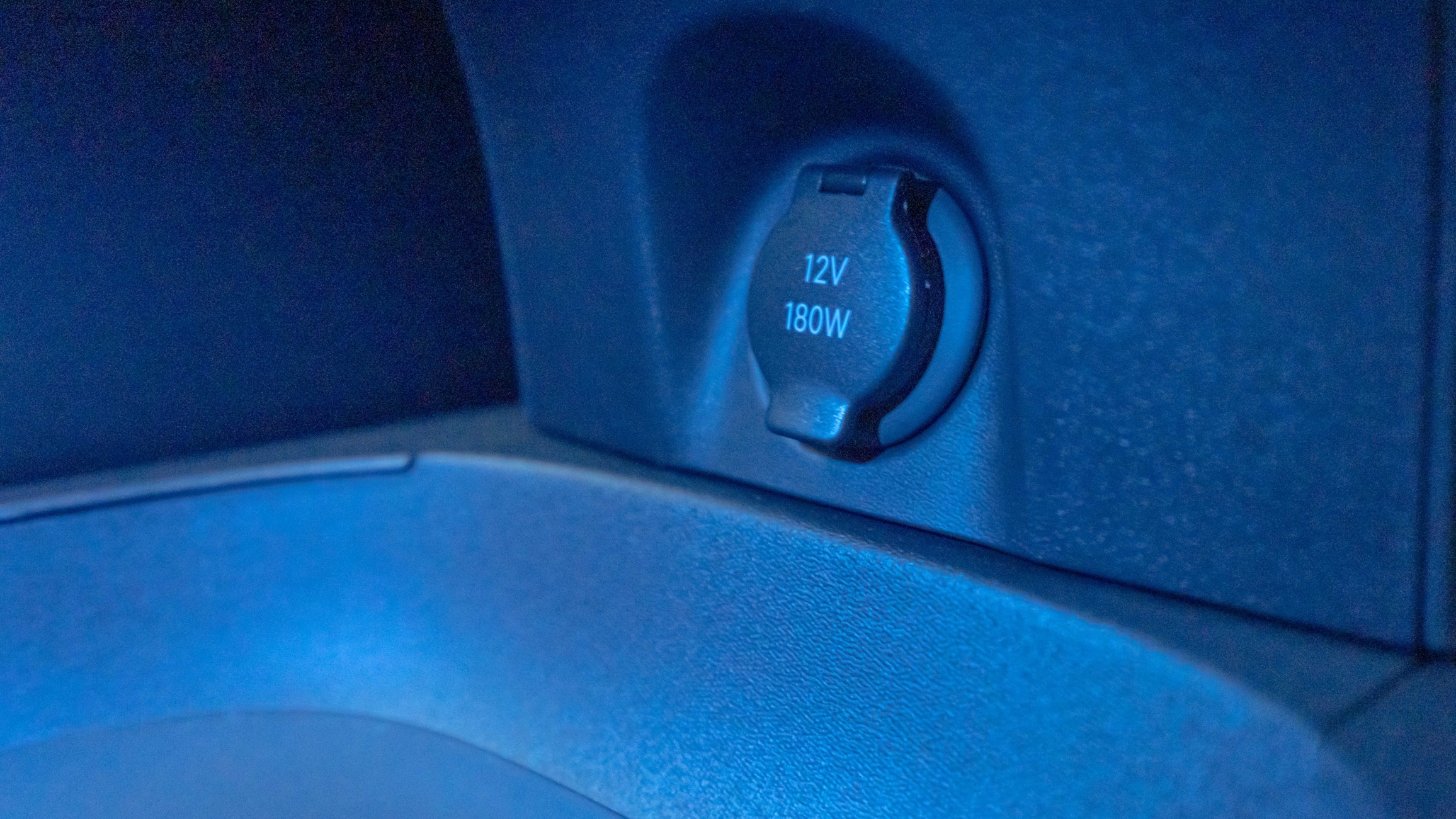
The center console still adopts the design of being able to be opened from both sides, but it seems to have undergone some minor adjustments, and it won’t run into the seat side like the case of ET7 before being fully opened.


After being opened, the entire space is almost square-shaped, not very long in length, but the depth is approximately the length of a 500 ml bottle of mineral water plus a key with an official protective cover on it.
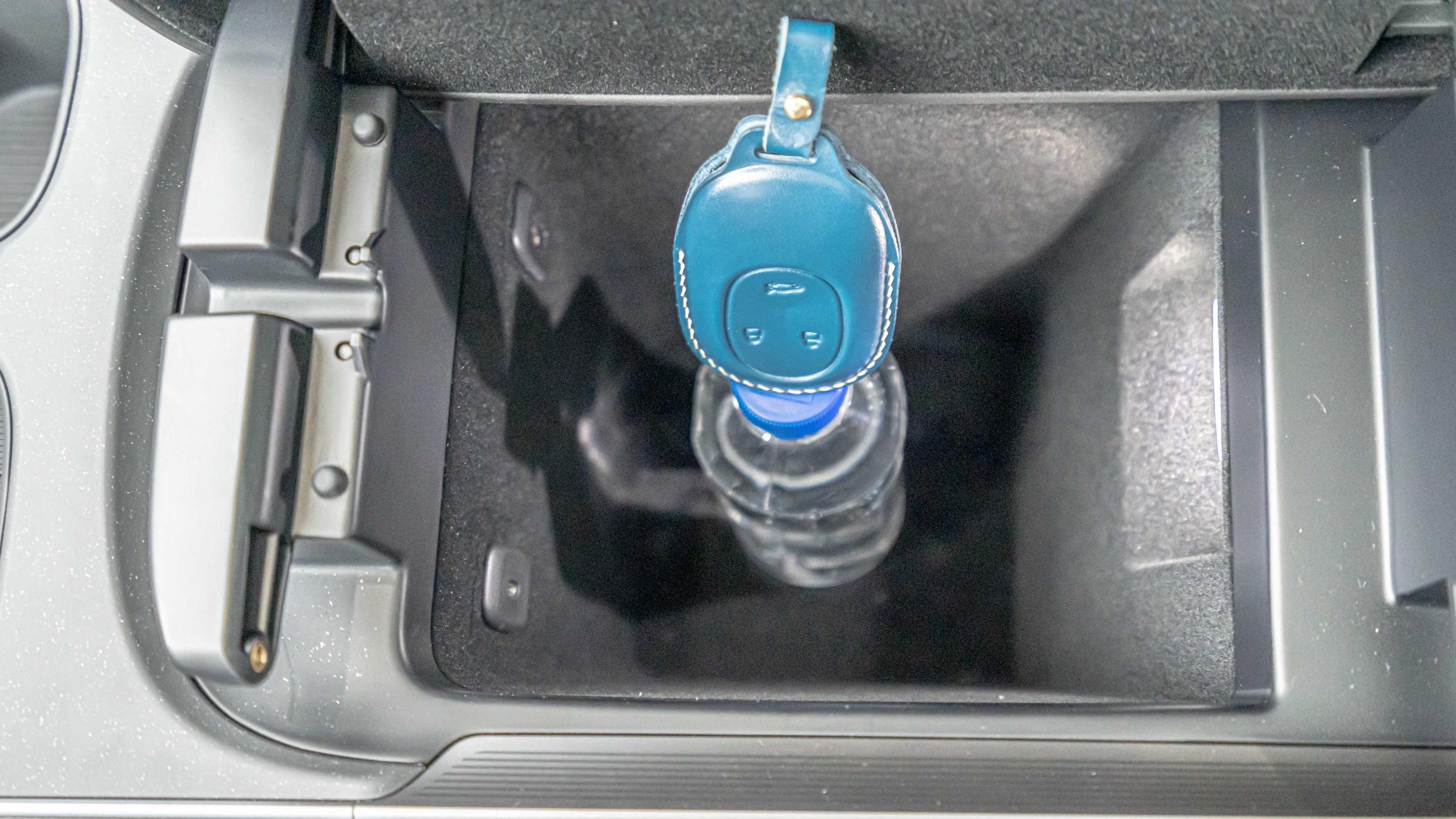
There is a Type C charging interface and a Type A data interface for connecting USB flash drives inside the center console.
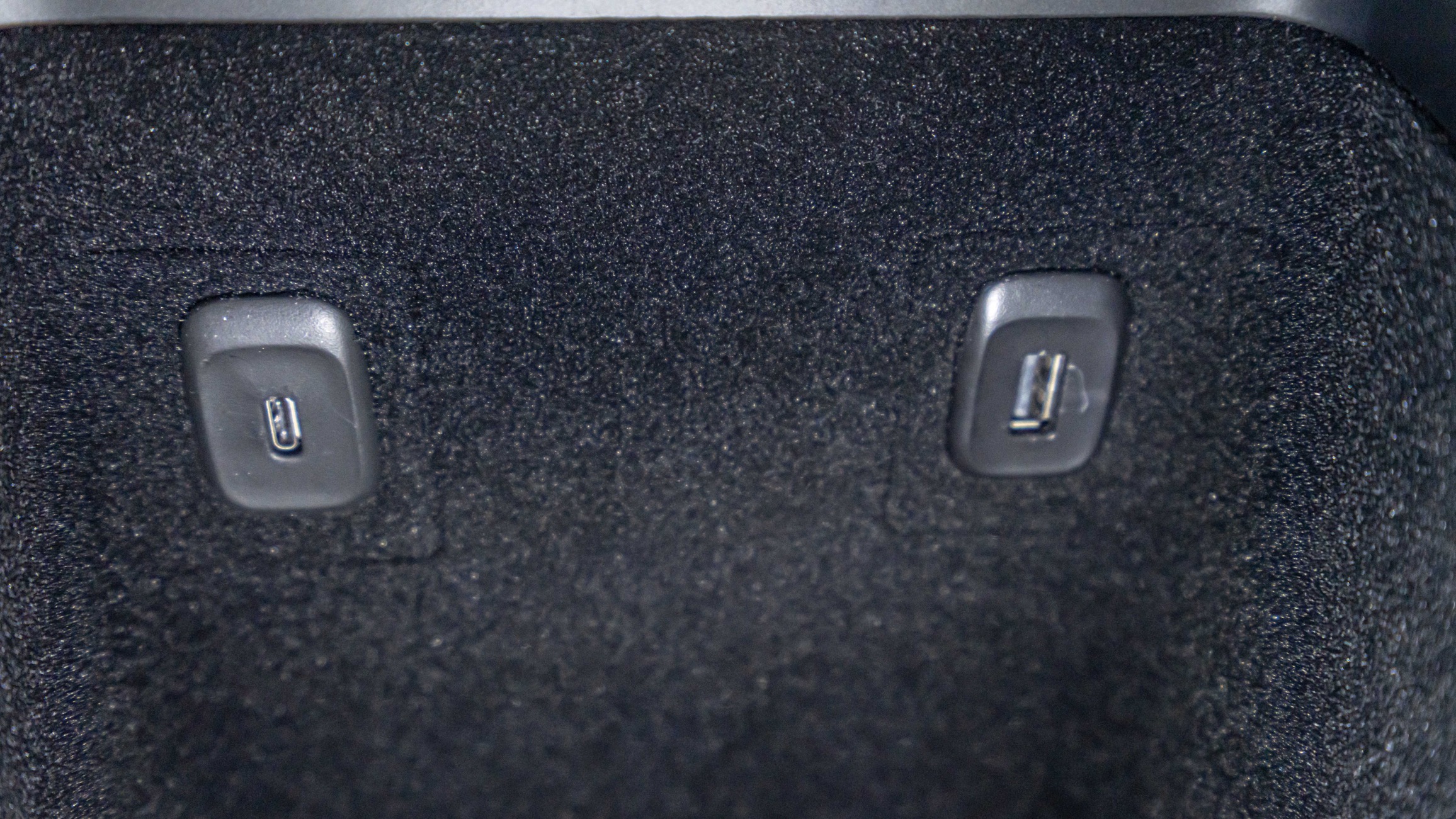 The size of the rearview mirror is large, but due to the small visible area of the rear windshield, even if the size of the rearview mirror is larger, it cannot see much information about the rear road conditions. It is necessary to pay more attention when driving on the highway. Personally, I think it would be better to replace it with a streaming media rearview mirror.
The size of the rearview mirror is large, but due to the small visible area of the rear windshield, even if the size of the rearview mirror is larger, it cannot see much information about the rear road conditions. It is necessary to pay more attention when driving on the highway. Personally, I think it would be better to replace it with a streaming media rearview mirror.
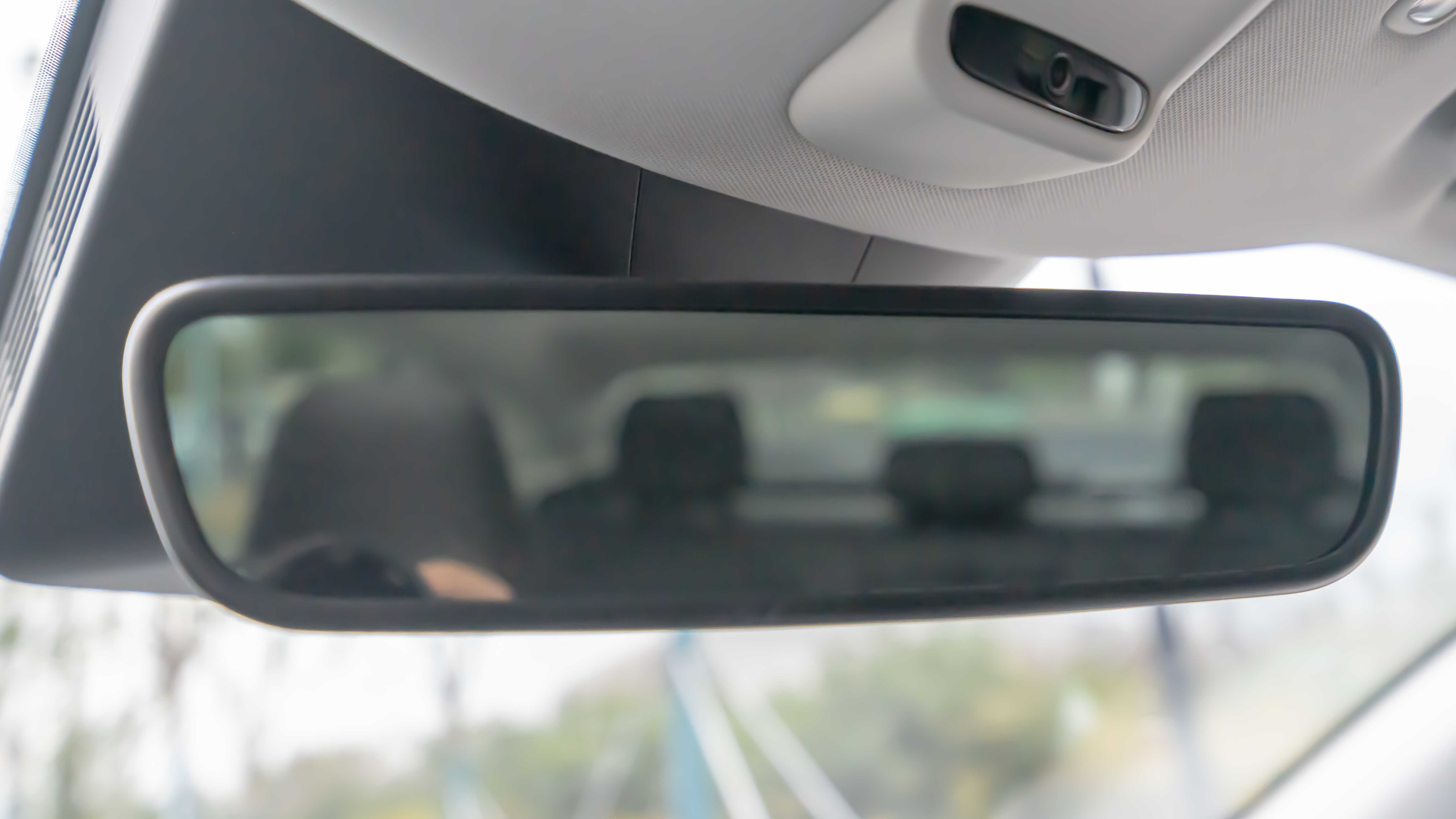
At the top are two reading lights, an SOS button, and a camera. The brightness of the reading lights is moderate.


The roof of the car uses a whole piece of glass with an area of 1.28 square meters. However, the color of this glass is not as dark as many ultraviolet-resistant glasses. I don’t know if the car will be particularly sunny in the summer.
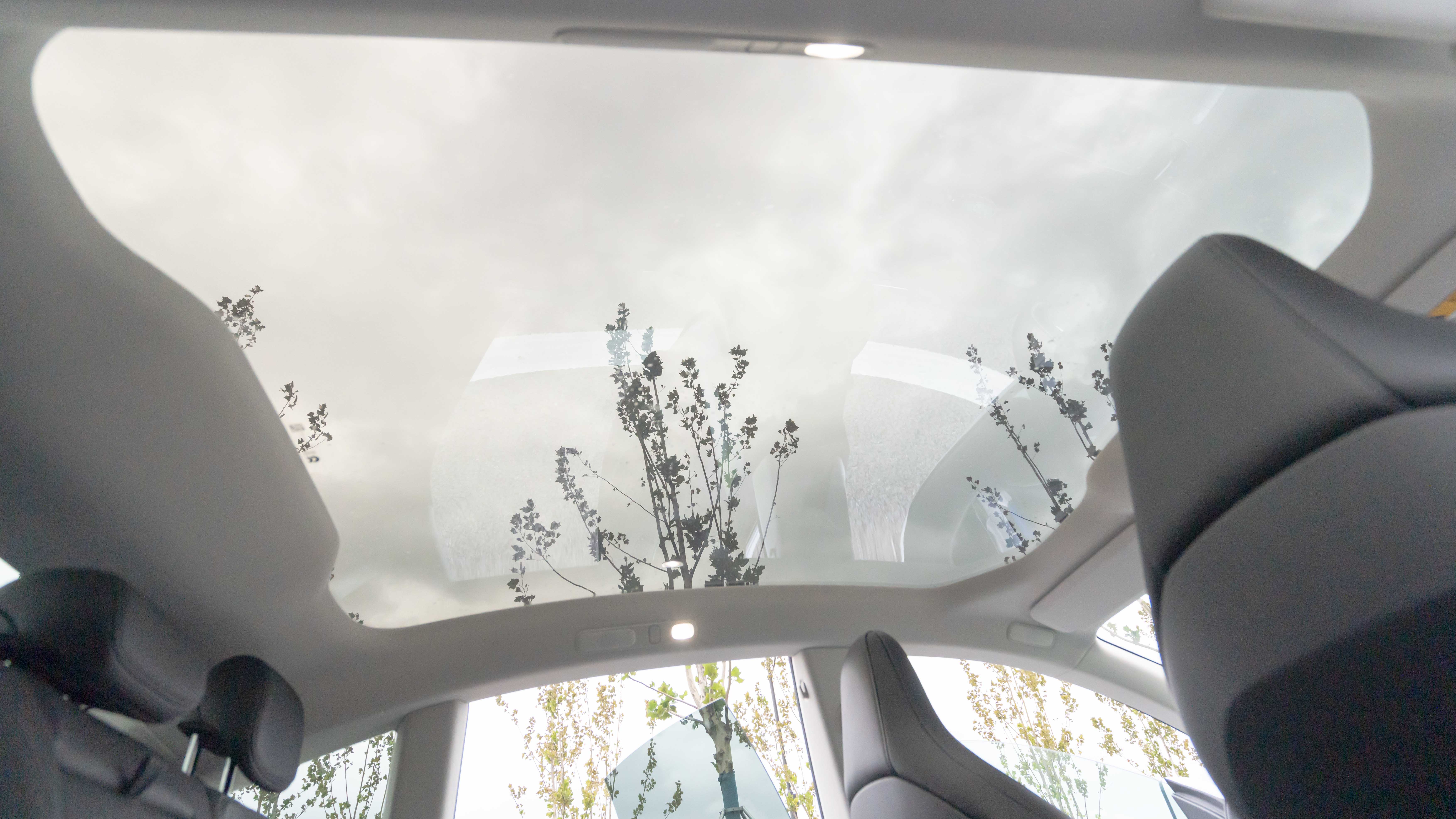
The front seats adopt a one-piece headrest design, and the overall shape has been jokingly called “Patrick Star”. For specific front row parameters, please refer to the following picture.
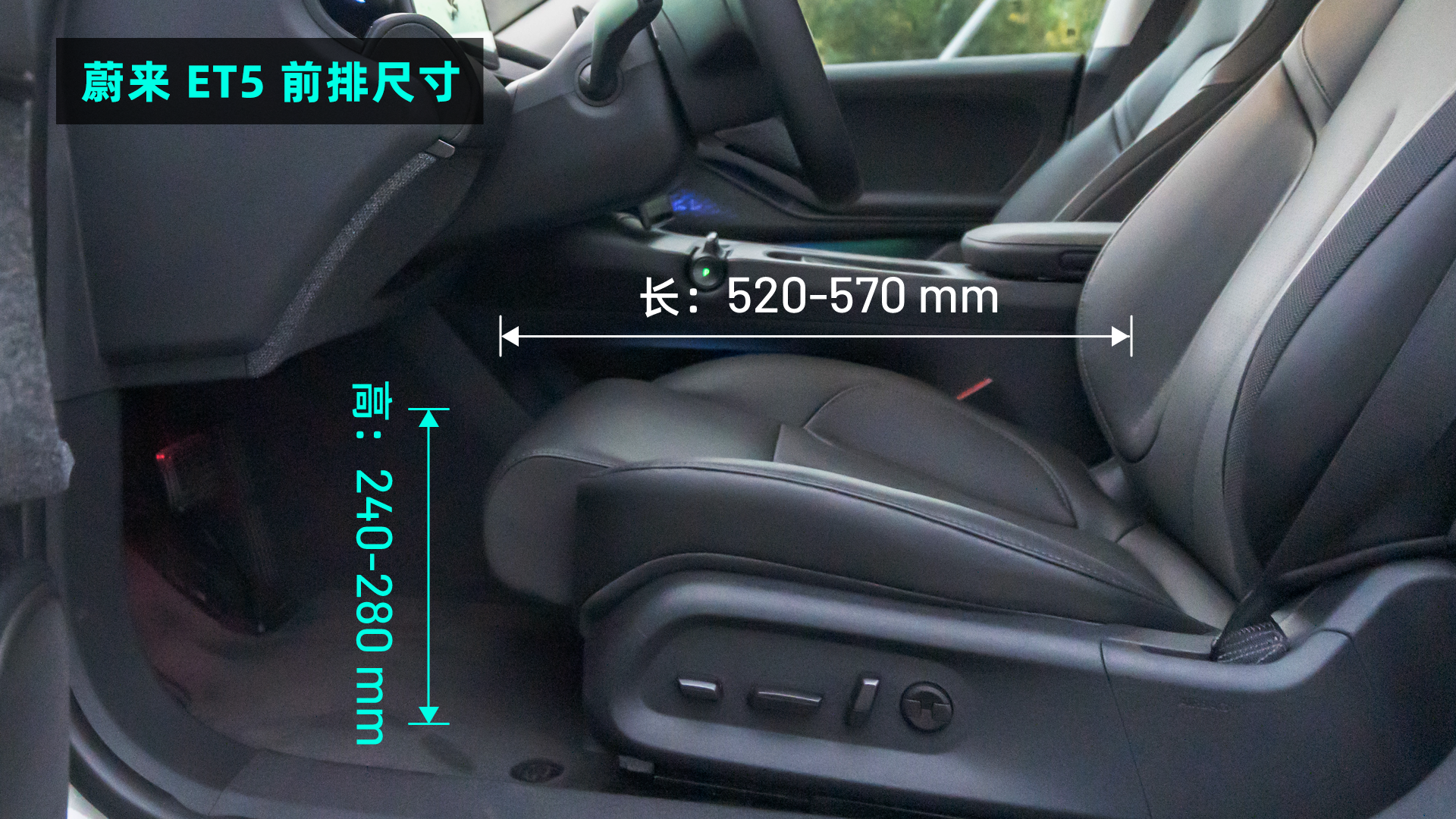
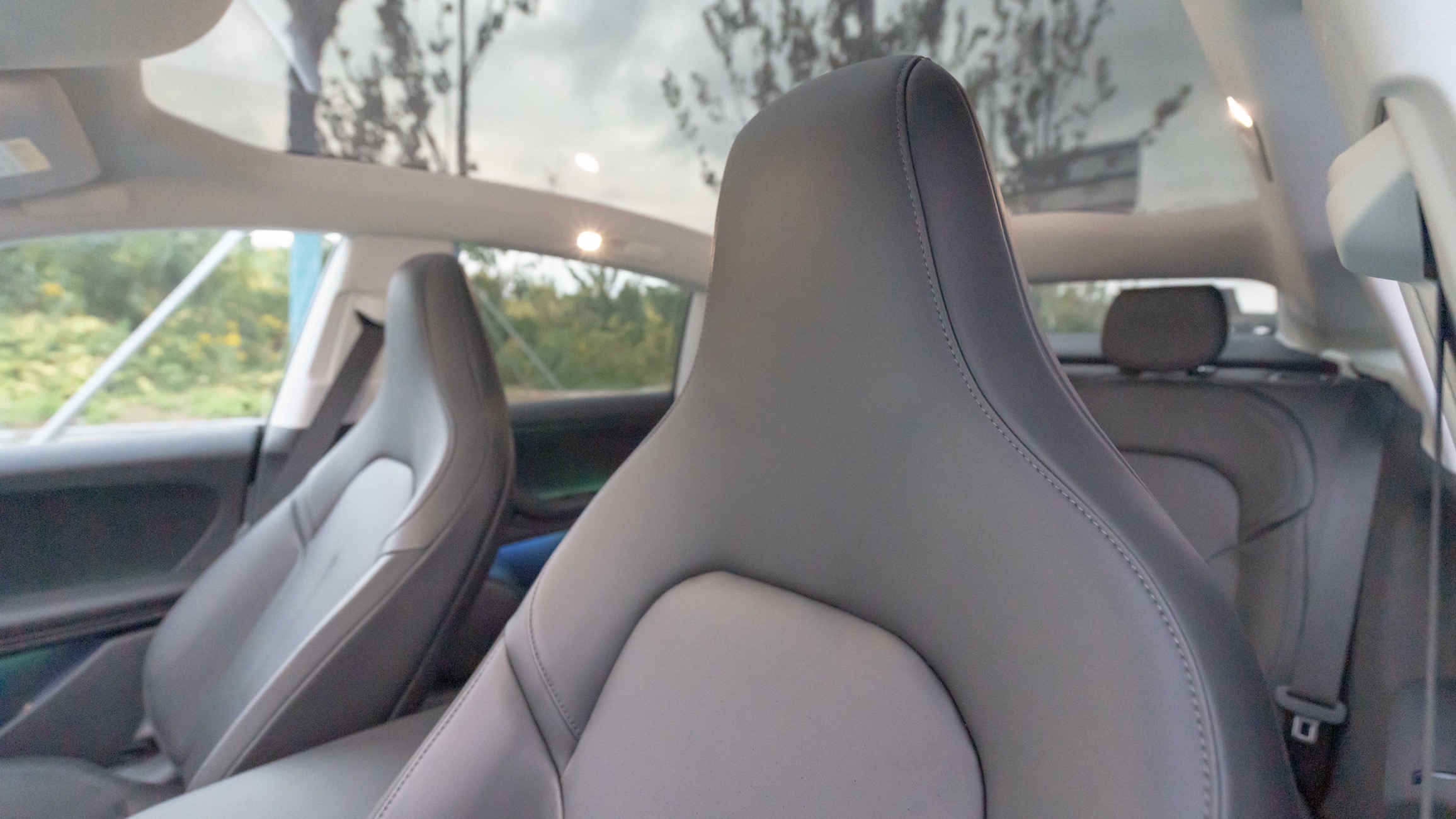 Due to the optional Comfort Package, the front seat cushions can be extended. The size of the extension can be seen in the diagram below. Personally, as someone who is 176 cm tall, I can say that the extension is sufficient to support my entire thigh comfortably.
Due to the optional Comfort Package, the front seat cushions can be extended. The size of the extension can be seen in the diagram below. Personally, as someone who is 176 cm tall, I can say that the extension is sufficient to support my entire thigh comfortably.
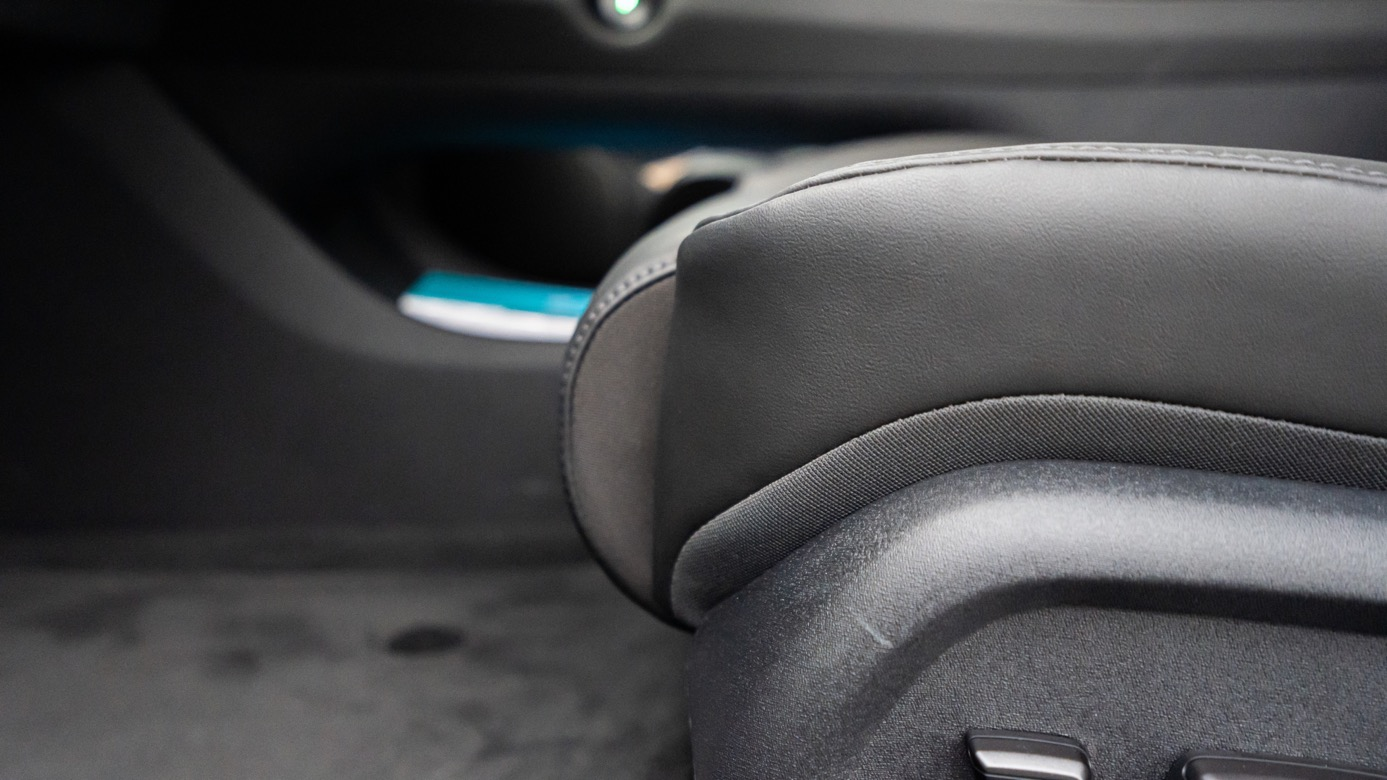
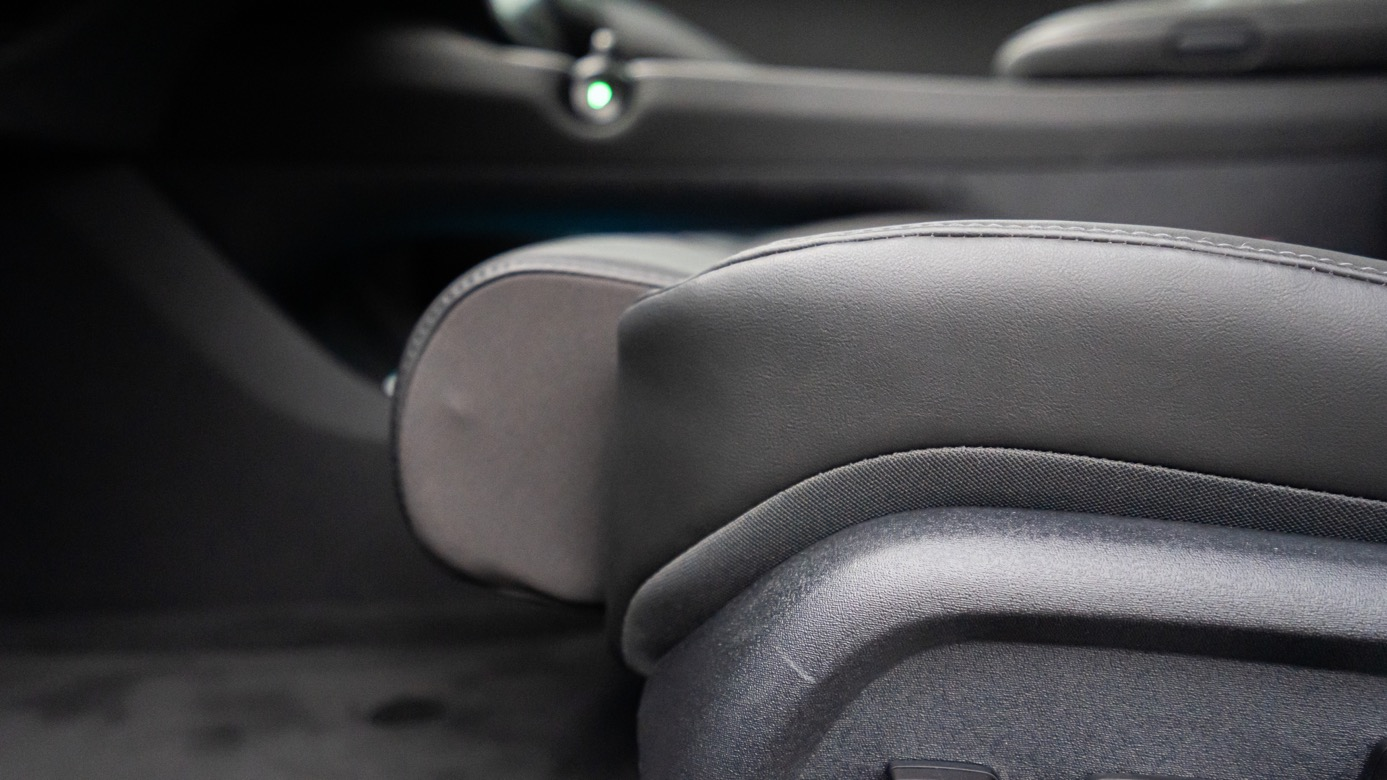
As for the seating posture, I can responsibly tell you that the seats in the front row are indeed quite high. The first few times I got on the car, I thought the seat was not adjusted to the lowest level, which prevented me from driving semi-lying down like many sedans. Moreover, perhaps due to the seating posture, there was a noticeable discomfort in my lower back during long drives, which could not be effectively relieved by the massage function. This means that this car is not suitable for long-distance driving.
As shown in the figure below, my model Mingming, who is 175 cm tall and weighs 75 kg, sits in the front seat at the lowest height.
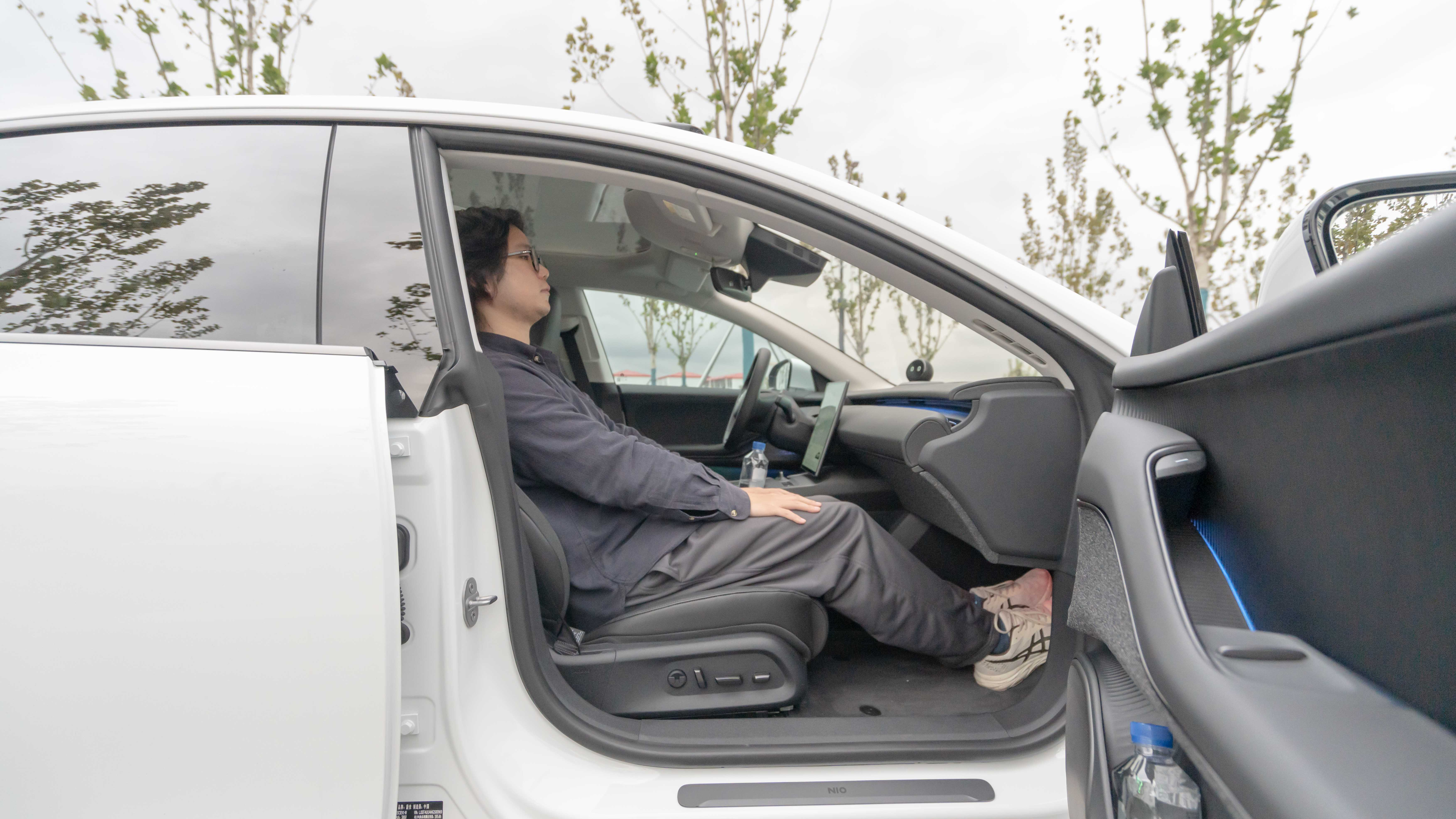
However, the high seating position also brings a benefit, namely a panoramic view of the car’s front, without worrying about any blind spots. This gives the driver more confidence when driving on narrow roads.
The headroom in the front row is more than enough, with approximately four fingers’ width of space.

Moving on to the back row, the features here are not as luxurious as those in the front row. The only seat heating is also available with the Comfort Package, as shown in the diagram below.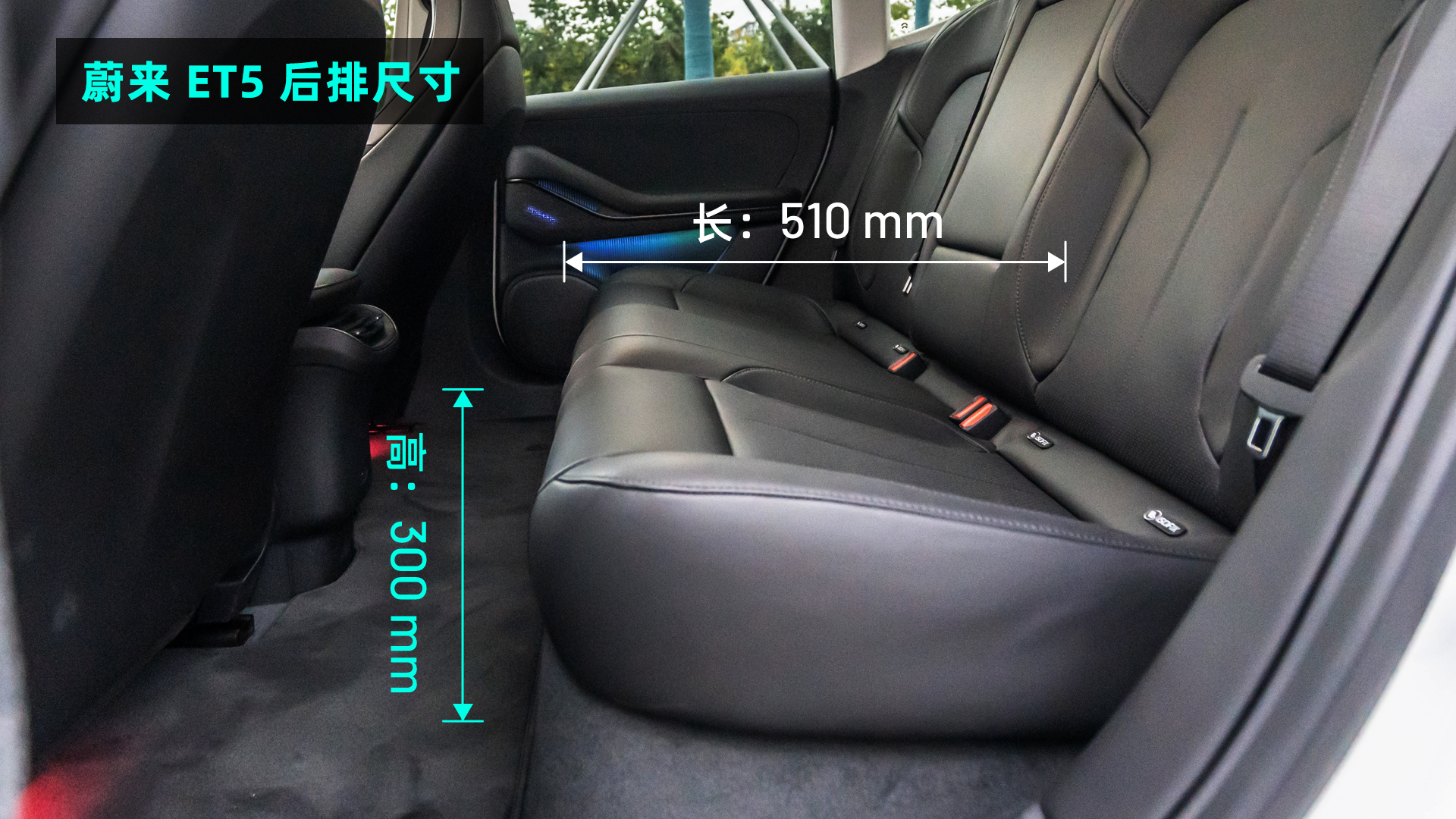
Let’s start with the space issue that everyone is concerned about. In the front row, we set the passenger seat to the same position as the driver’s seat. As you can see, due to the battery swapping mechanism, the seating posture in the rear row is as high as that of the ET7, which makes it difficult to stretch out the legs and feels like sitting on a small bench. Moreover, when the front row seat is adjusted to the lowest position, the rear passengers can barely stretch their feet into the front seat.

At this time, there is about two fists of leg space, which is absolutely sufficient. However, there is no headroom left as soon as you sit up straight, even if you lie completely on the seat, there is only 1-2 fingers of headspace at most.


Overall, the riding experience of ET5 is not comfortable, neither in the front nor the back, and it is not as good as ET7.
The rear air outlet has been changed to a conventional two-outlet design, the rear touch screen on the ET7 has been removed, and there is only one Type C charging port in the rear.
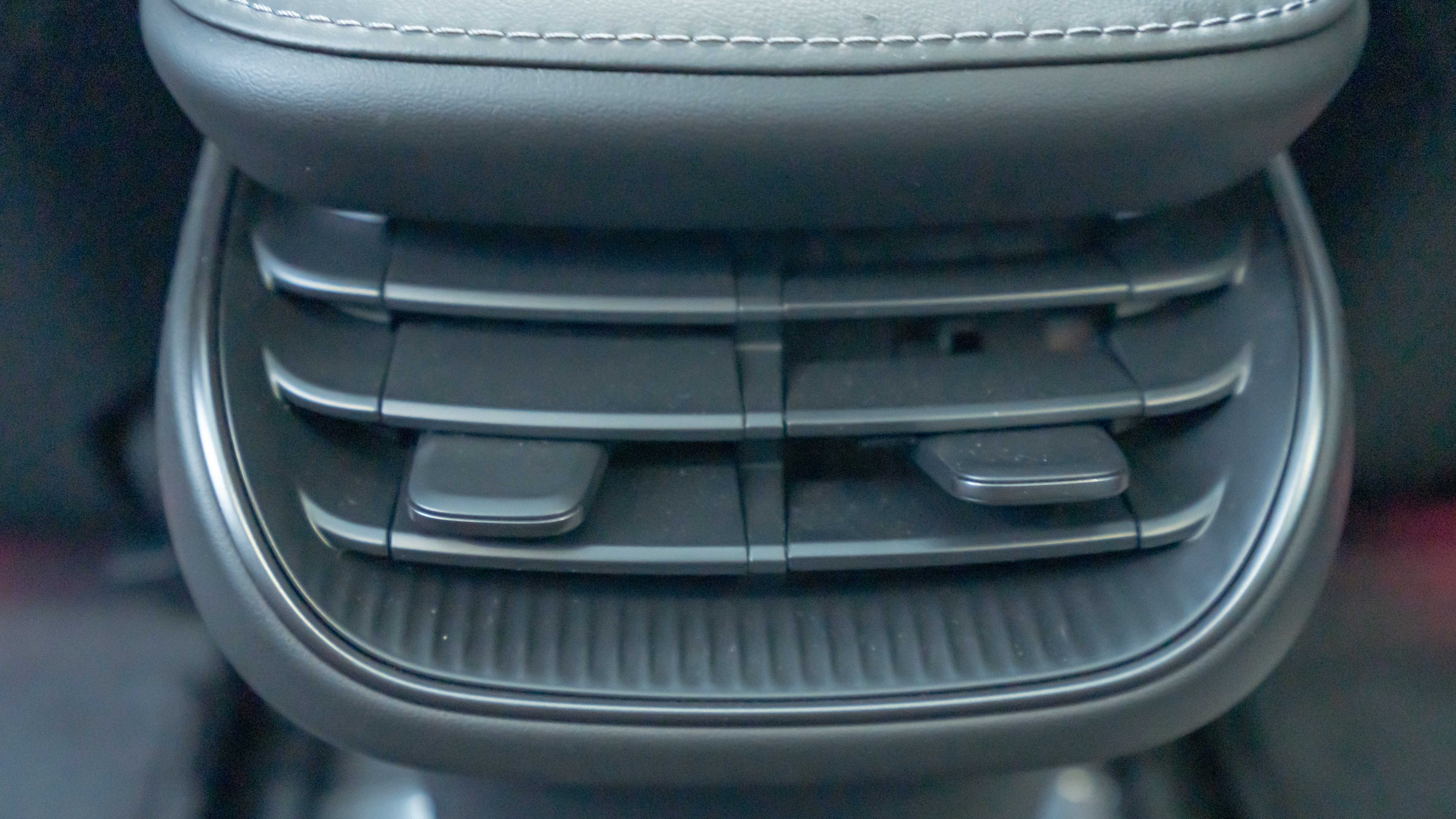
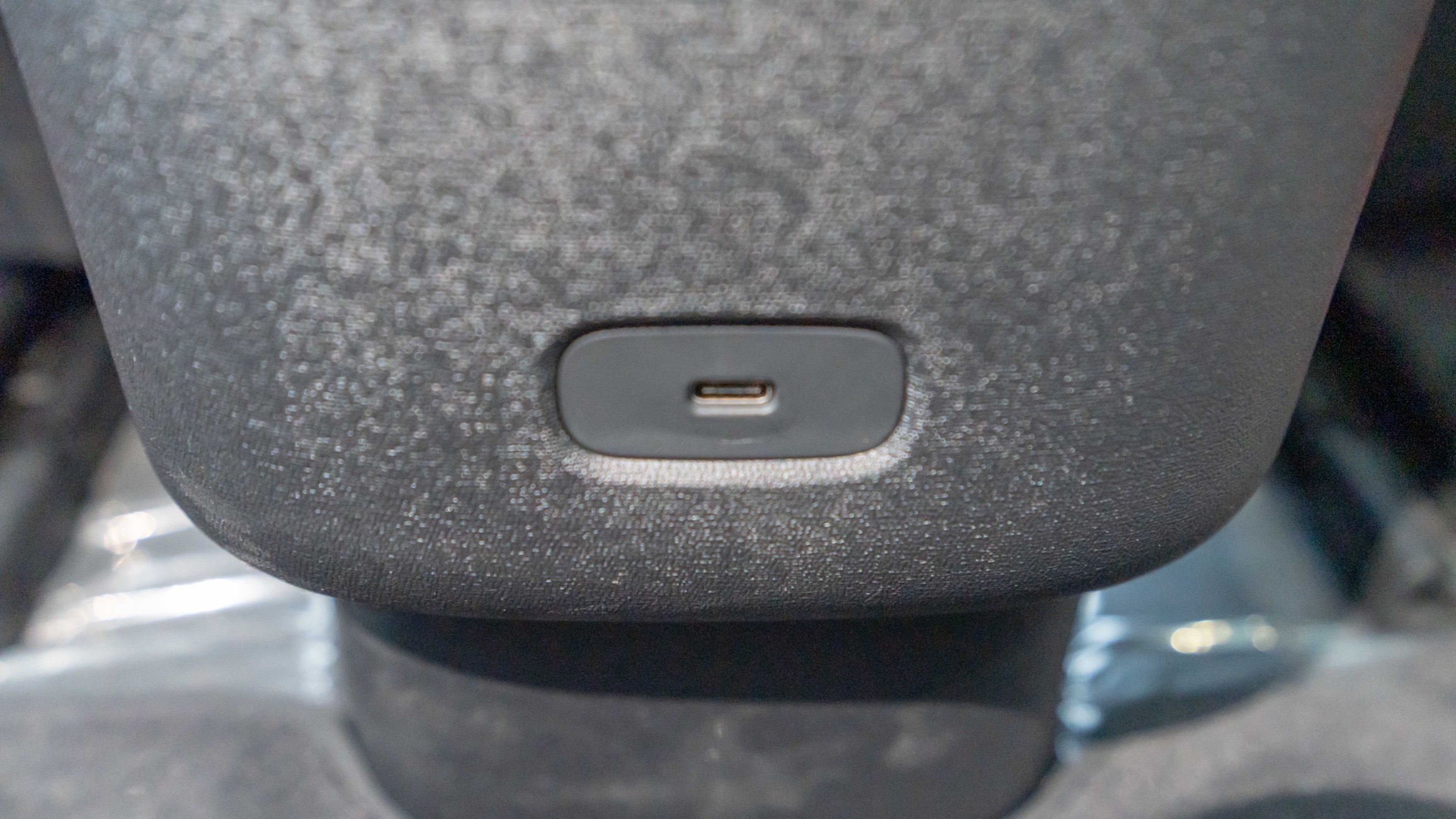
The interface of the child safety seat is hidden under the cushion, which is consistent with most vehicles.
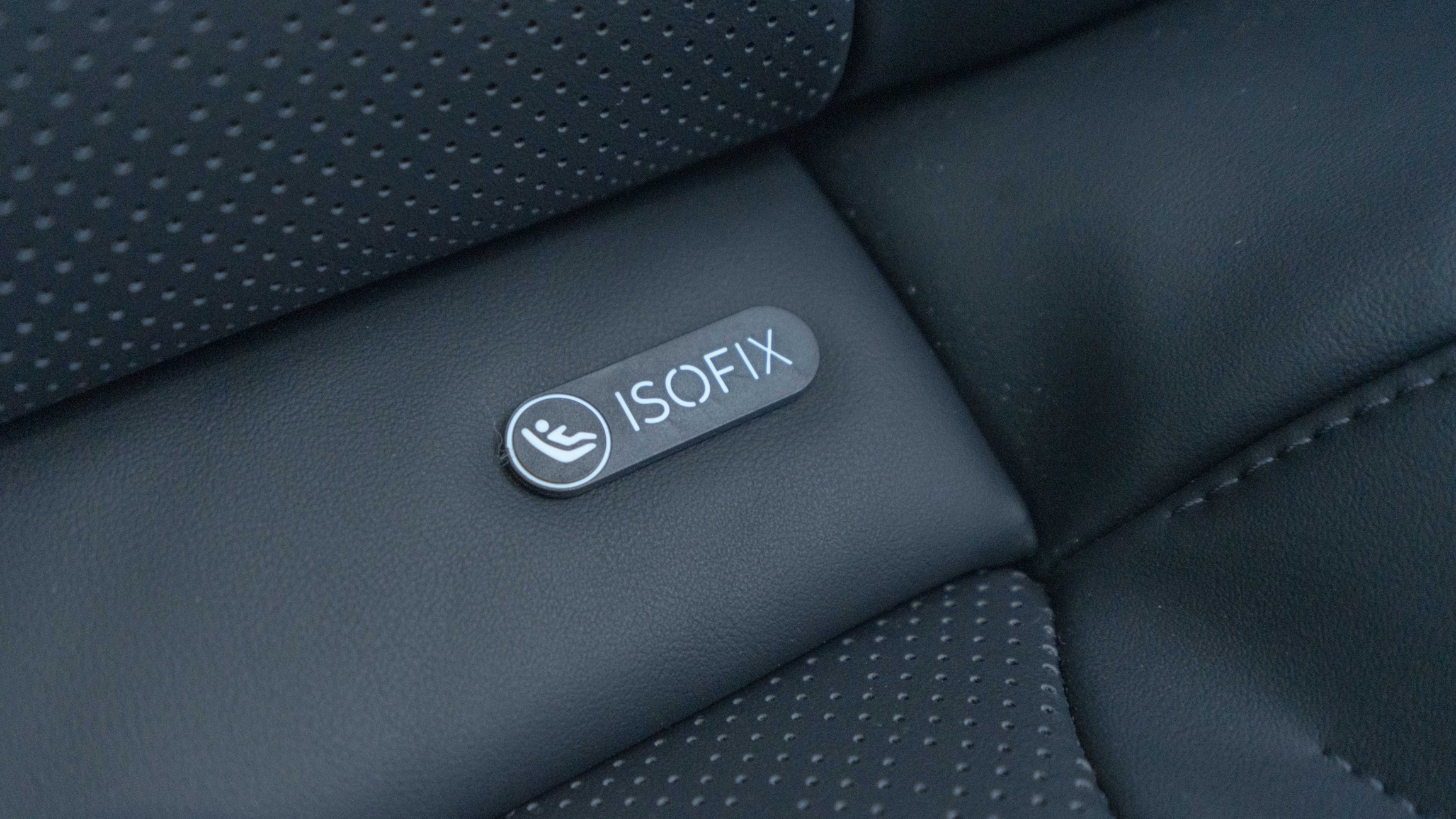

The rear armrest is the same as the 866 model, with only two extendable cup holders. However, the advantage is that the backrest of the central seat is softer, so it will not be too uncomfortable when emergency sitting.
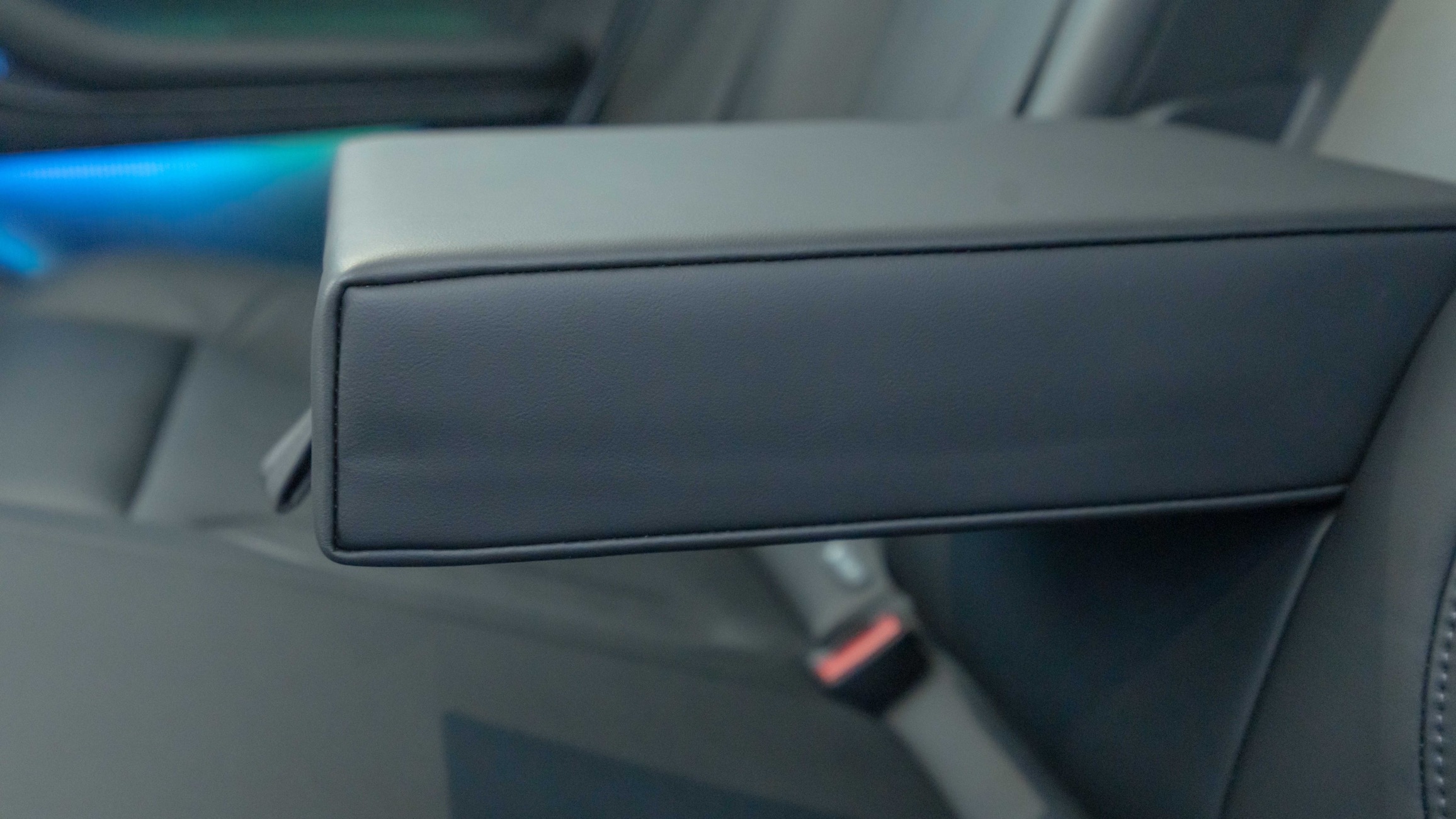
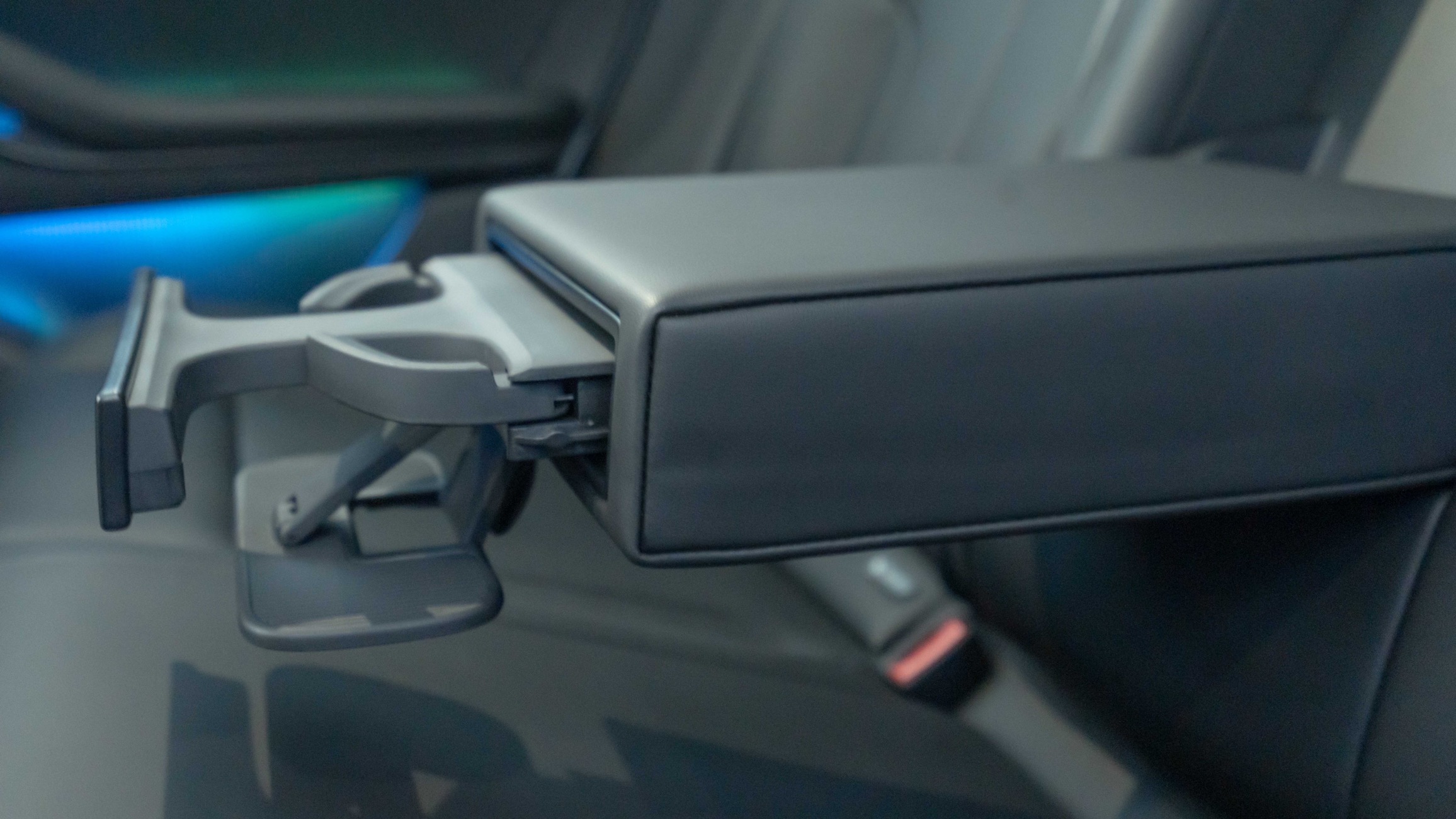
The storage space in the rear door panel is slightly smaller and can only hold two bottles of mineral water.
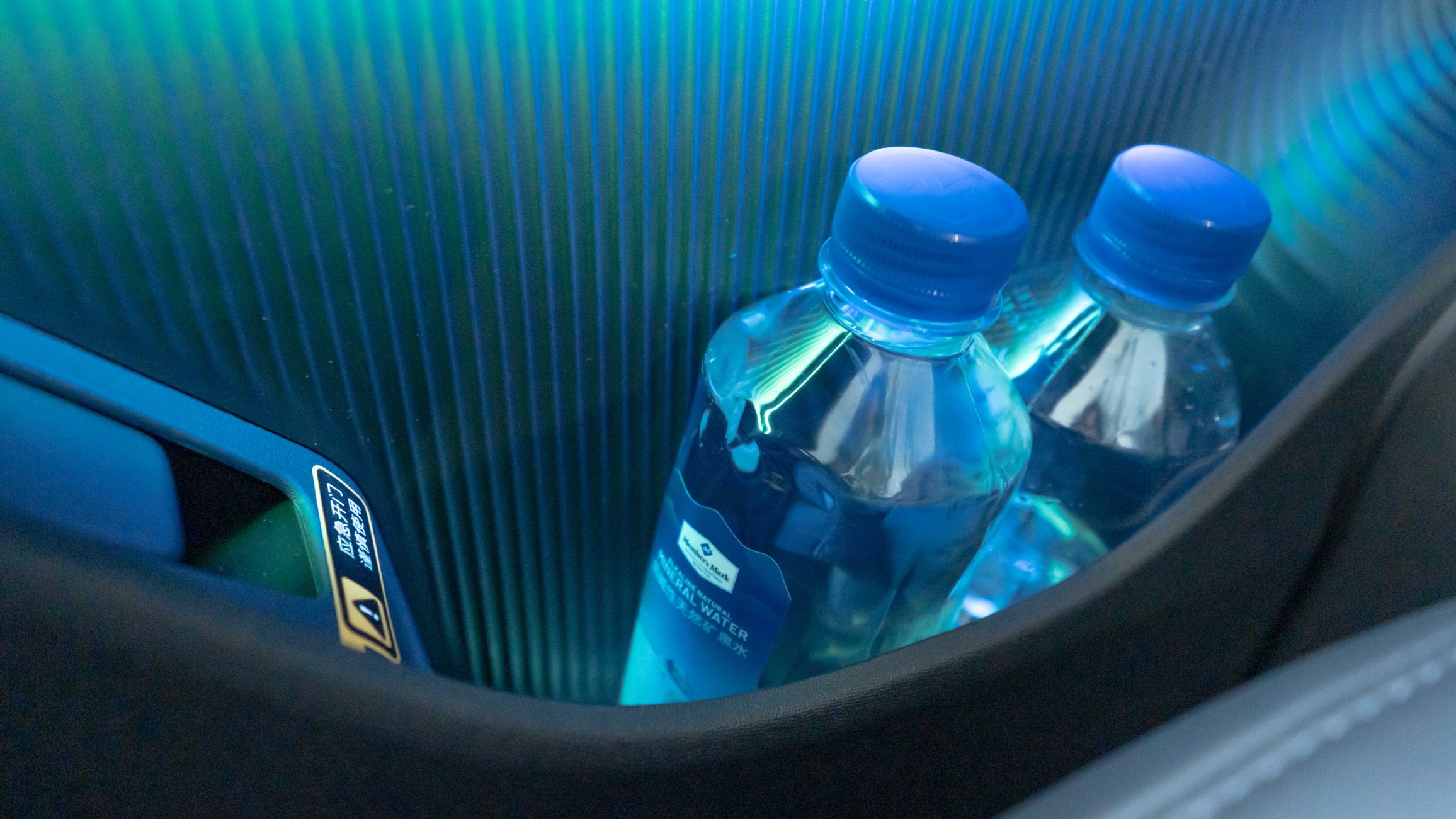
There are sky channel speakers on the front and rear left and right ceilings, and the voice control microphone is also hidden here. However, like the Model 3, there are no top handles in the ET5.
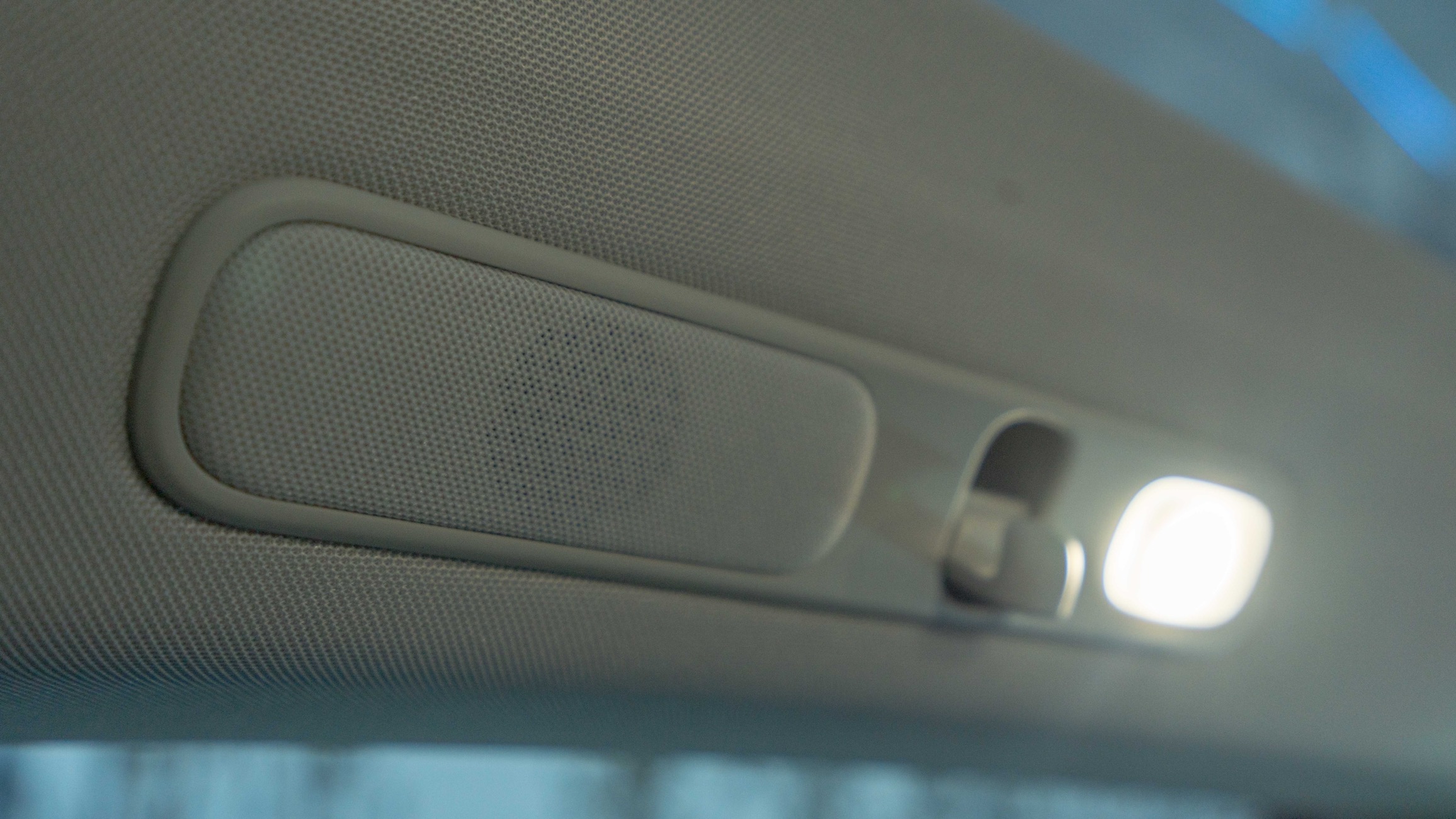
Now let’s talk about the ambient lighting inside the car, which looks very good overall. I will put in several pictures for everyone to feel it themselves.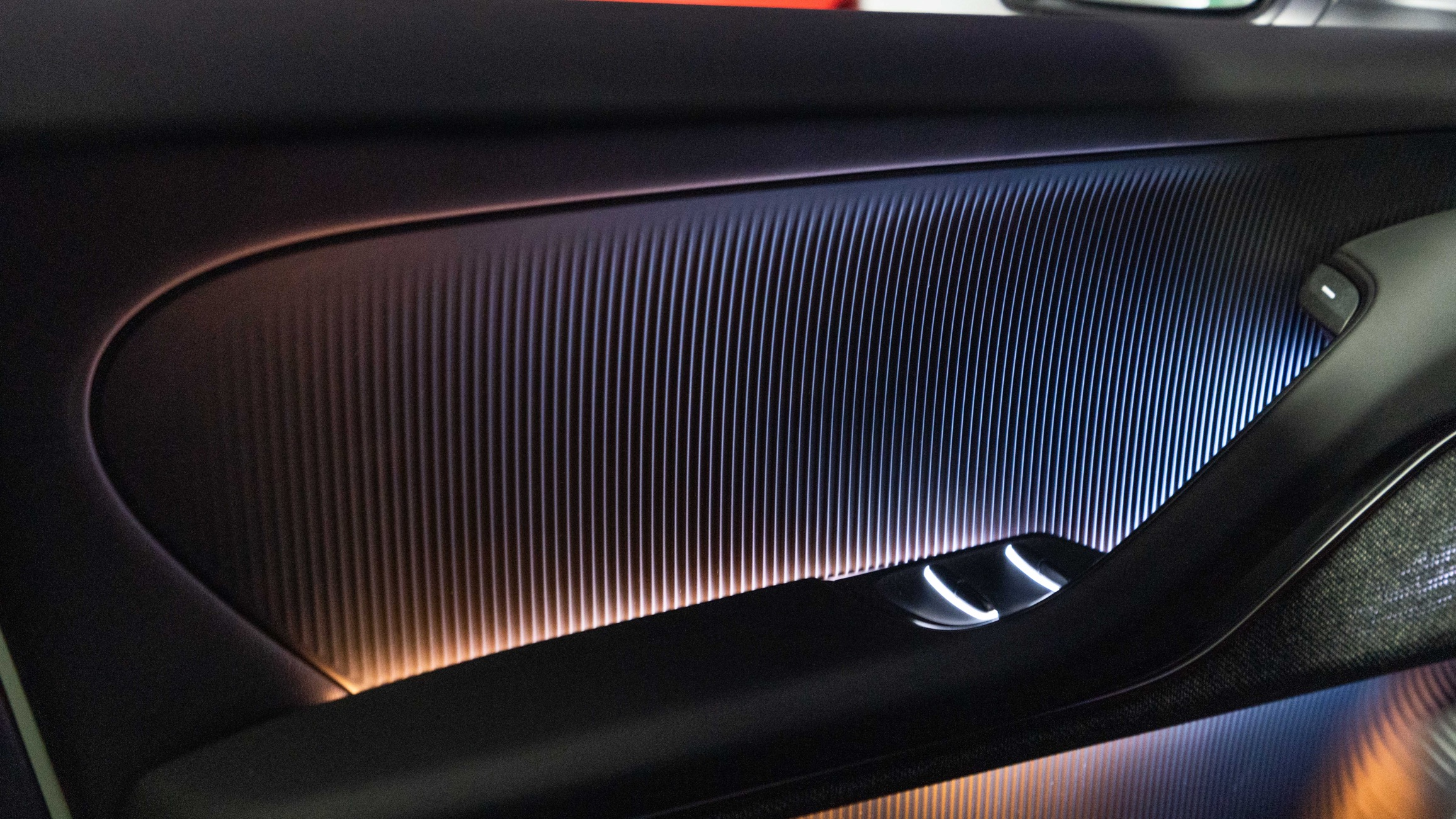

NIO also provides users with a variety of ambient light colors to choose from in the car’s infotainment system, which should be very popular among young people.

The only thing that we want to comment on is that the ambient light strip on the car door is exposed. Our editorial department has different opinions on this. Do you think that an exposed light strip is a style commonly seen in auto parts stores?
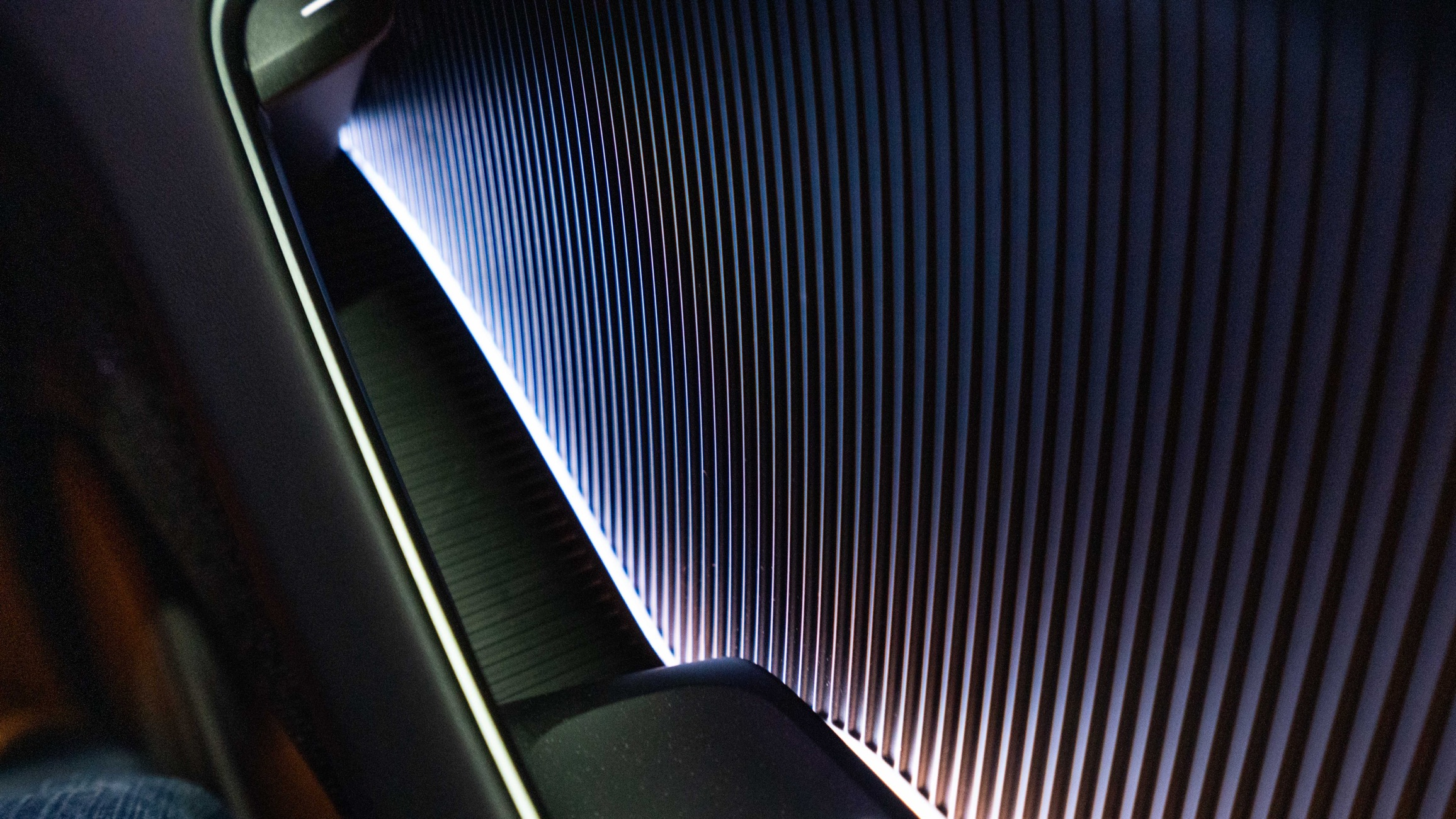
Finally, let’s talk about the trunk. The trunk of the ET5 has a similar opening style to the ET7, but in terms of space, both the width and depth are not very large.
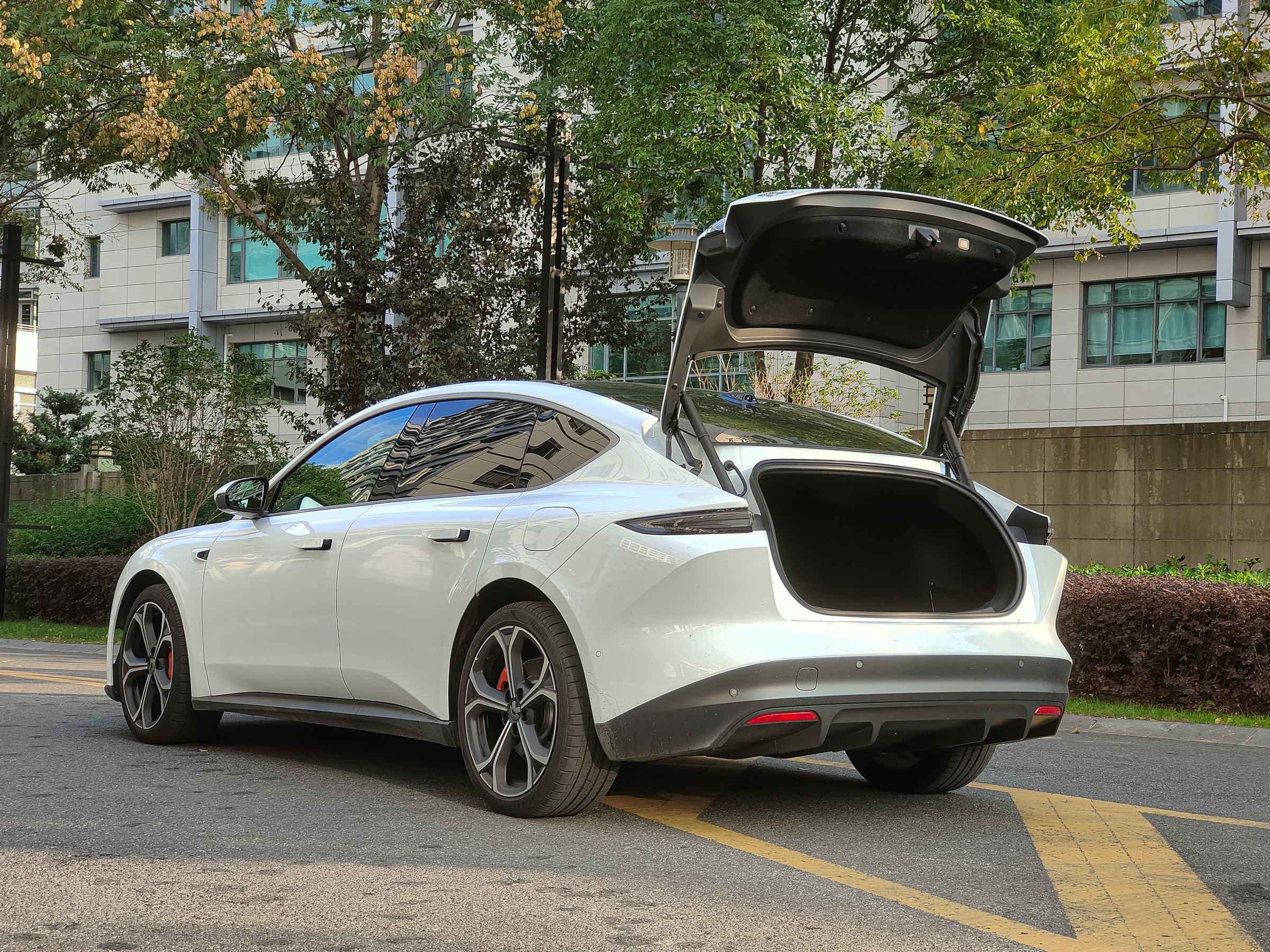
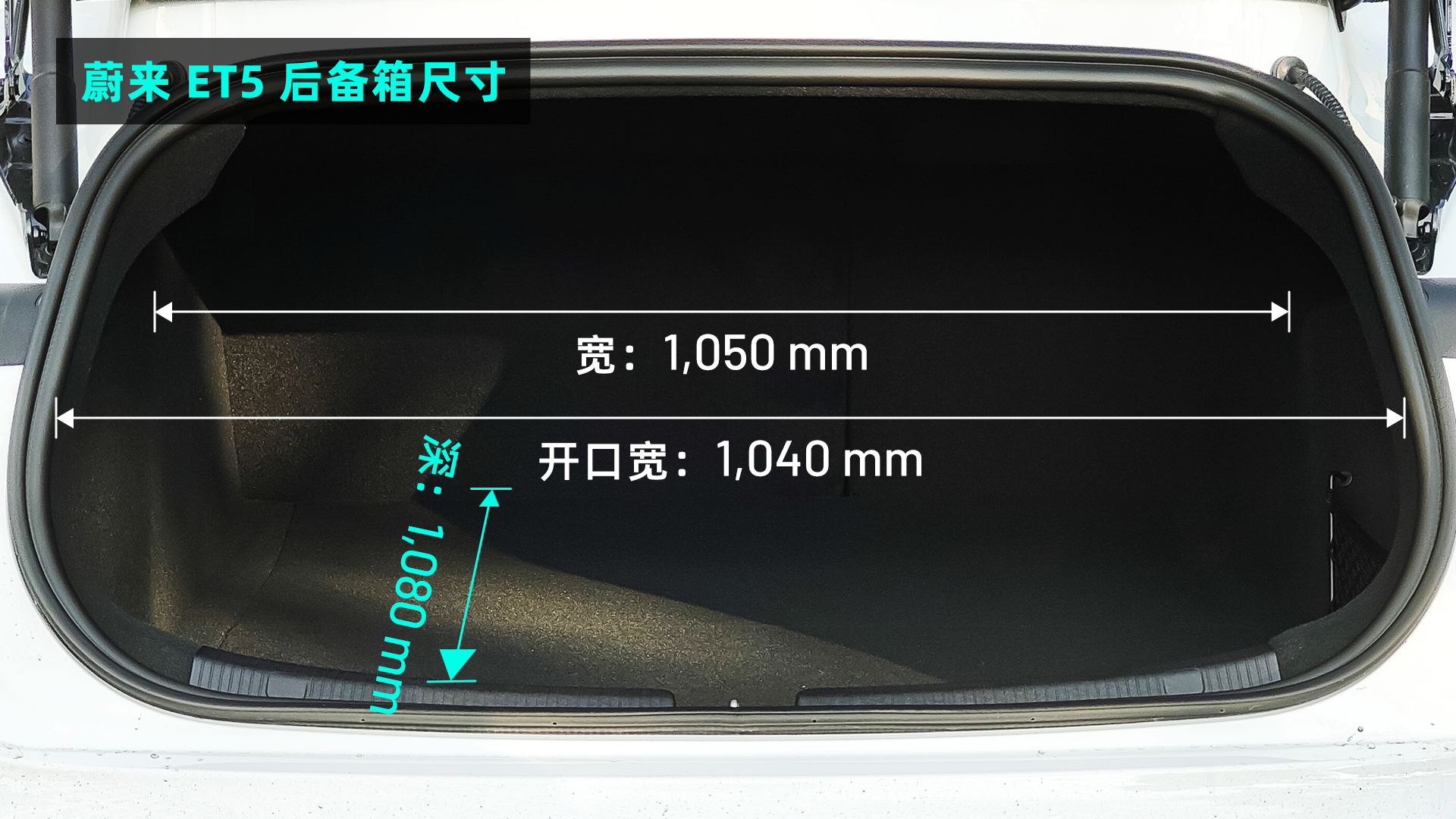
Fortunately, the rear seats are foldable in a 4/6 ratio, which can be handy when transporting a larger number of items. Also, like other NIO models, this car doesn’t have a front trunk.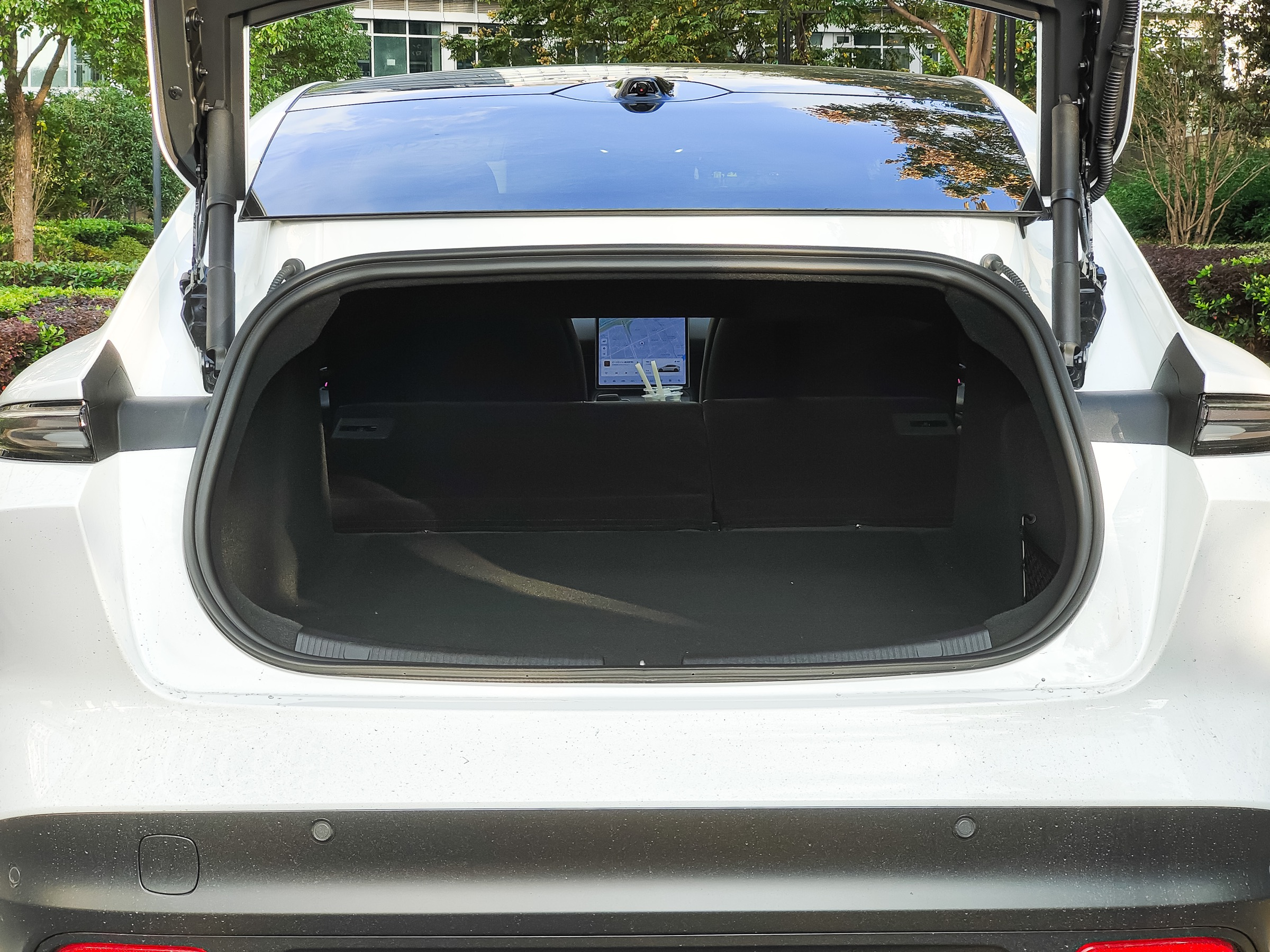
There is another car charging port on the left side of the trunk, and a net is on the right side. The trunk light is placed on the top of the trunk, but the brightness is not high.
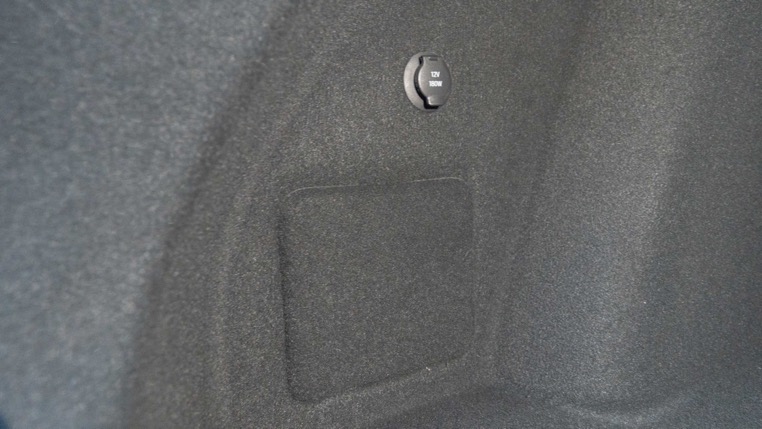
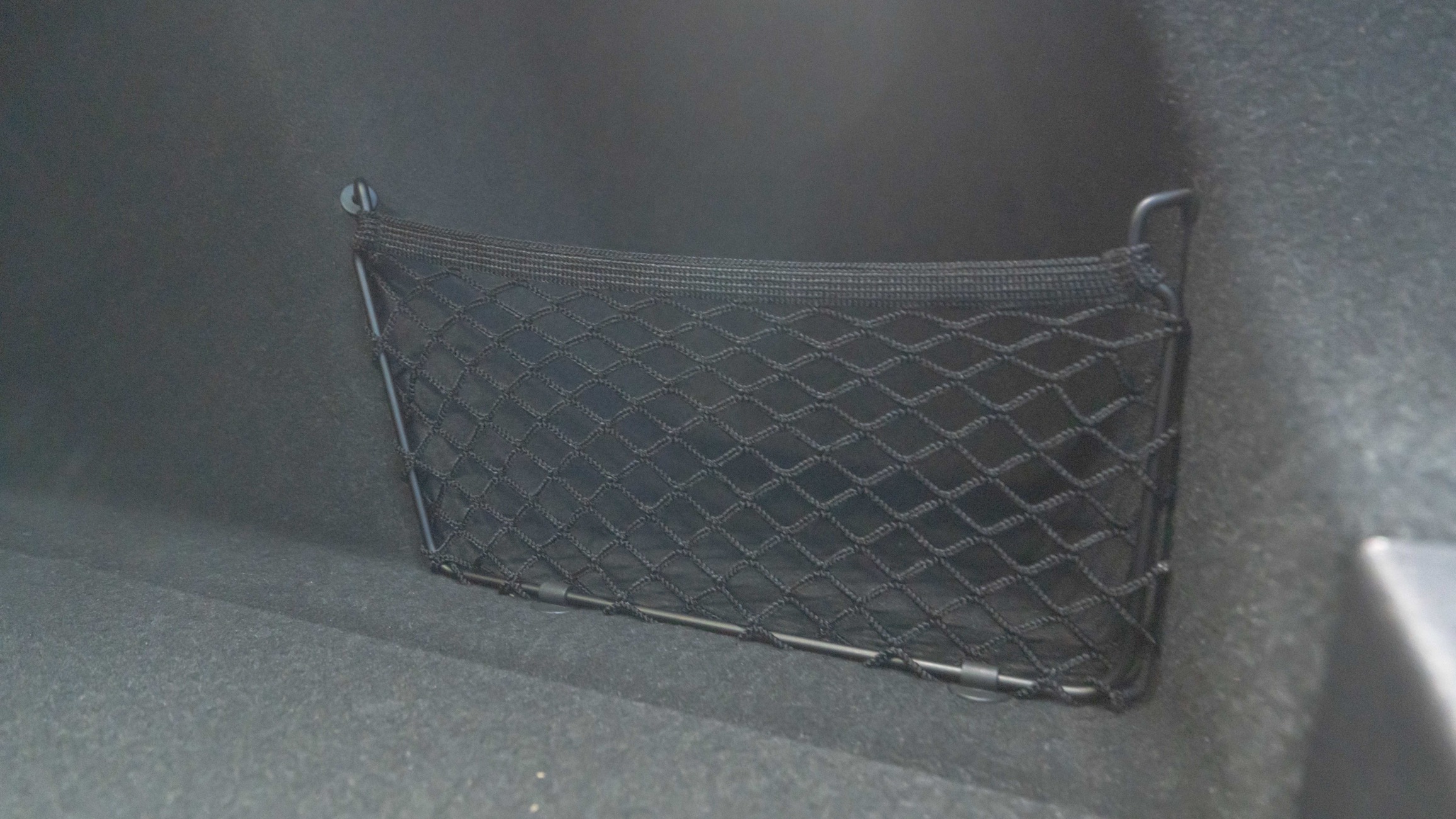
Lifting the bottom partition, the left side is a position for placing a tool kit, and the right side is a speaker unit with a sign prohibiting disassembly above.
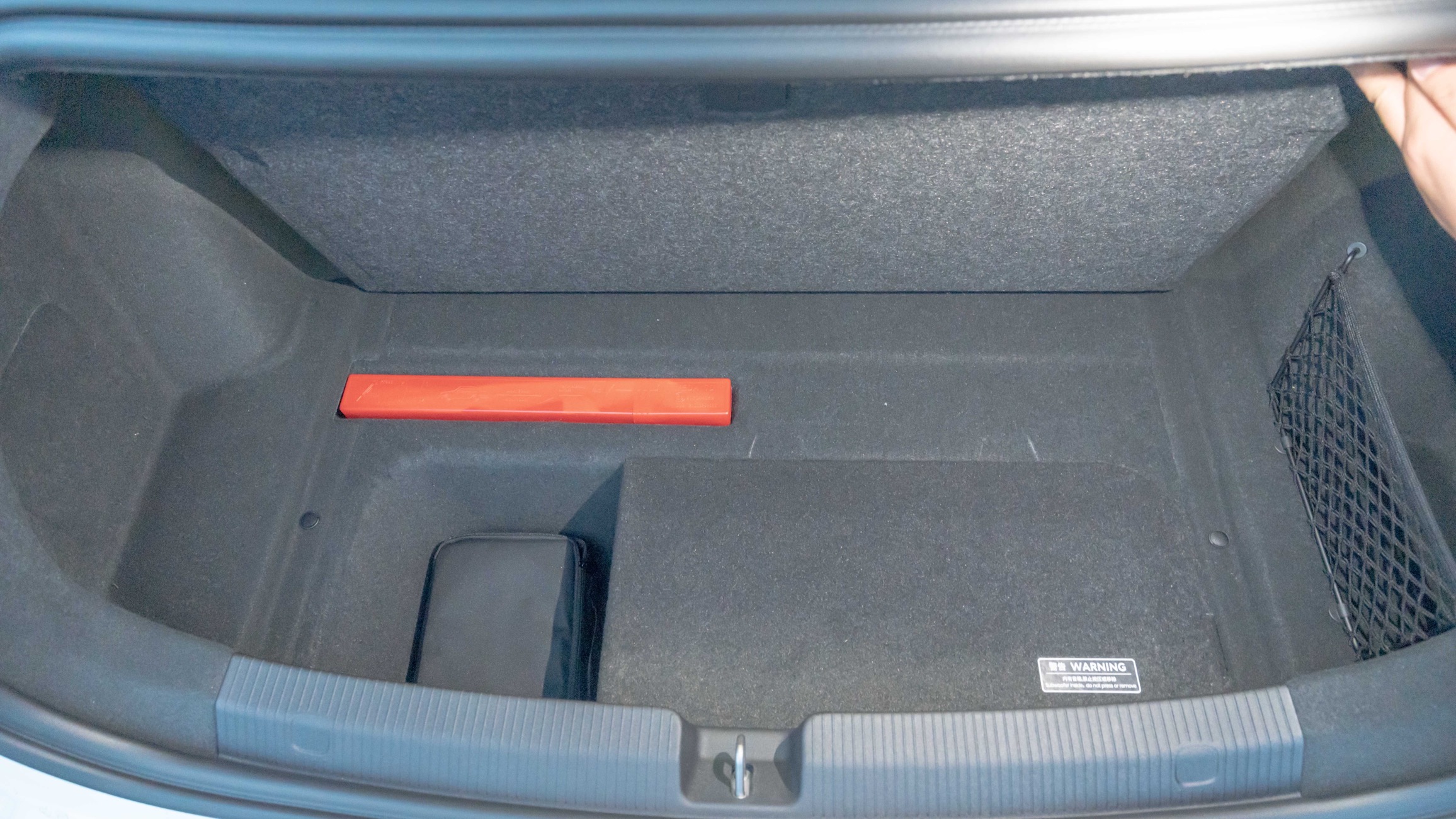
So much for the introduction of the interior of the NIO ET5. In summary, the ET5 interior has similarities with the ET7, many places that young people like, and places where visible configurations are reduced.
ADAS
Strictly speaking, ADAS is not within the testing scope of 42Test, but I have used ADAS for more than 200 kilometers on the highway and outer ring road in the past three days, so I can talk about it briefly.
Whether it is ET7, ES7 or ET5, the ADAS hardware of the NT 2.0 platform models is completely consistent. The vehicle has a total of 33 perception hardware, including:
- One 1,550 nm lidar with a horizontal viewing angle of 120°, a maximum resolution of 0.06° x 0.06°, and a farthest detection distance of 500 meters;
- Seven 8 million pixel ADAS cameras.- 4 300-megapixel surround-view cameras;
- 1 DMS camera;
- 5 millimeter-wave radars;
- 12 ultrasonic sensors;
- 2 high-precision positioning units and V2X vehicle-to-road coordination;
- 4 Orin chips with a total computing power of 1,016 TOPS.

Due to identical hardware, the actual performance of ET5 ADAS is almost identical to that of ET7, but the ET5 currently does not have the updated Navigation Assisted Driving feature and only has basic Lane Keeping and Turn Signal Assistance, for specific performance refer to this article, ET7 Basic ADAS Test Report.
Finally, an additional difference from ET7 is that when Lane Keeping is activated, the ET5 will frequently make slight left-right corrections even if driving straight, I am not sure if this is due to the current software version not being optimized well, and hope that NIO will optimize this minor issue soon.
Conclusion
At this point, it’s time to answer the original question: is the ET5 a replacement for the ET7? You could say it is or you could say it isn’t.
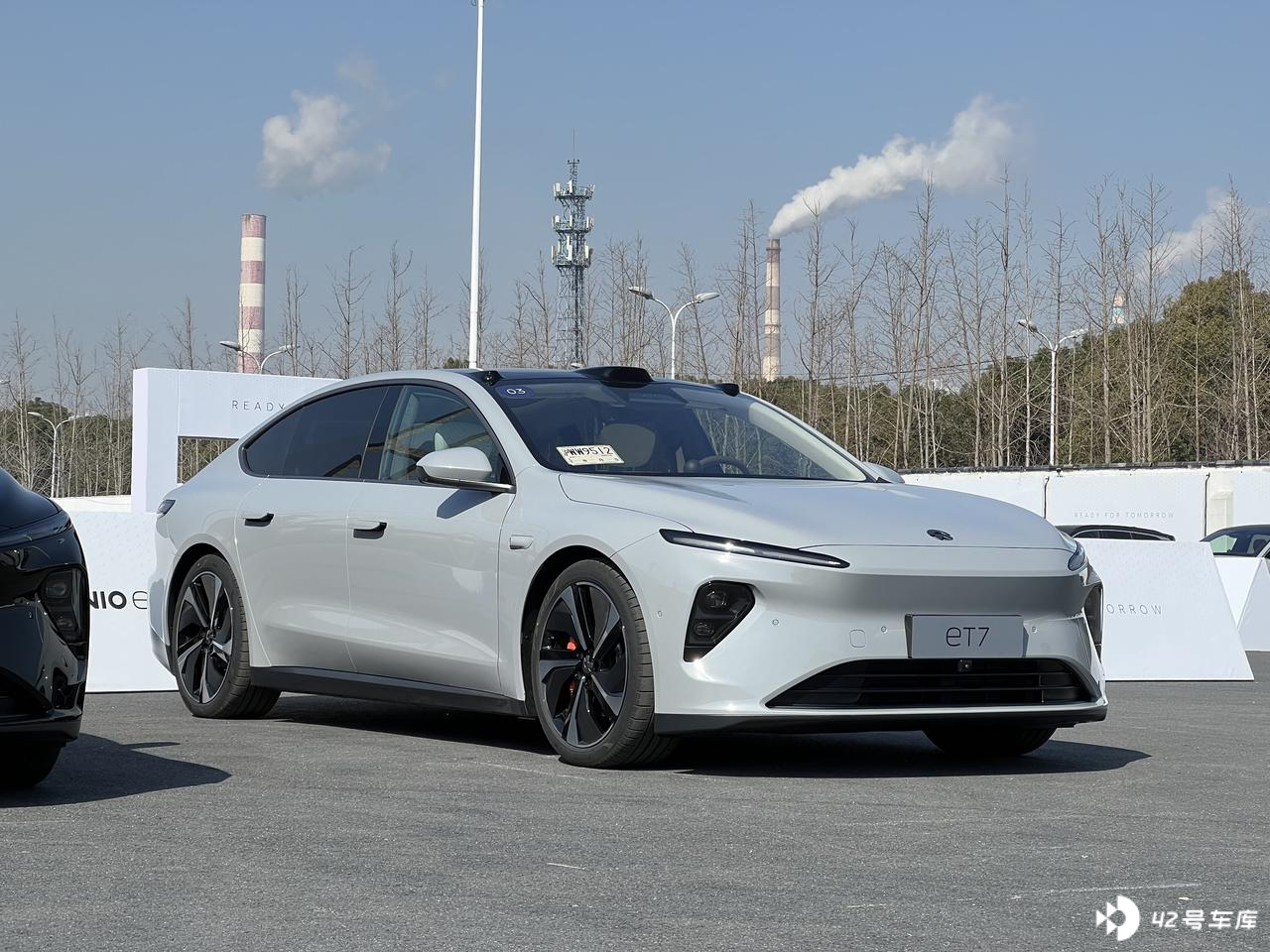
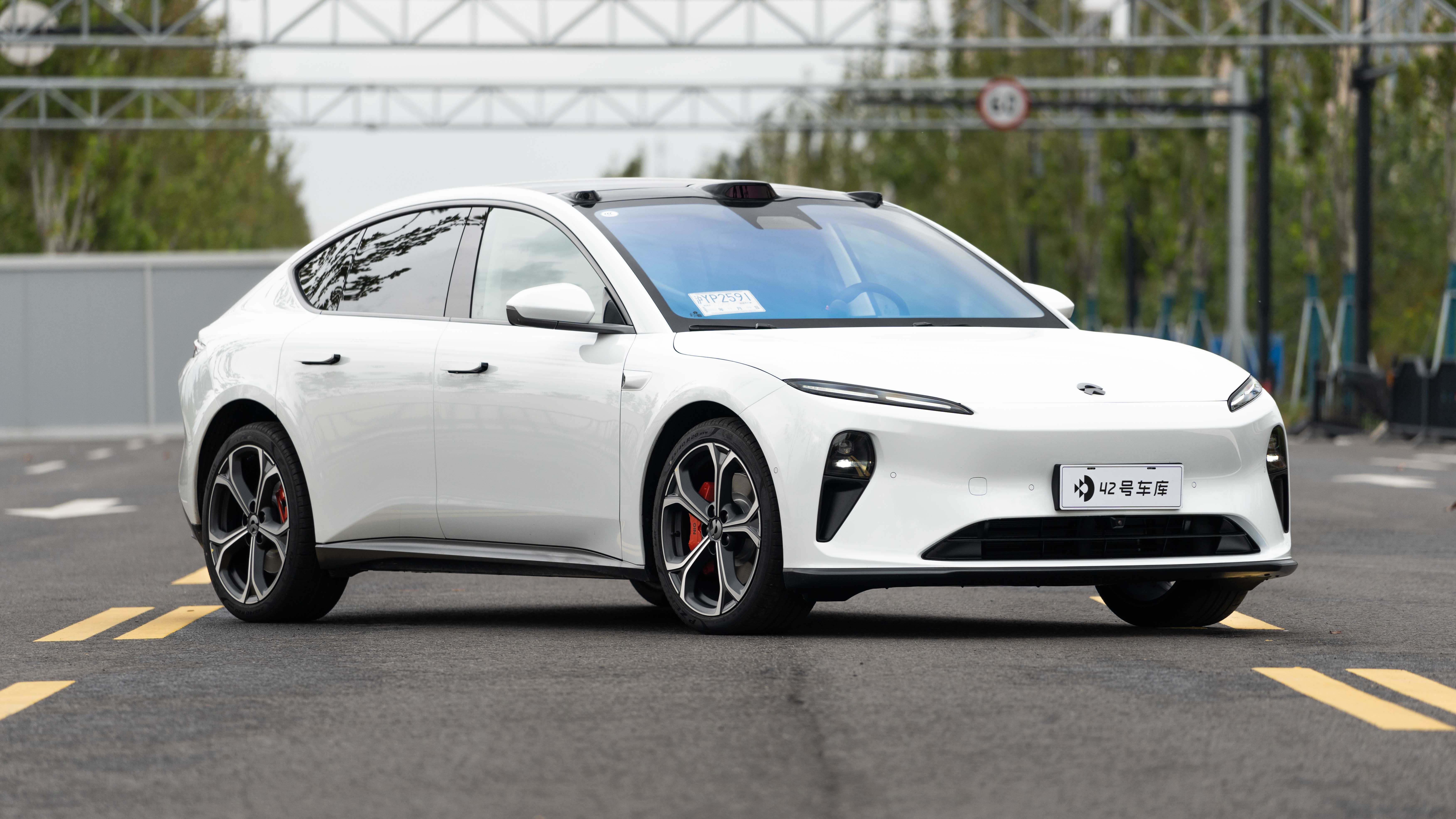 As a sports sedan, the ET5 is undoubtedly remarkable. With a fastest 3.75-second 0-100 km/h acceleration and the shortest 30.73-meter 100-0 km/h braking distance, it’s an impressive performance even among sports cars. Additionally, with the best suspension and chassis tuning among NIO models, it boasts exceptional handling during intense driving.
As a sports sedan, the ET5 is undoubtedly remarkable. With a fastest 3.75-second 0-100 km/h acceleration and the shortest 30.73-meter 100-0 km/h braking distance, it’s an impressive performance even among sports cars. Additionally, with the best suspension and chassis tuning among NIO models, it boasts exceptional handling during intense driving.
However, the 75 kWh battery may not be sufficient for the ET5. Particularly, when driving on urban roads, the energy consumption can easily exceed 20 kWh/100 km, which means frequent recharging would be required. Nevertheless, when the average speed is over 50 km/h, the energy performance is decent, generally under 18 kWh/100 km.
Thanks to NIO’s inherent advantages in battery swapping and recharging, range anxiety is not a fatal problem for the ET5. Whether to choose the 100 kWh version depends entirely on the user’s needs. At least, in our company, colleagues who have purchased the ET5 have all chosen the 75 kWh version.
Compared to the ET7, although the ET5 inherits its selling points, such as advanced intelligent driving hardware, 1,000 W 7.1.4-channel Dolby panoramic sound system, and the fully electrified doors, its uncomfortable seats for long journeys, unremarkable backseat and trunk space, less luxurious interior, and the absence of an HUD mean that its overall experience is inferior to that of the ET7.
If you’re looking for a sports sedan like the Model 3, or consider the ET5 as the cheapest way to get into the NIO family, then it’s an excellent choice.
However, if you want to spend less money on a sedan that rivals the ET7, the ET5 may not satisfy you. I can see that NIO has given them different missions, which means you won’t get the same experience from them.Here is a detailed guide for ET5 optional configuration that you can refer to according to your needs, if you are ready to make a decision after reading this: NIO’s ET5, the Car with the Most Interior Options? A Comprehensive Guide to All Optional Configurations.
As someone who once considered replacing my NIO ET5, I felt the same reluctance when returning it to its original owner as I did when giving back the Mustang Mach-E GT. Although I may not purchase them, if I have the chance to test drive them again in the future, I would be more than happy to put my P7 “in the cold palace”.
This article is a translation by ChatGPT of a Chinese report from 42HOW. If you have any questions about it, please email bd@42how.com.
